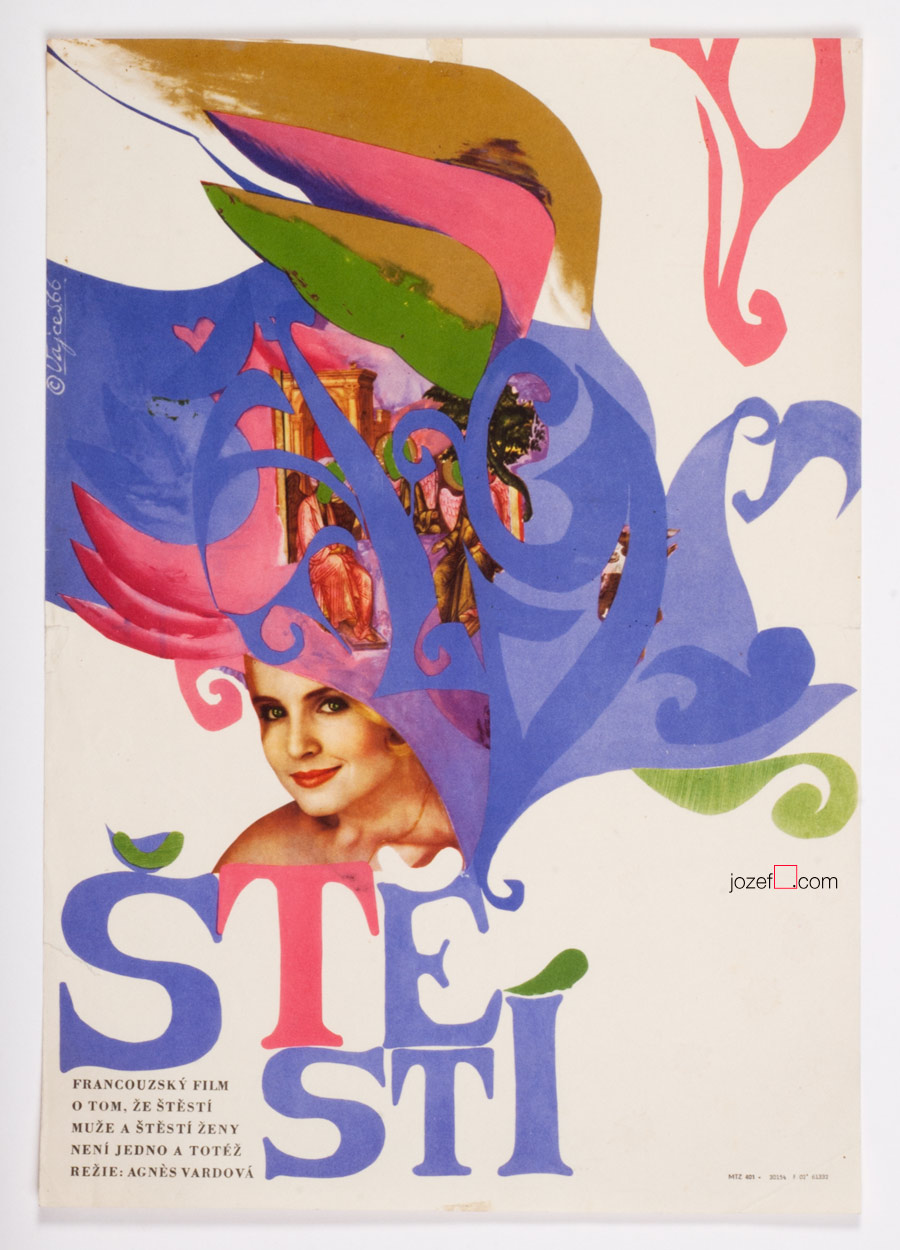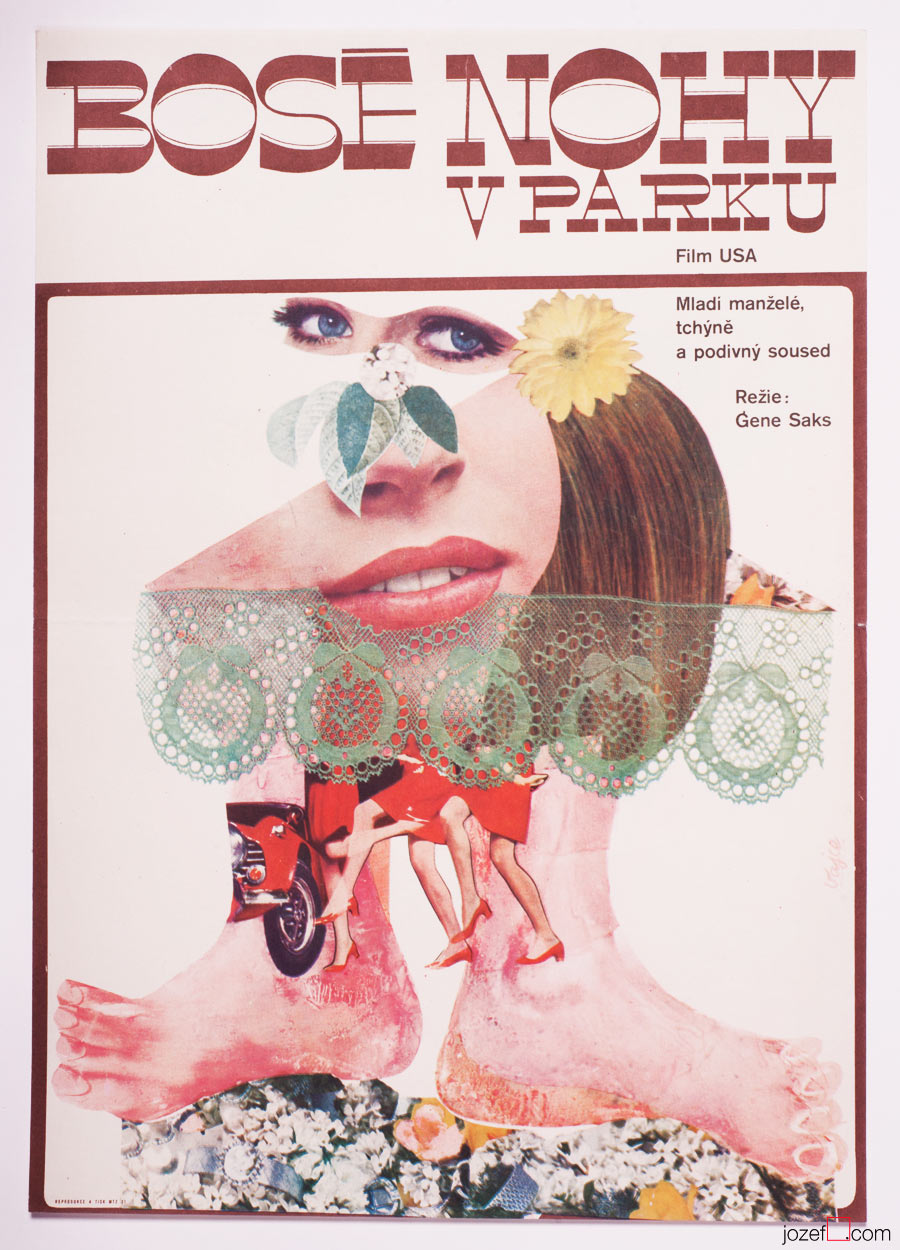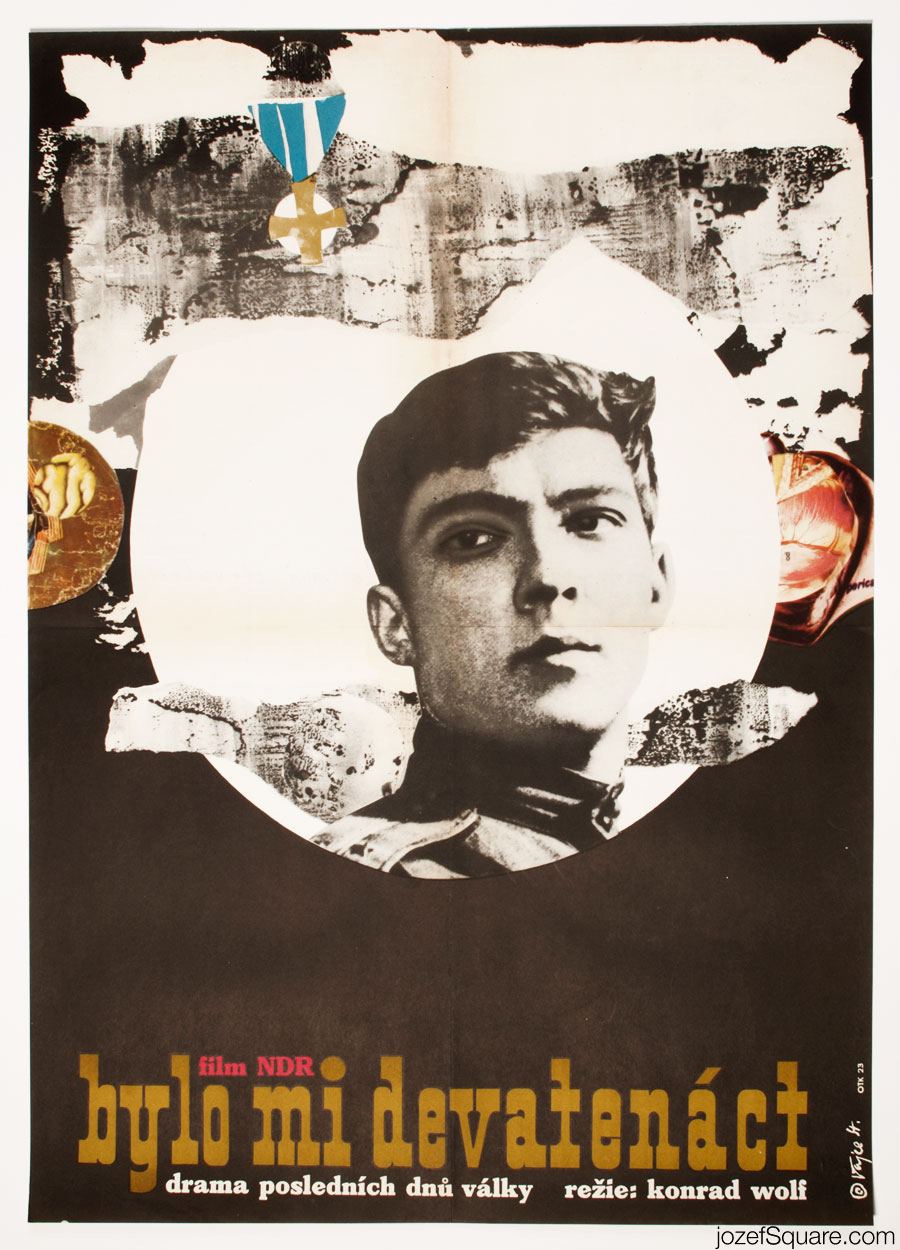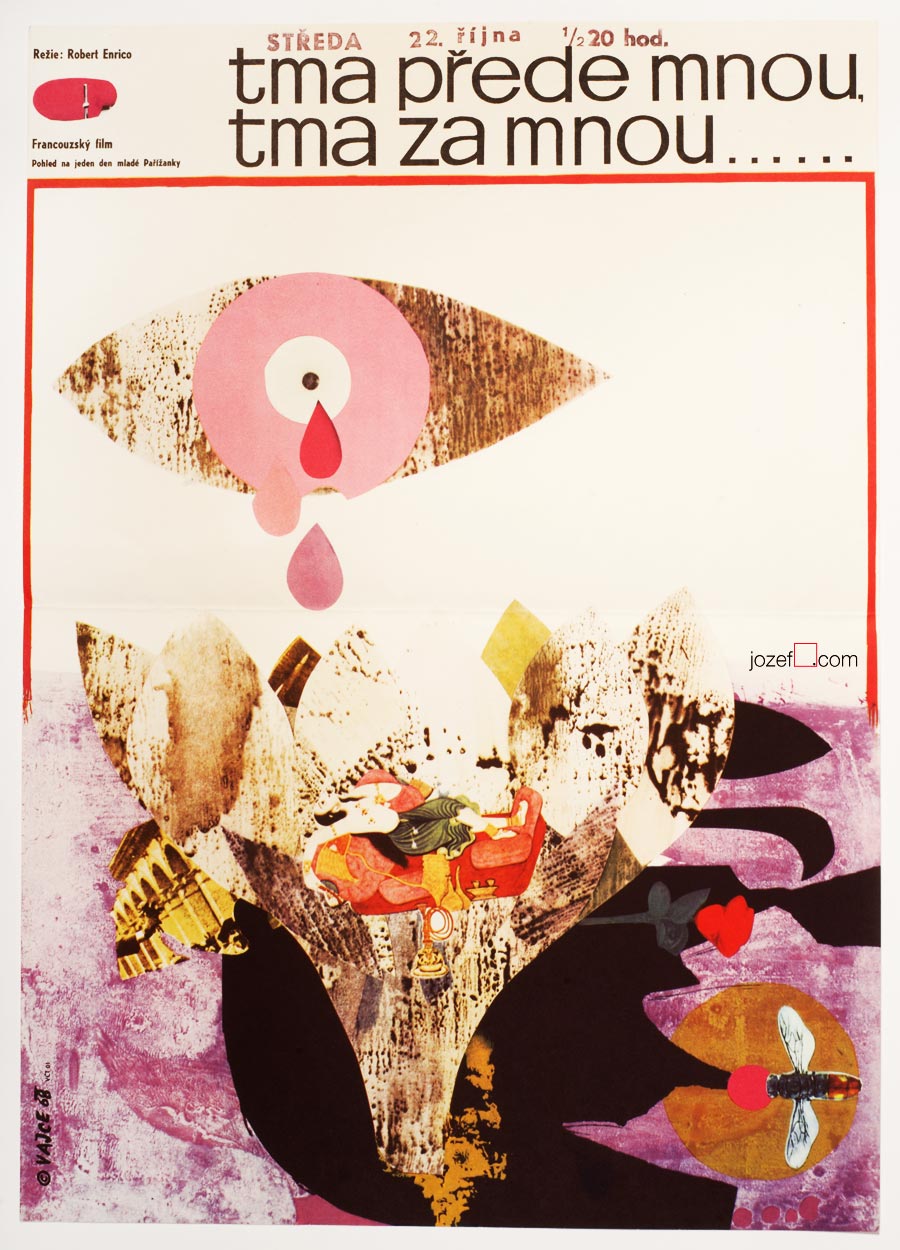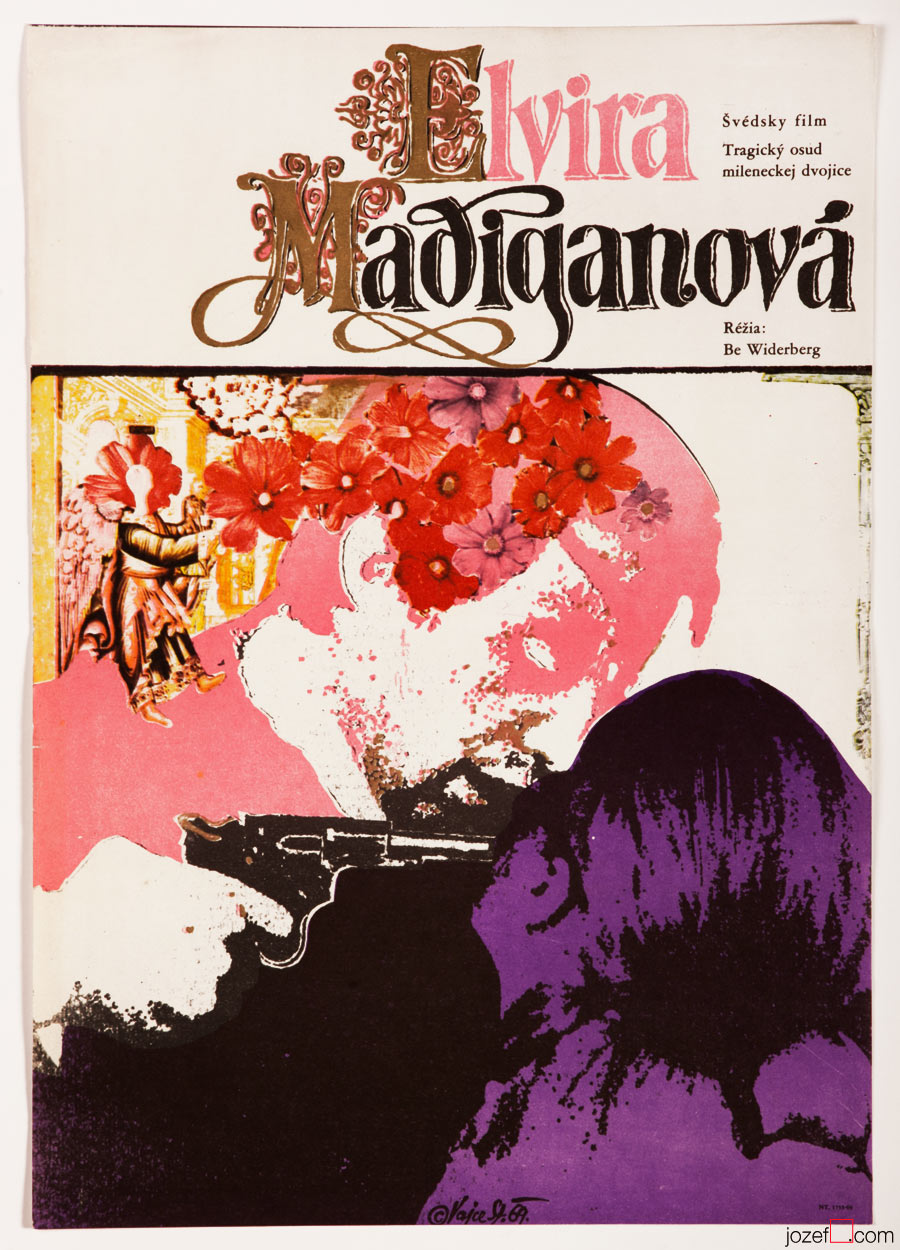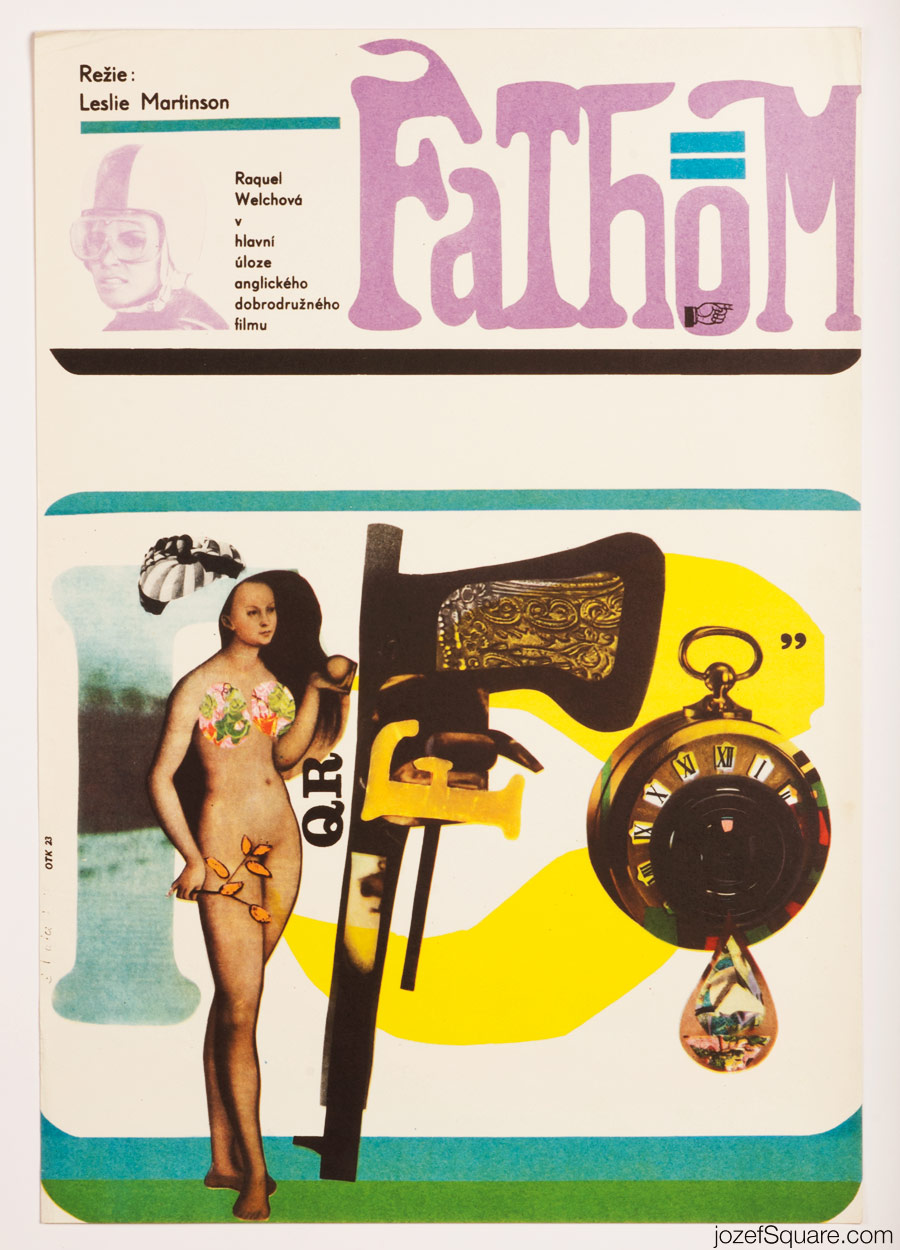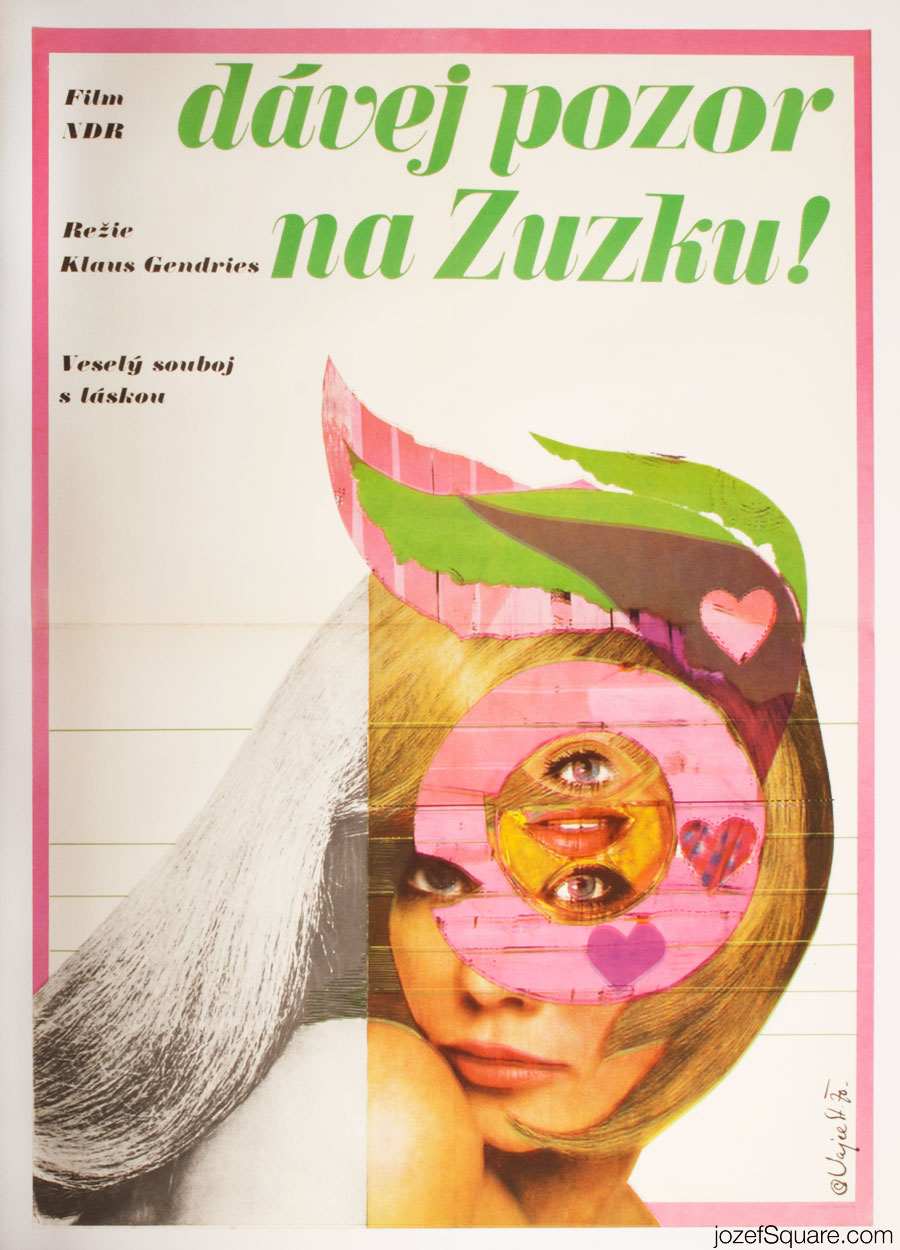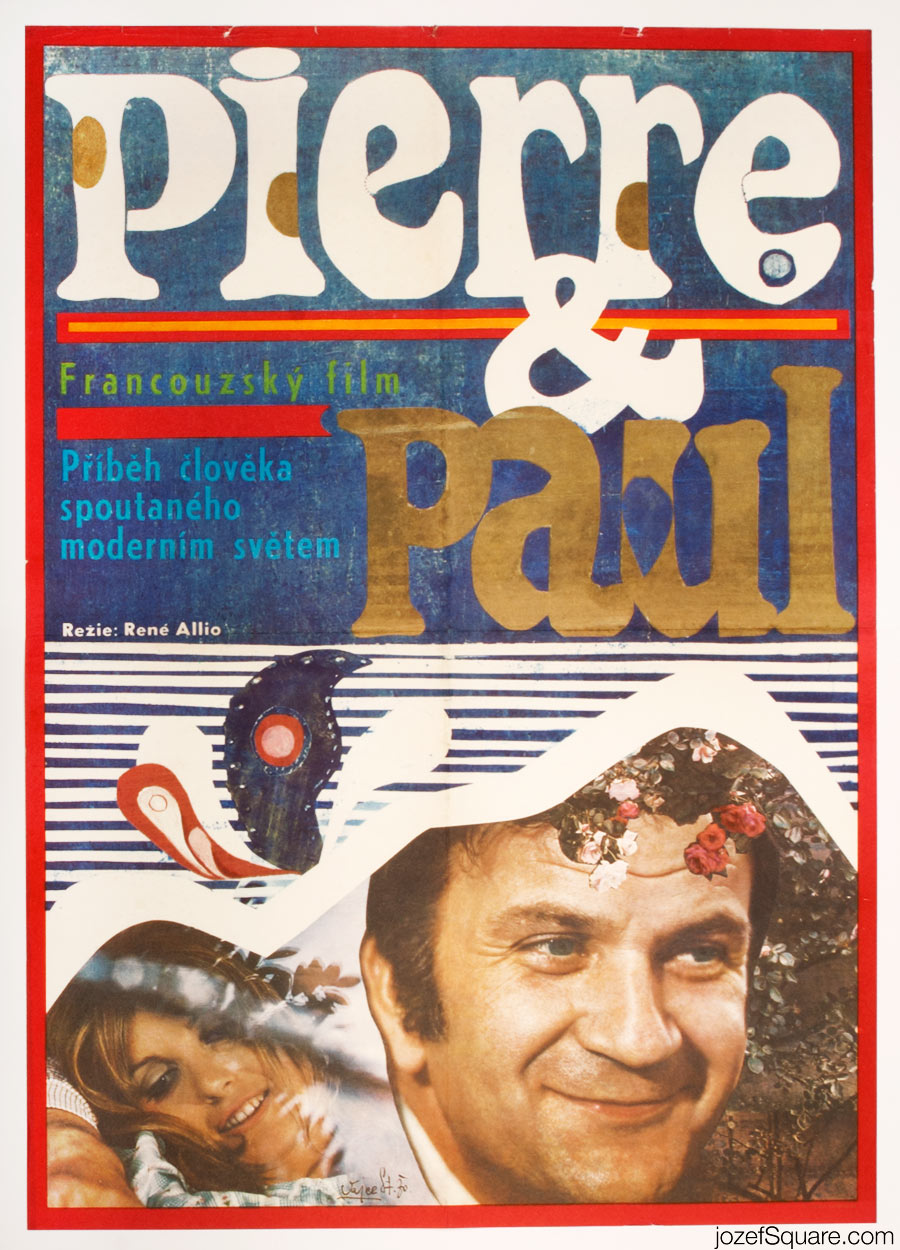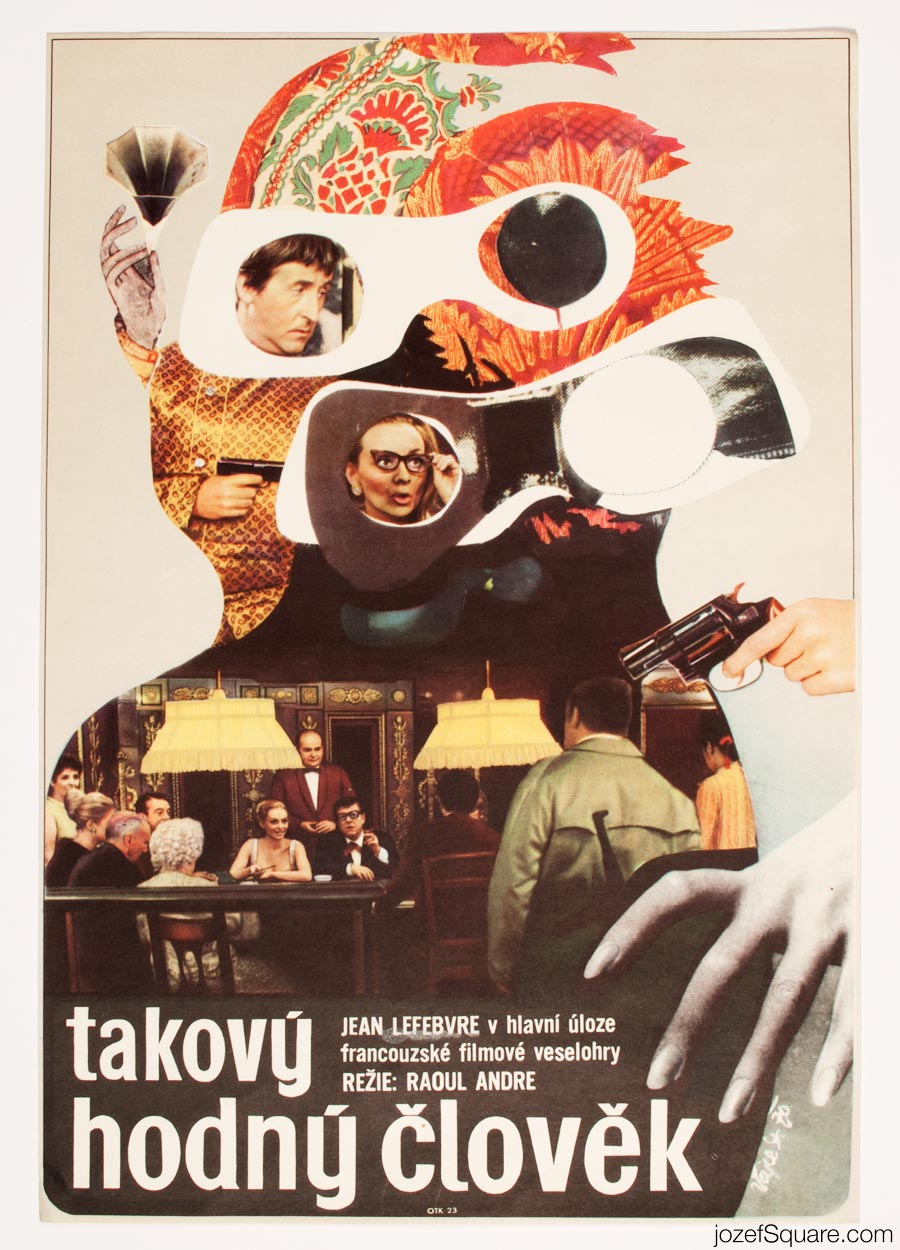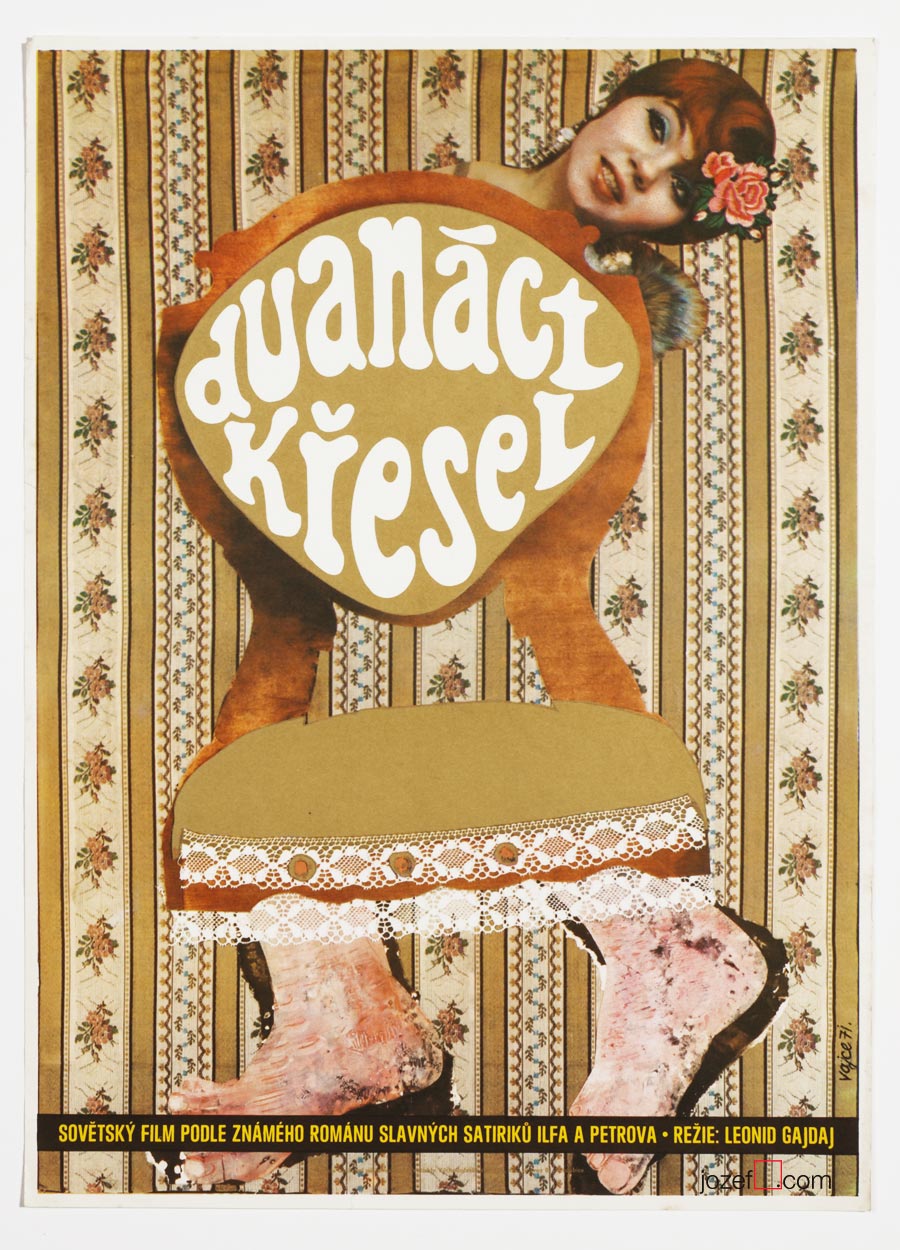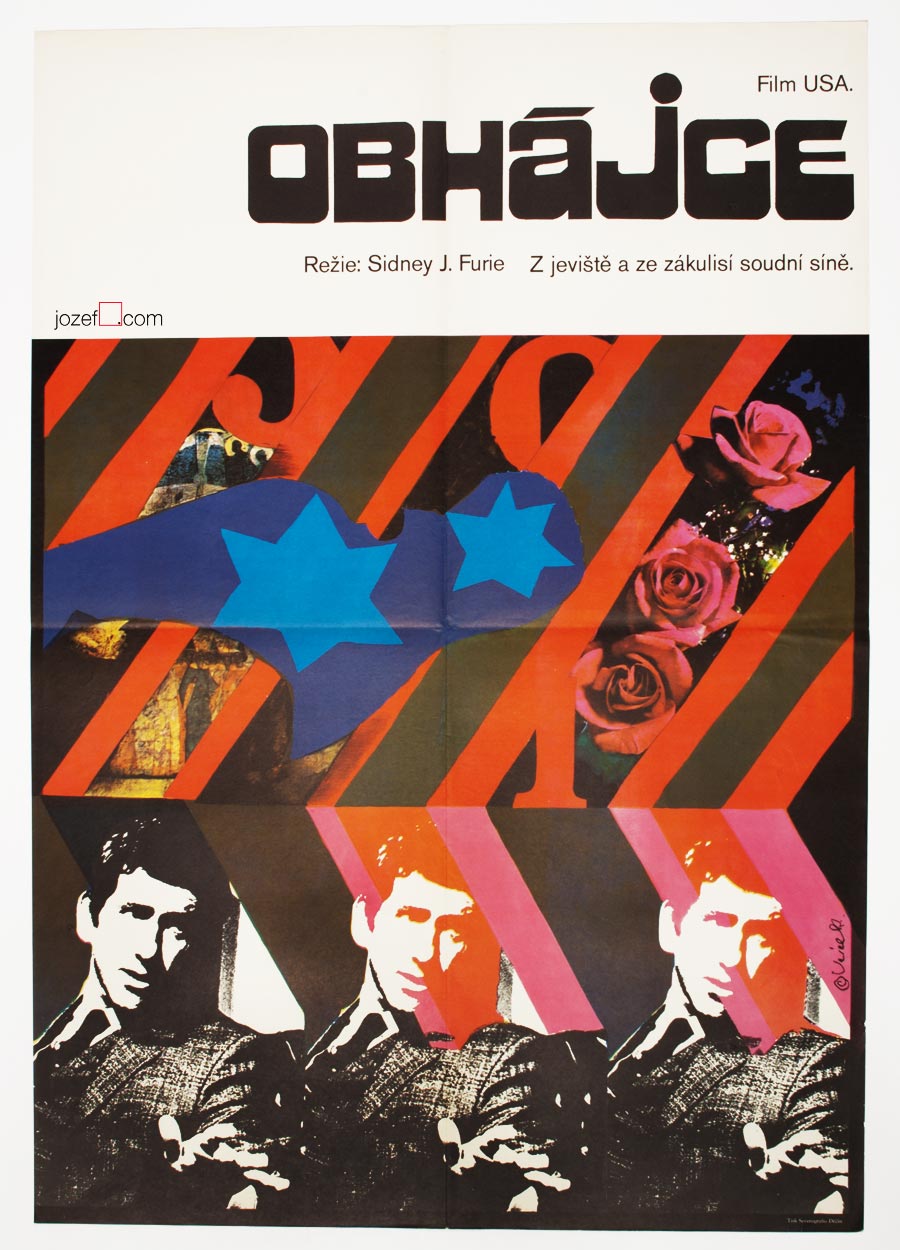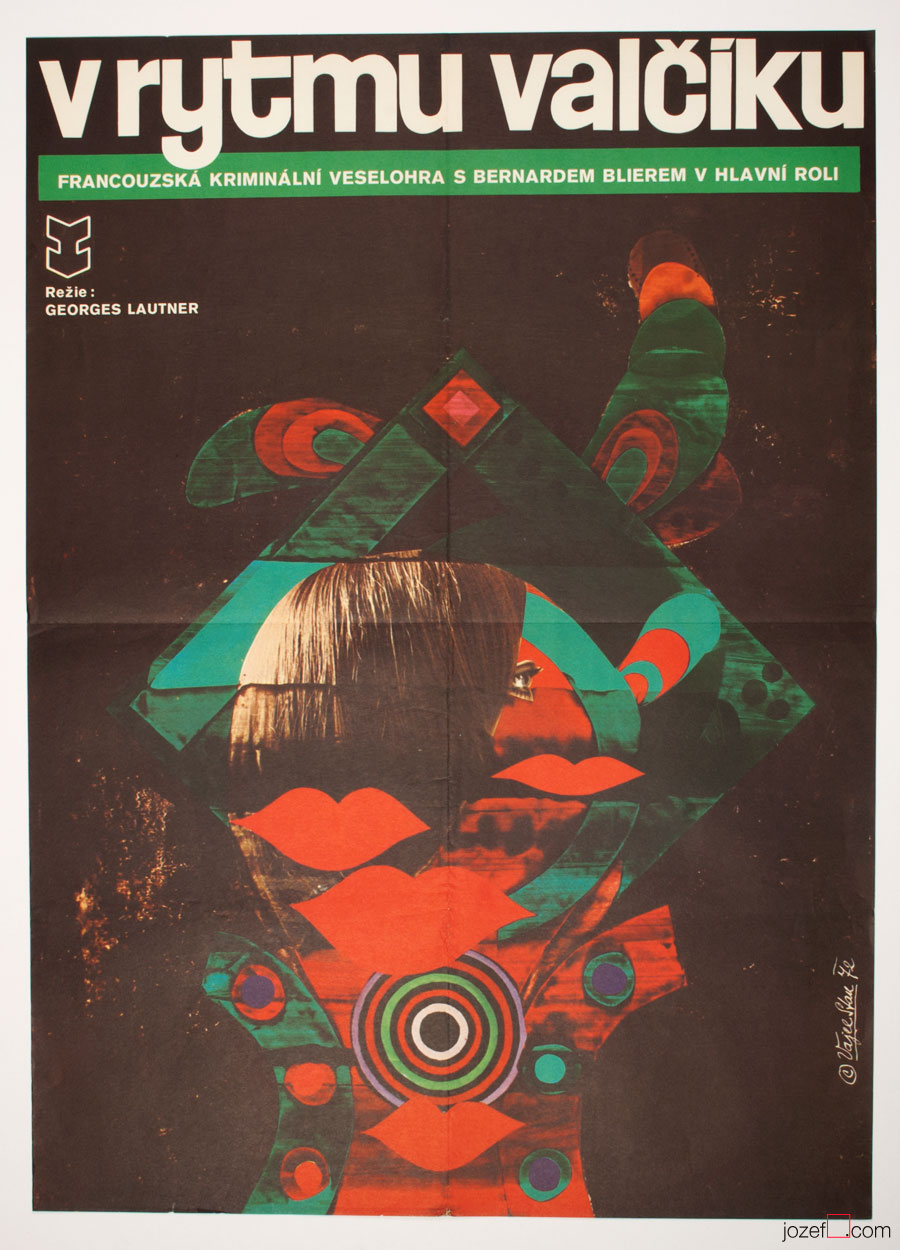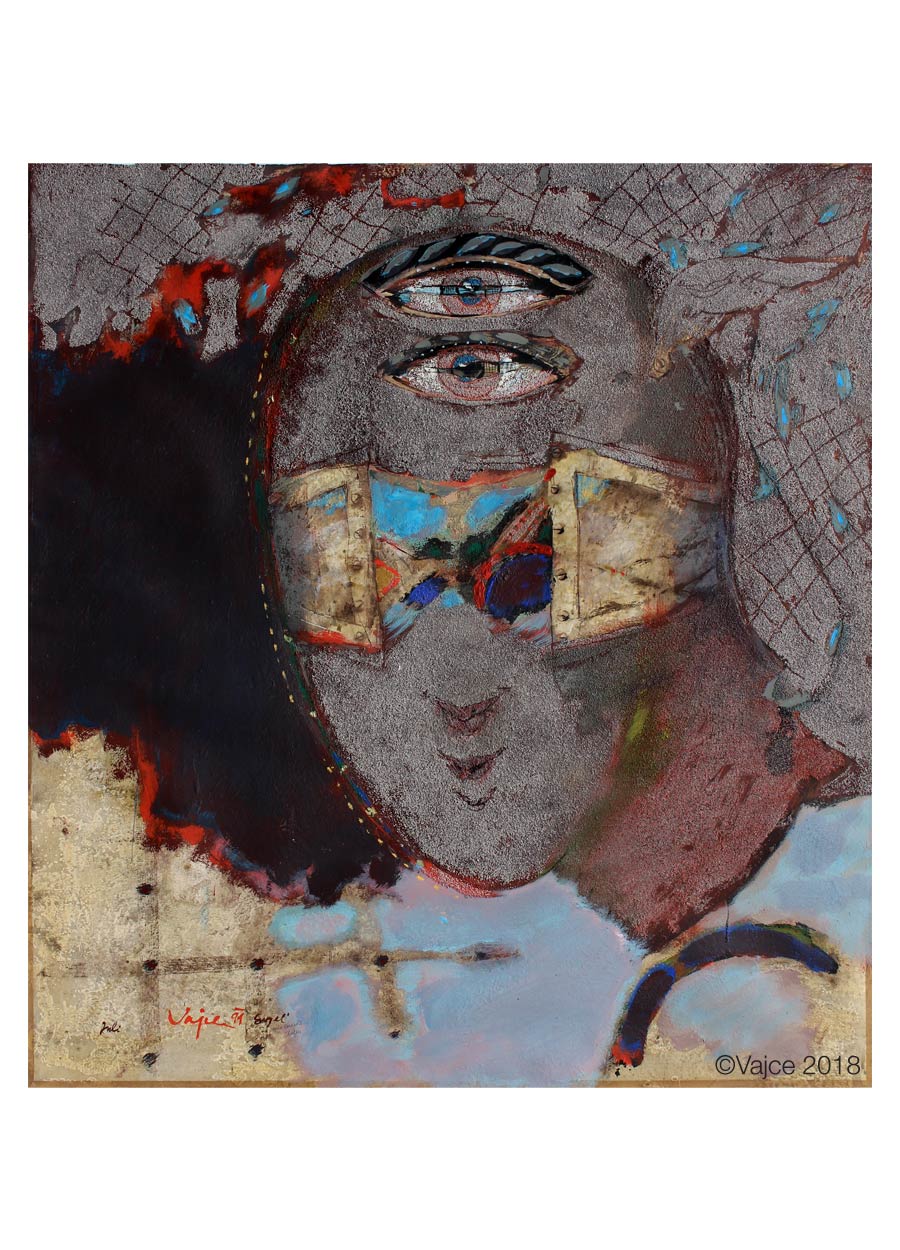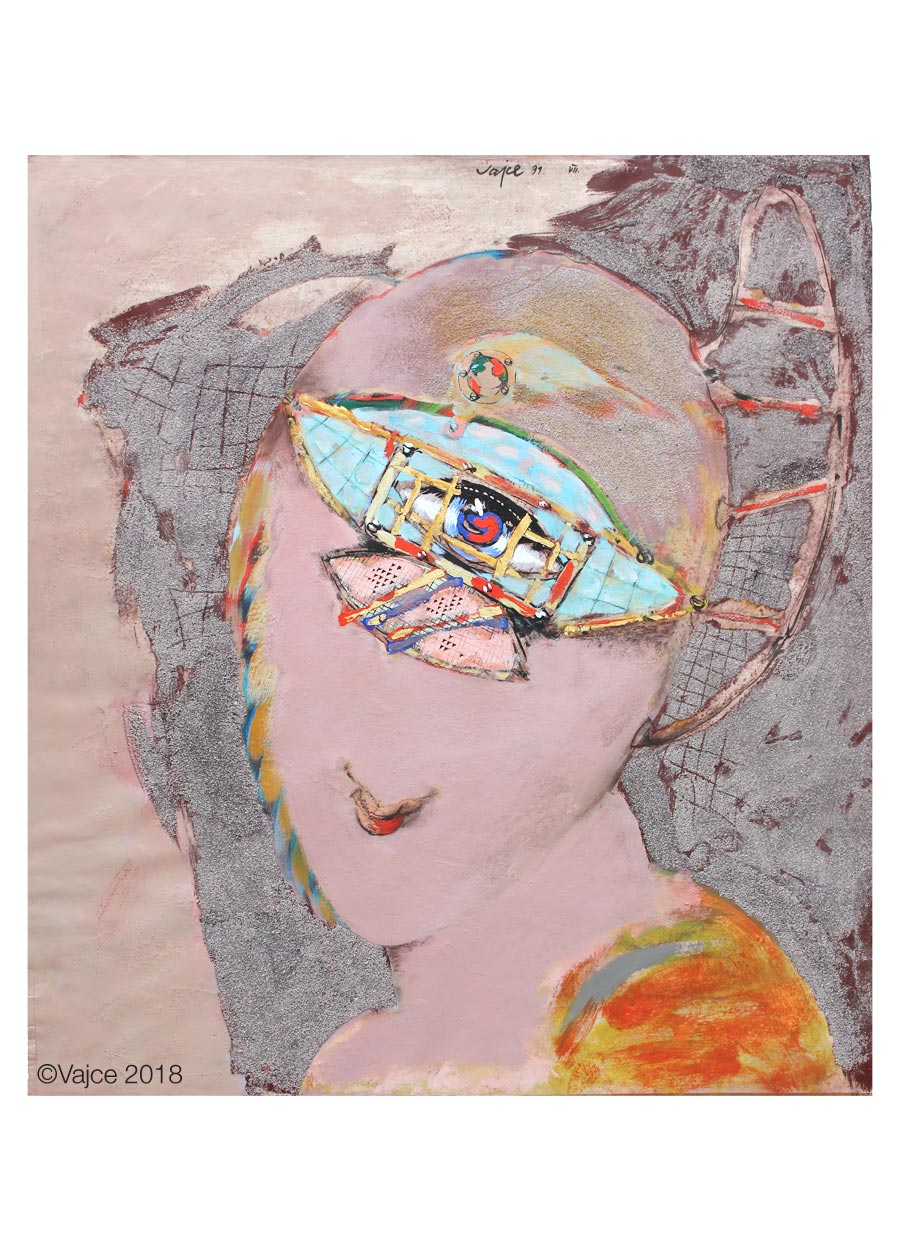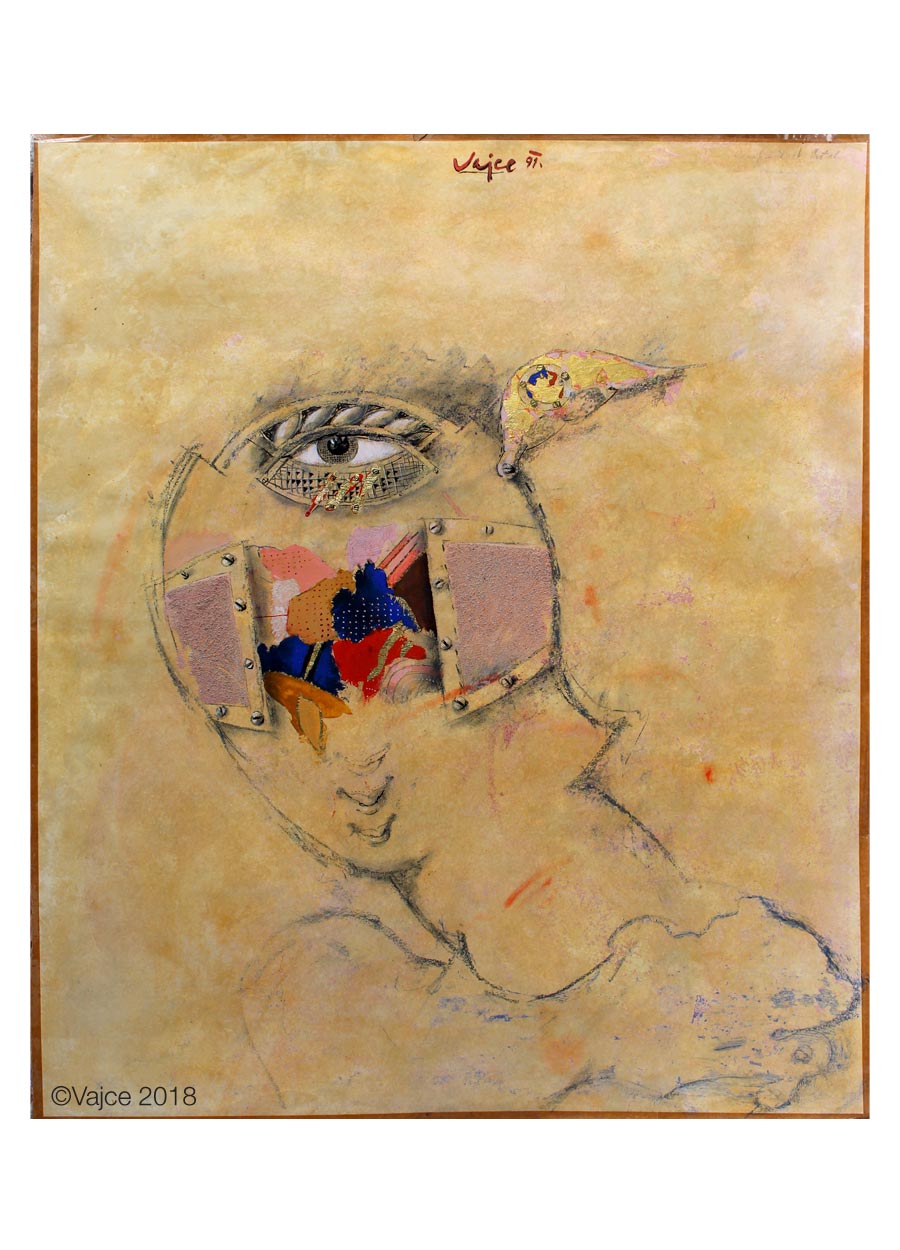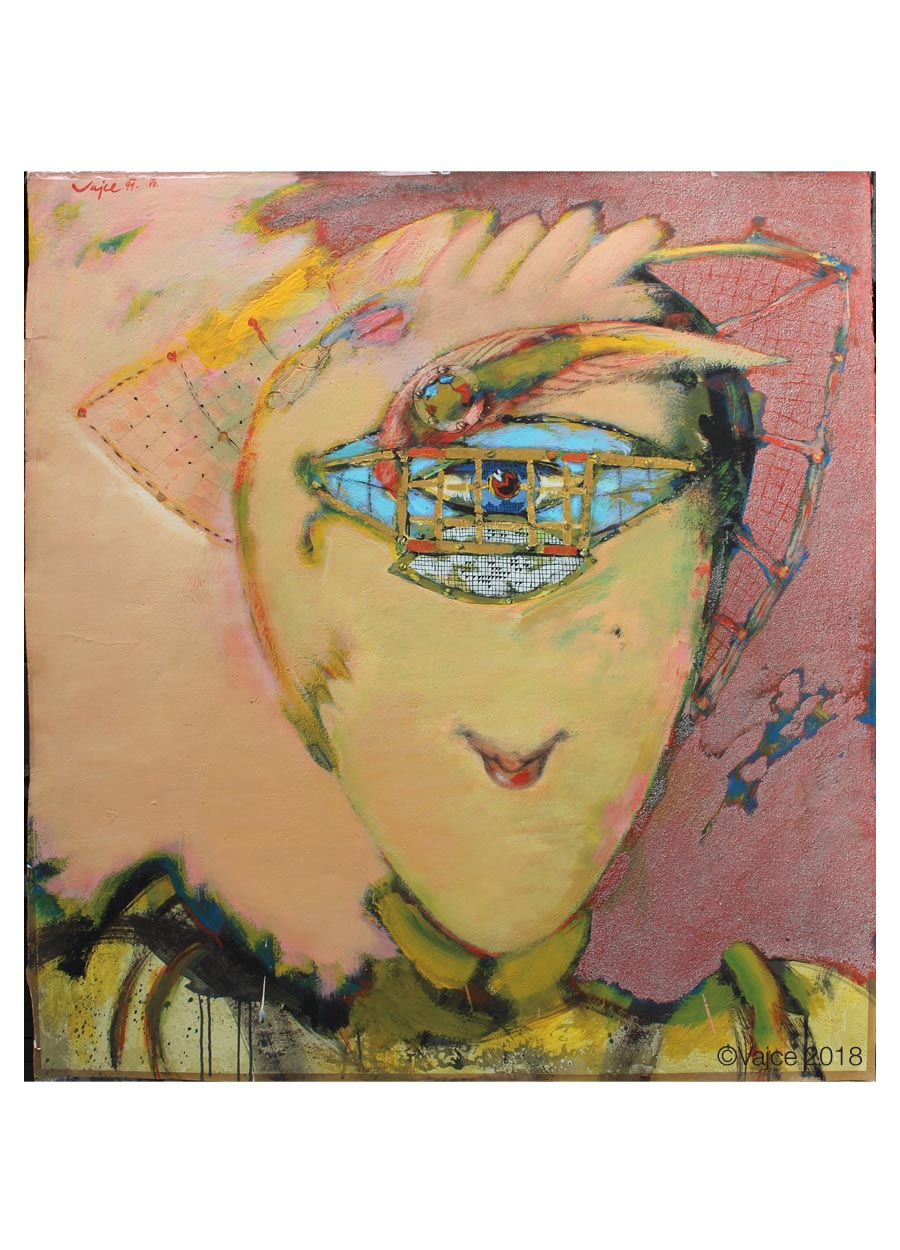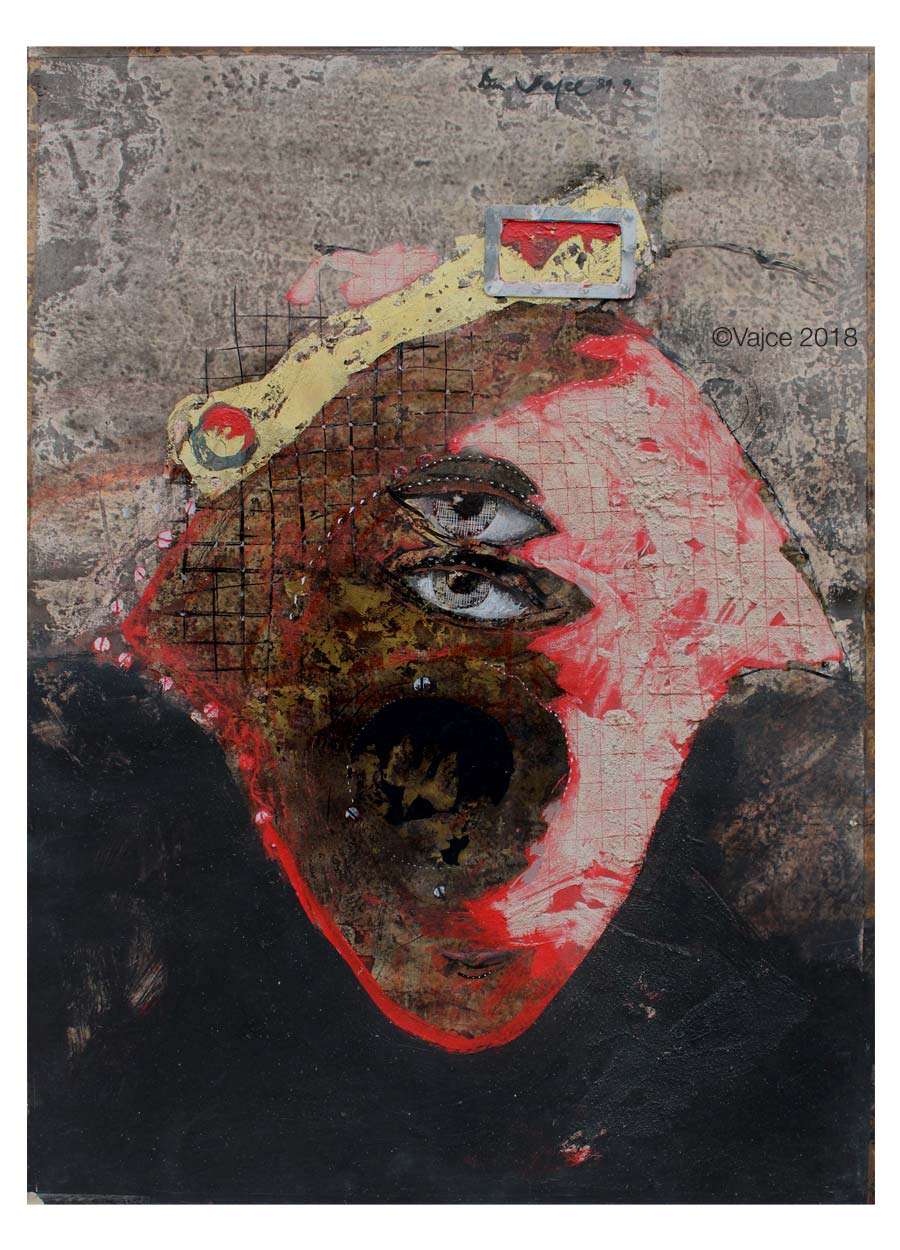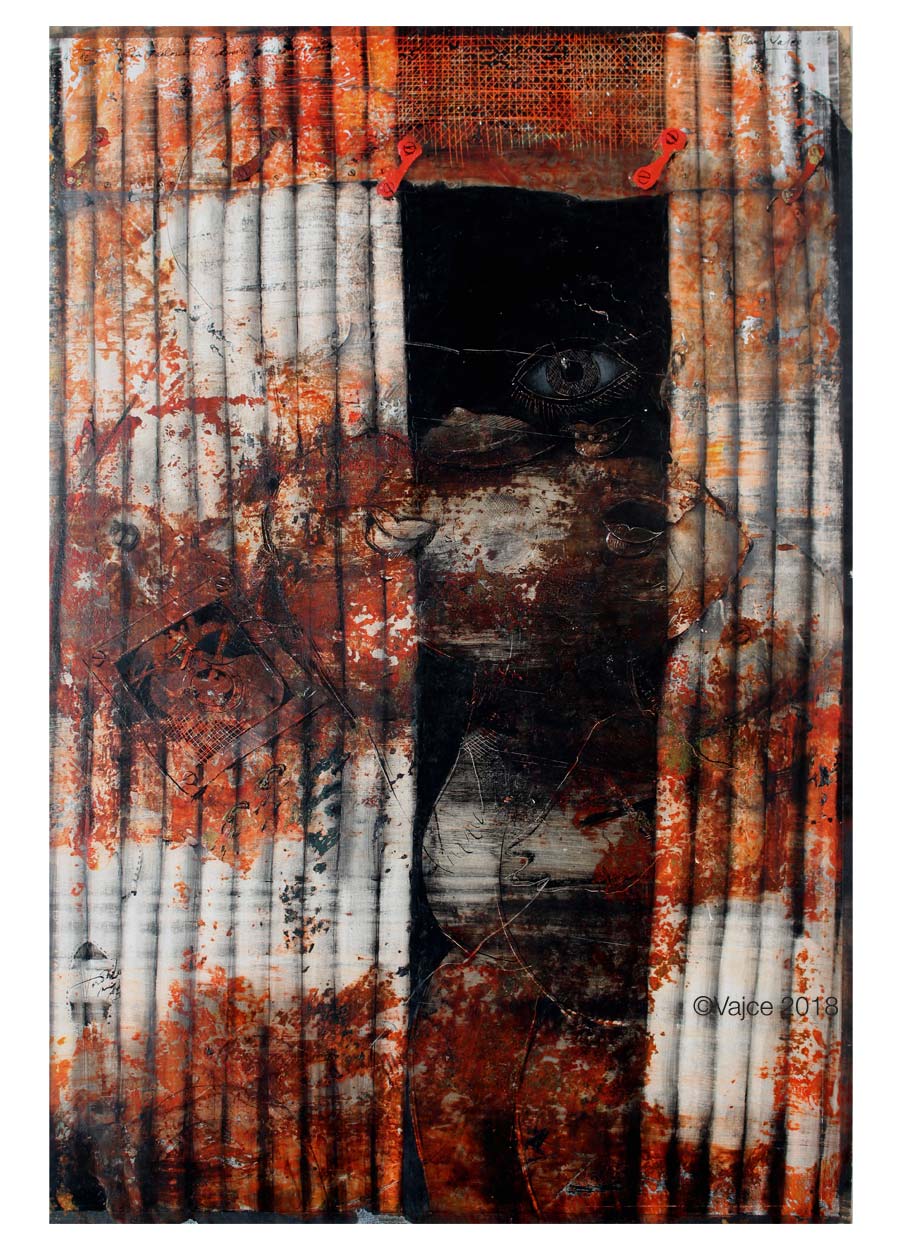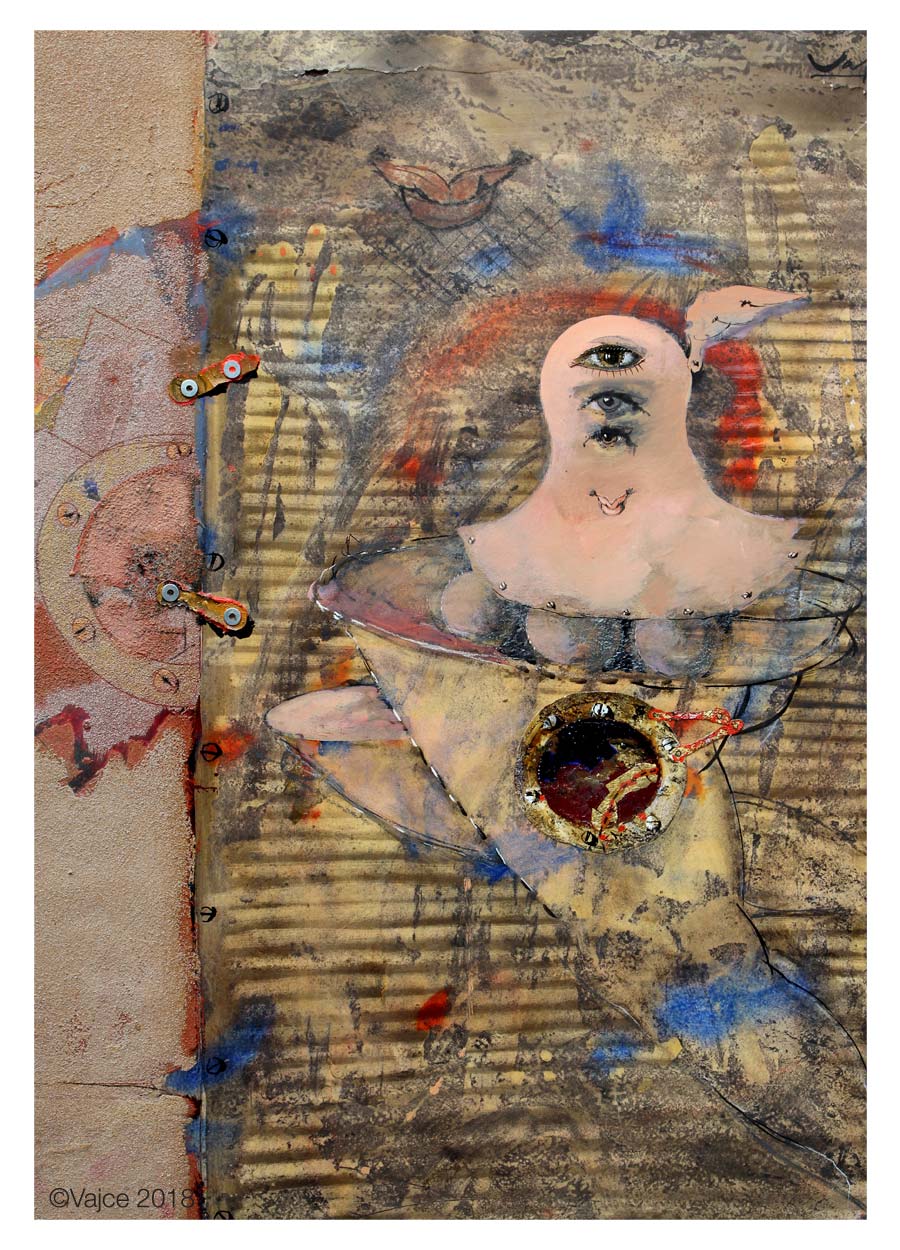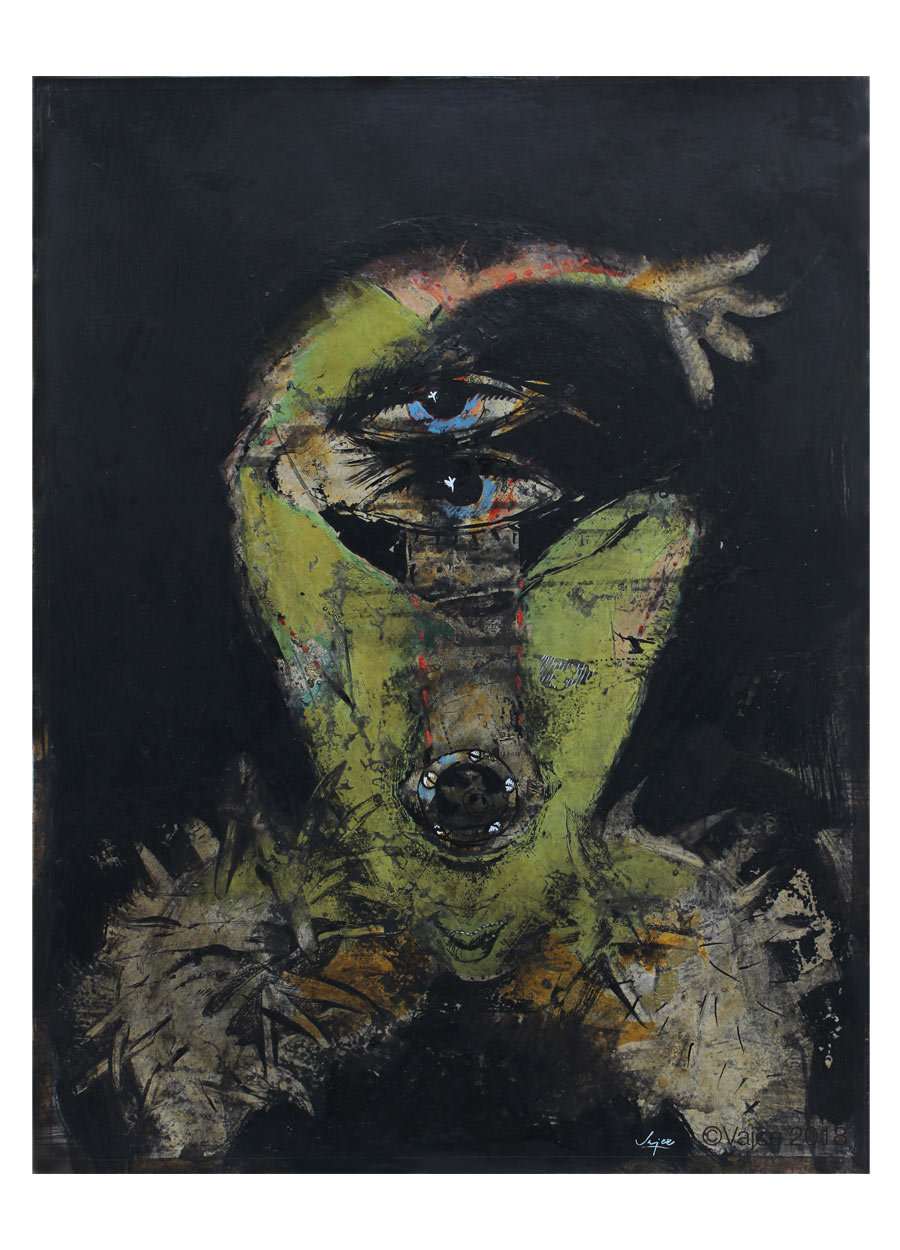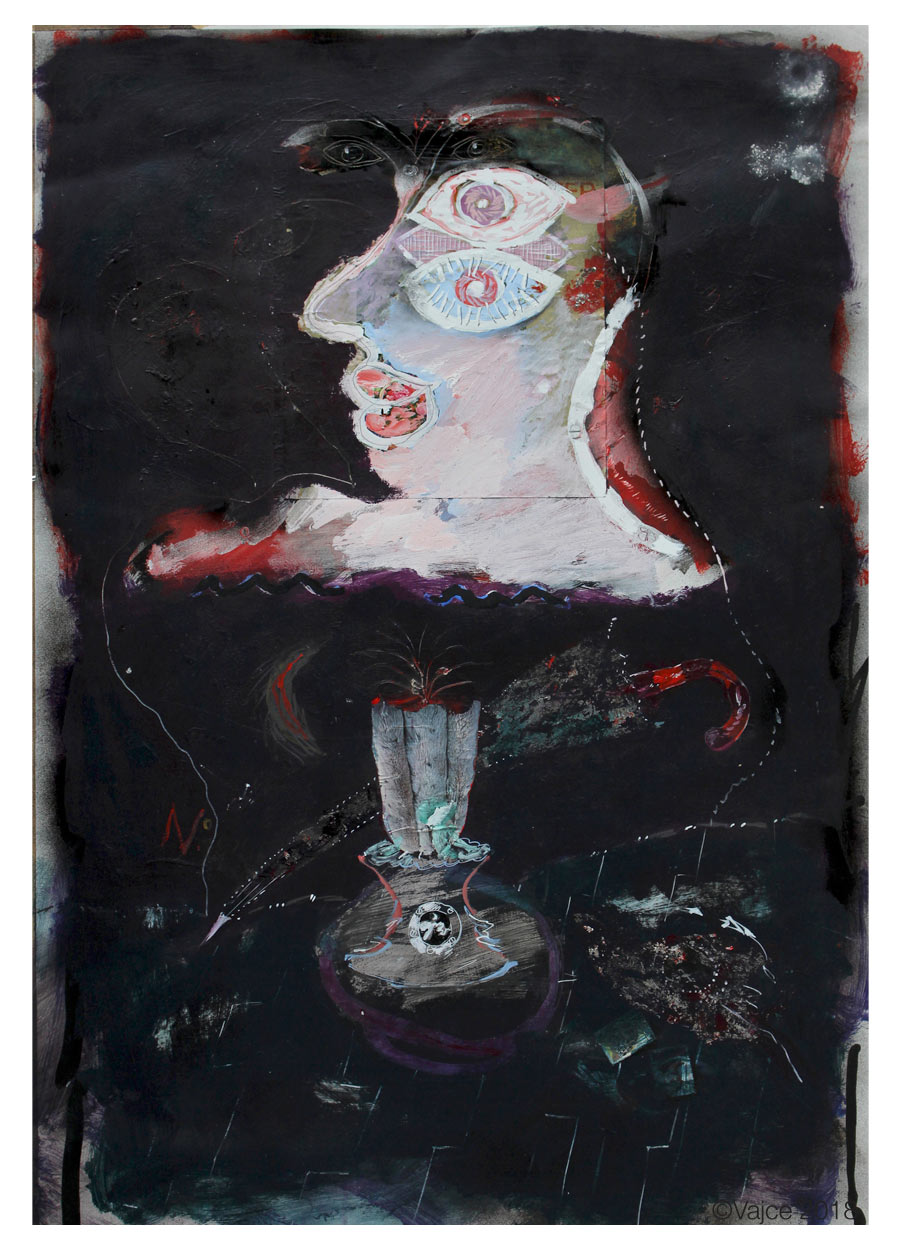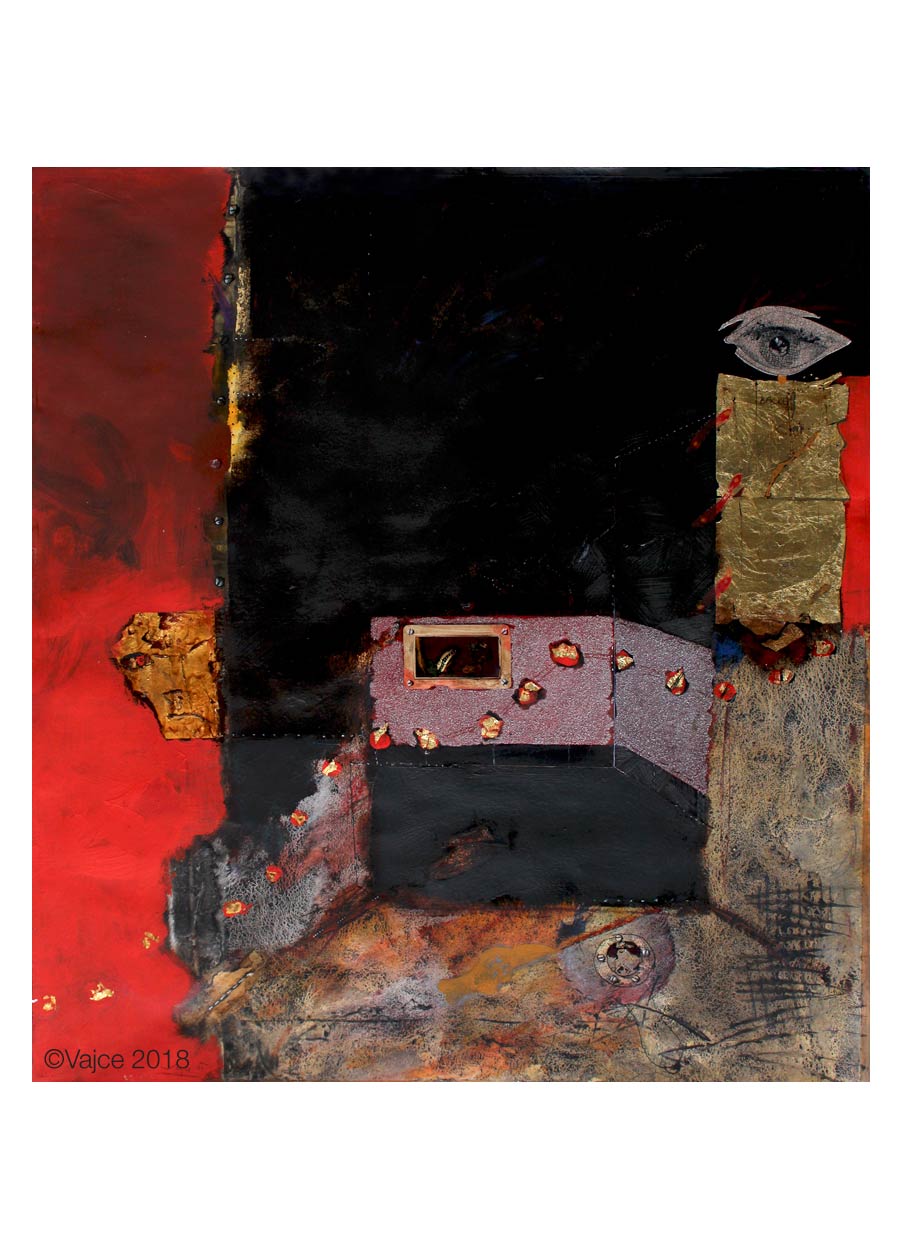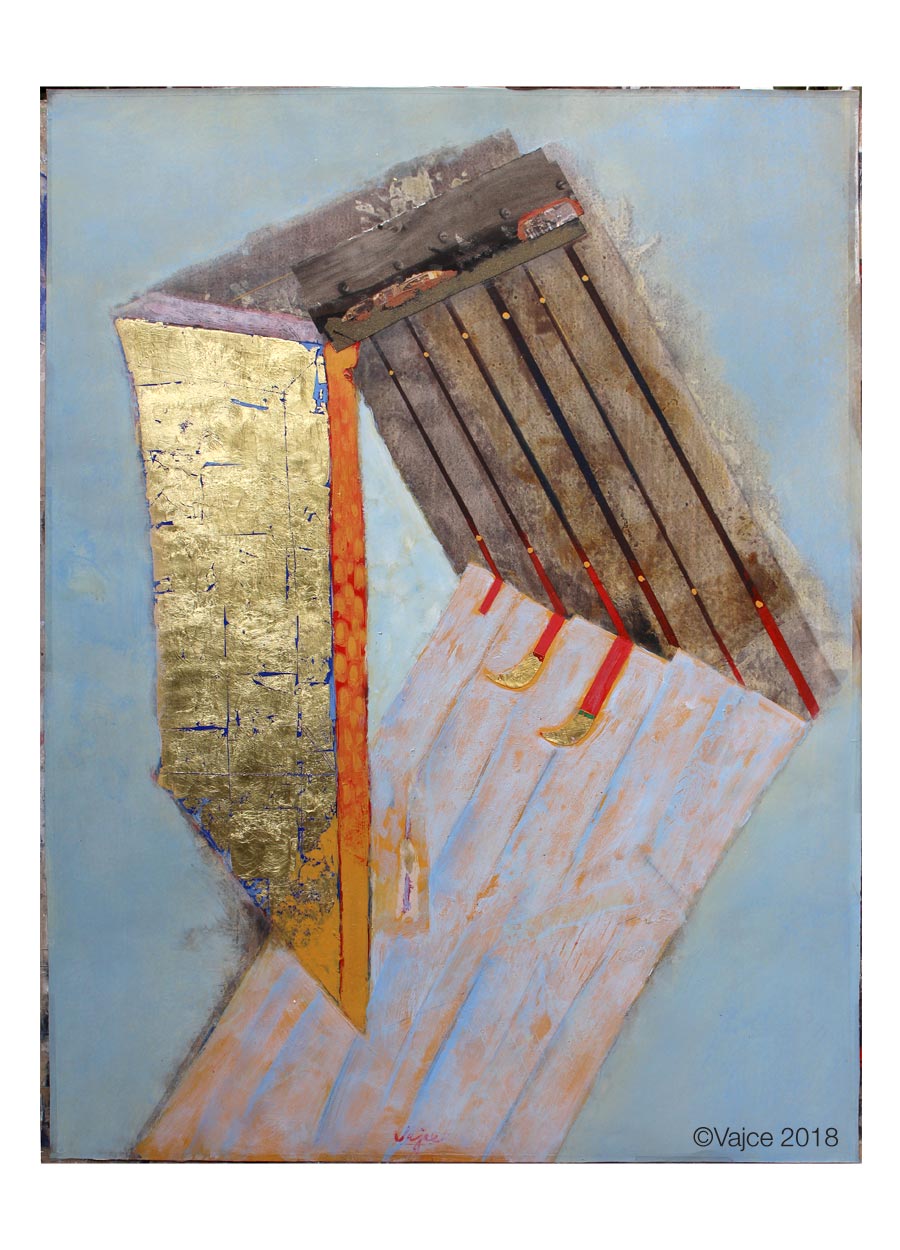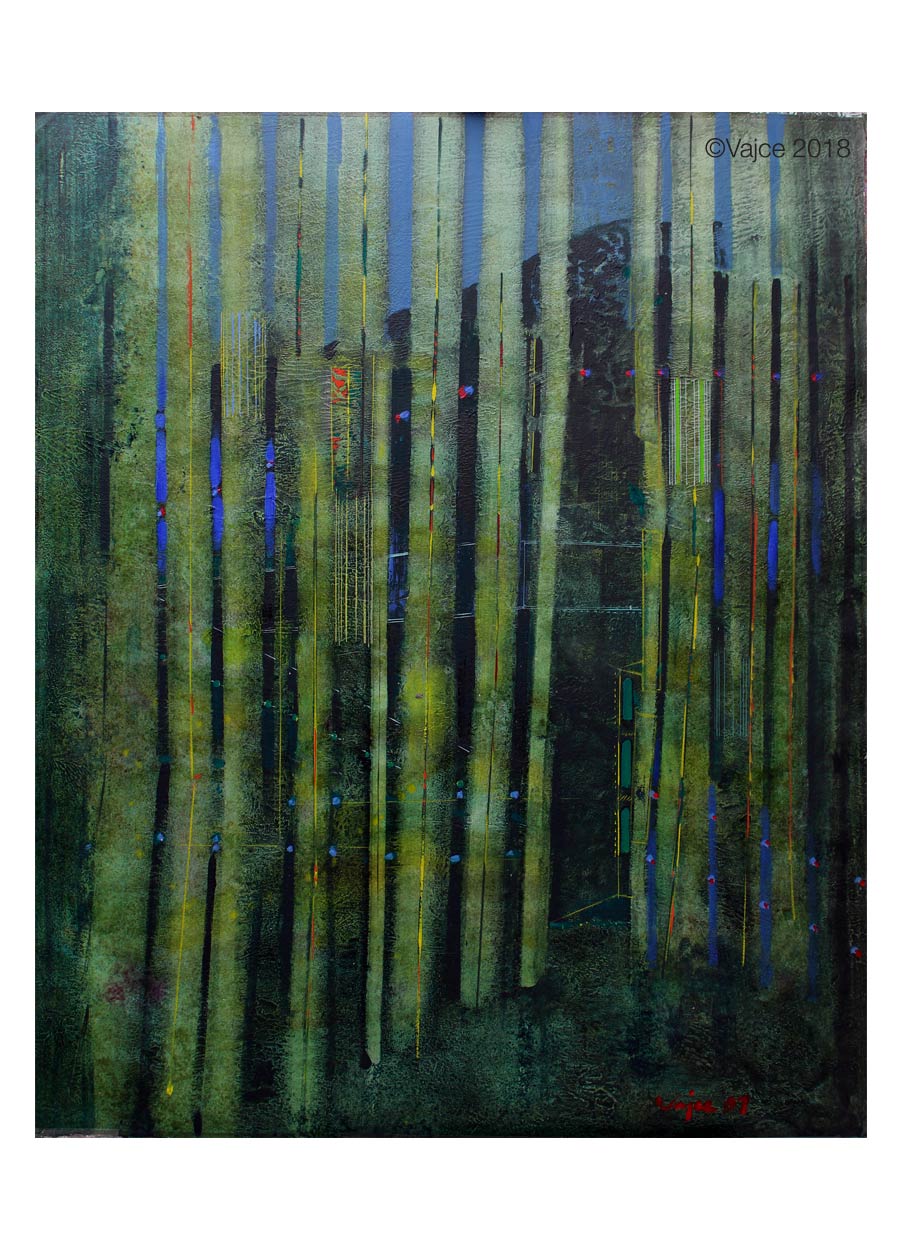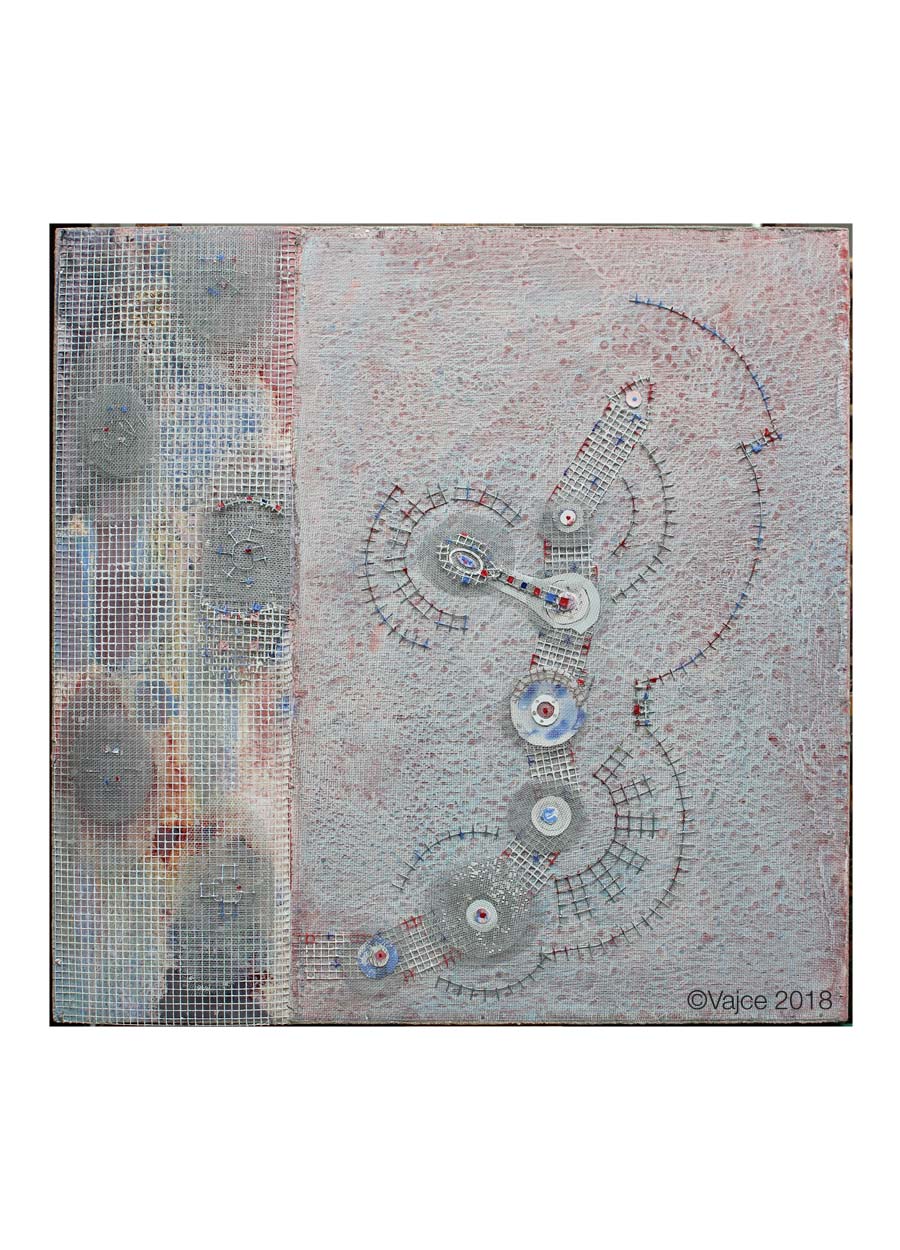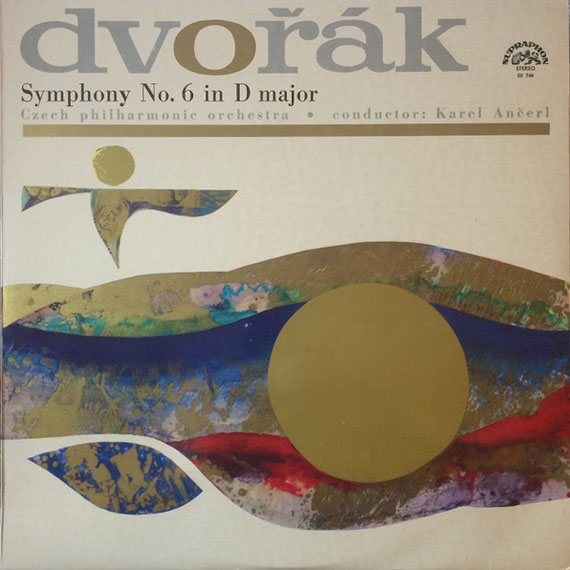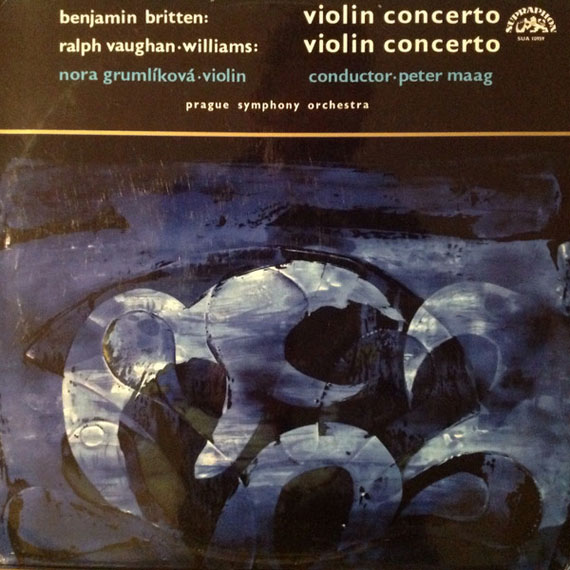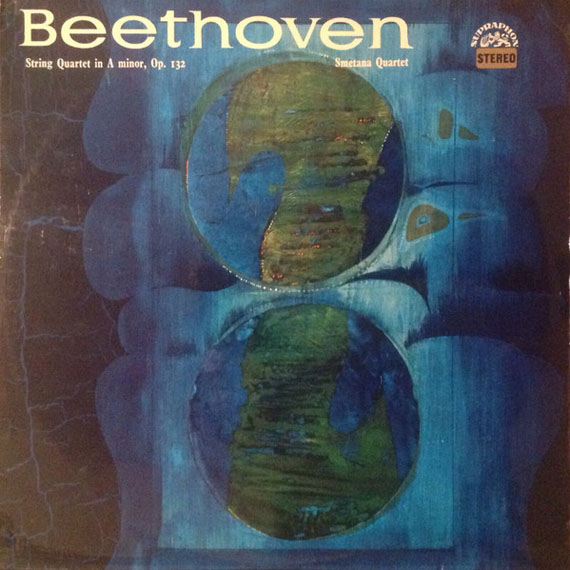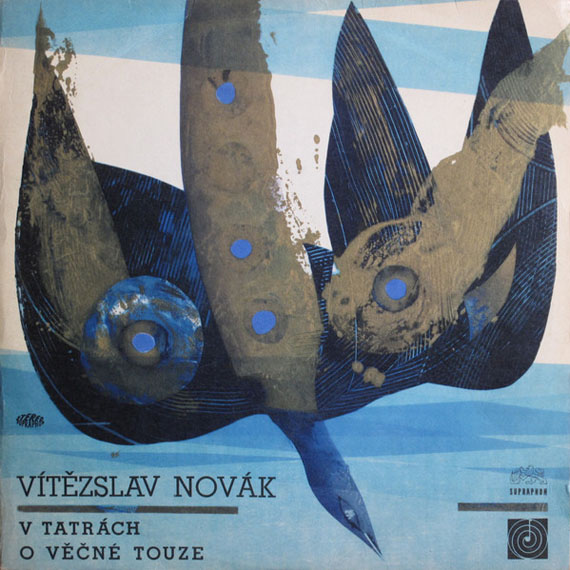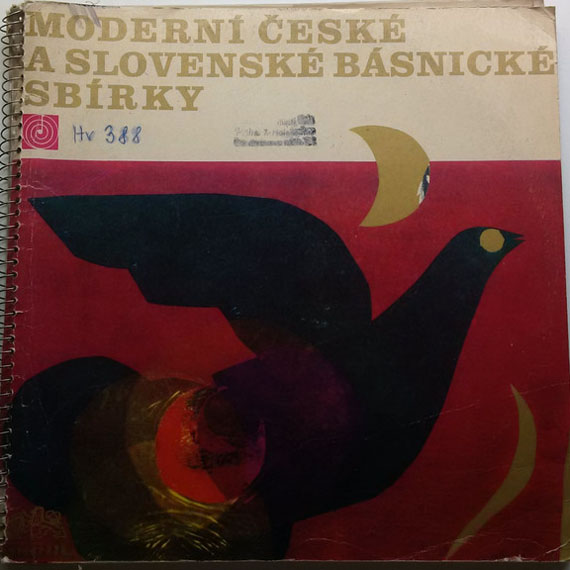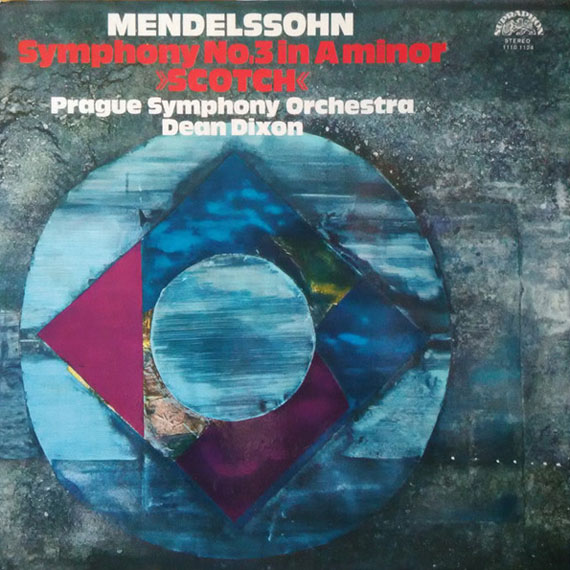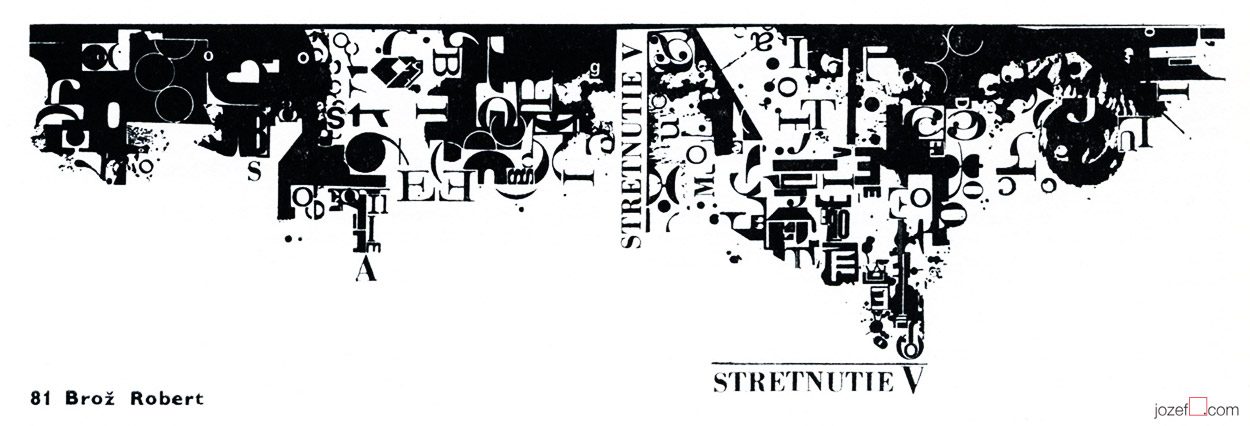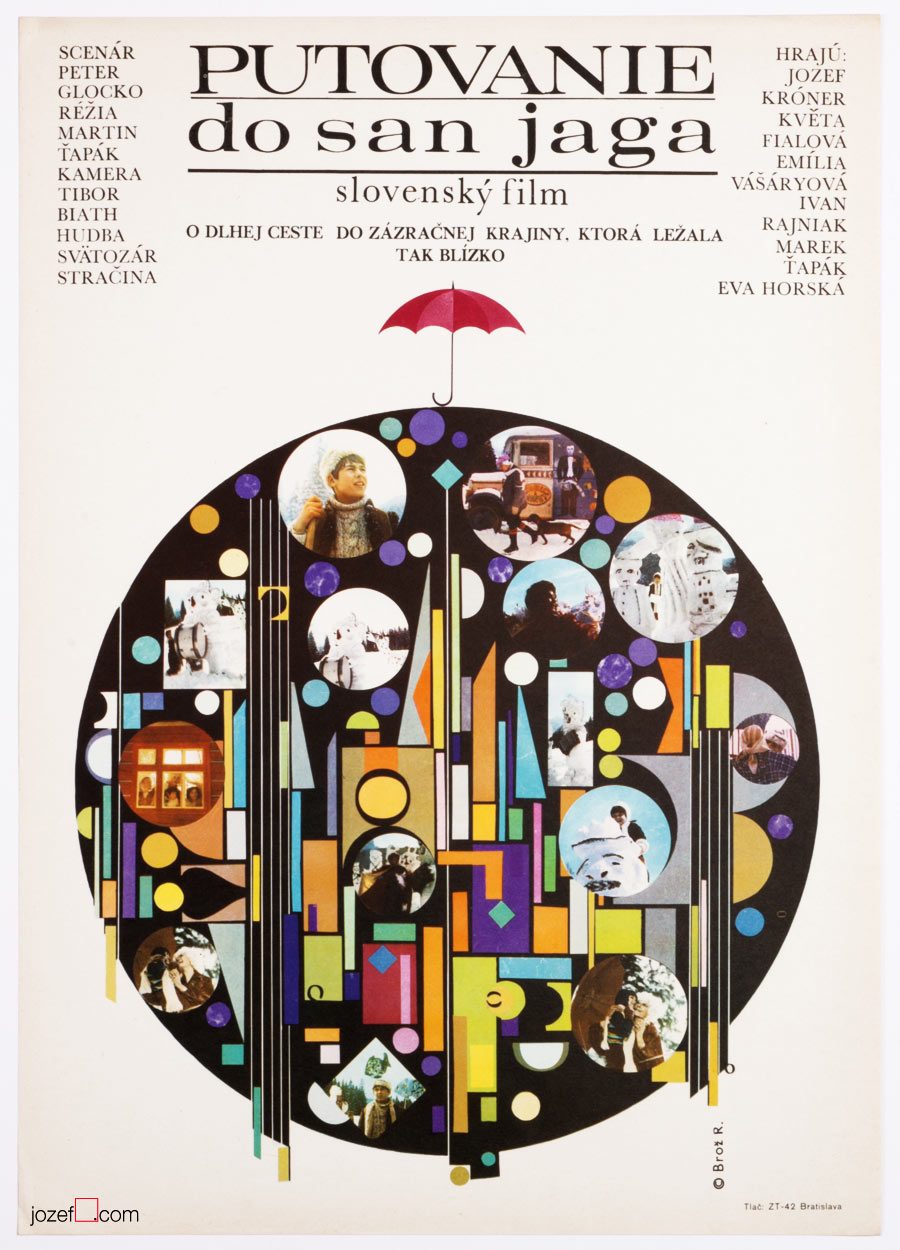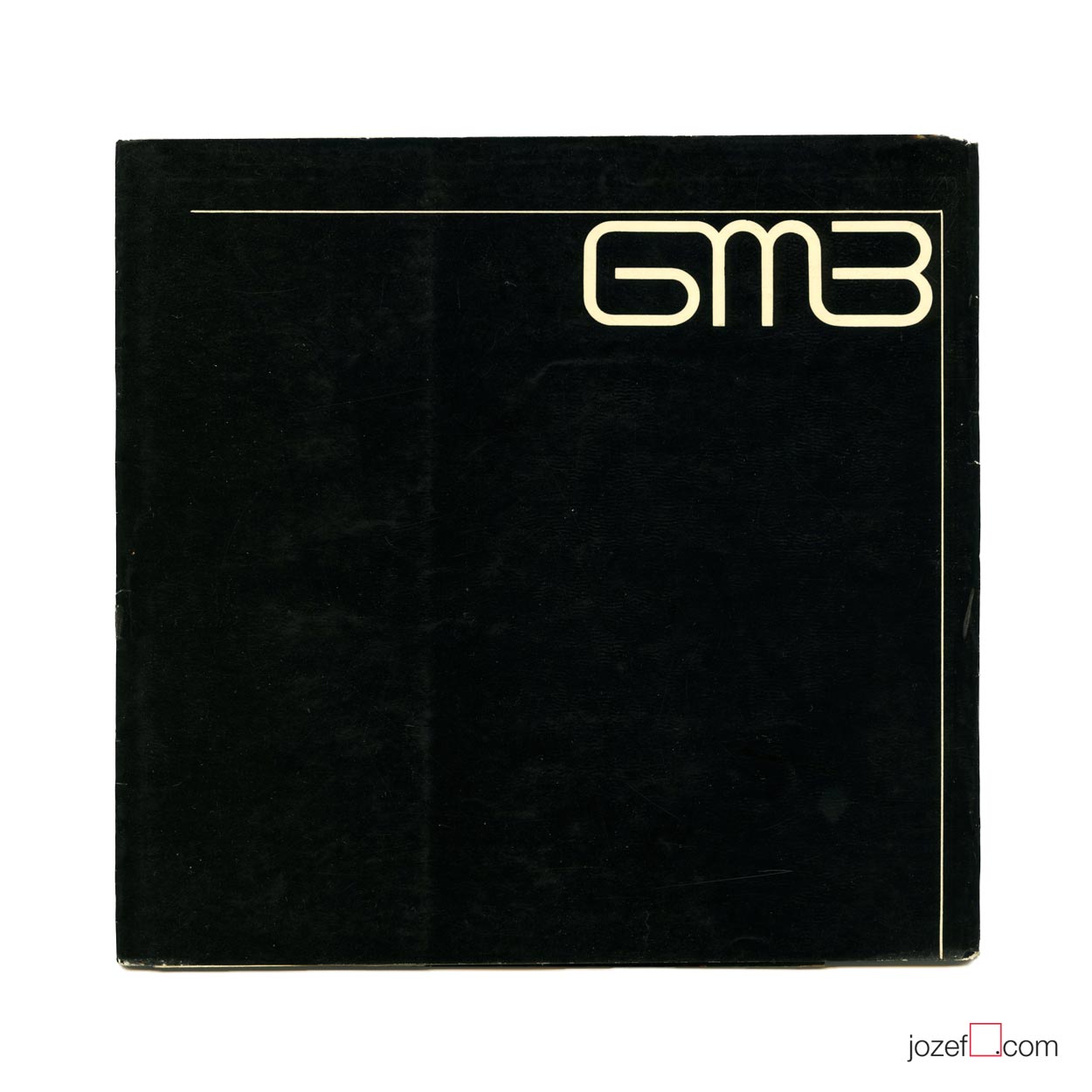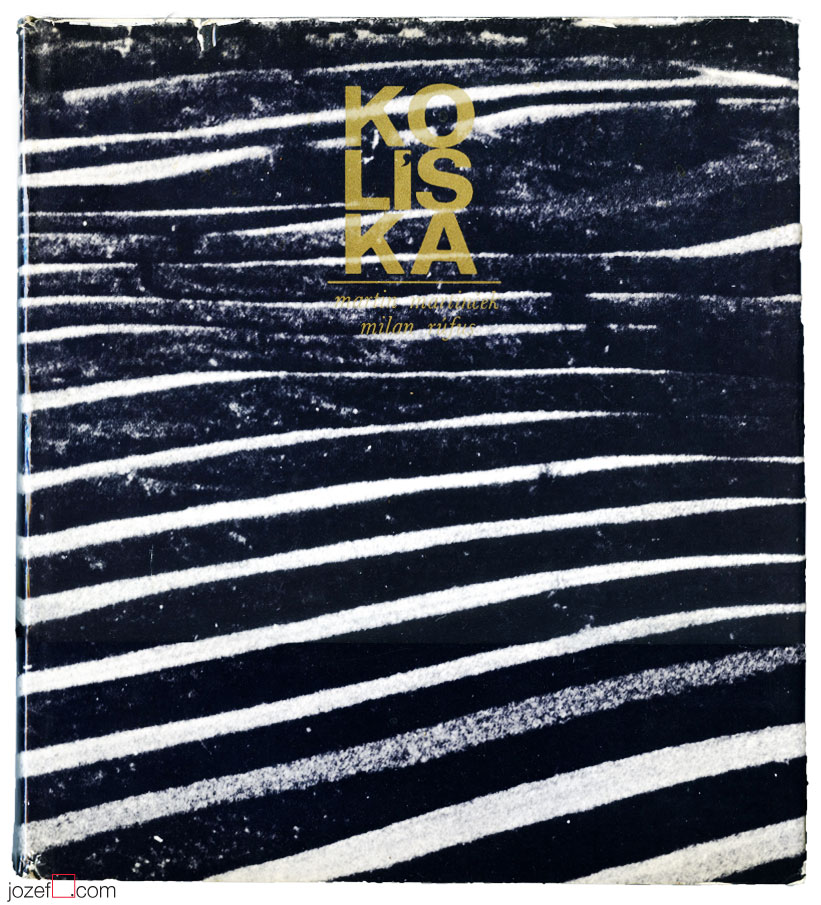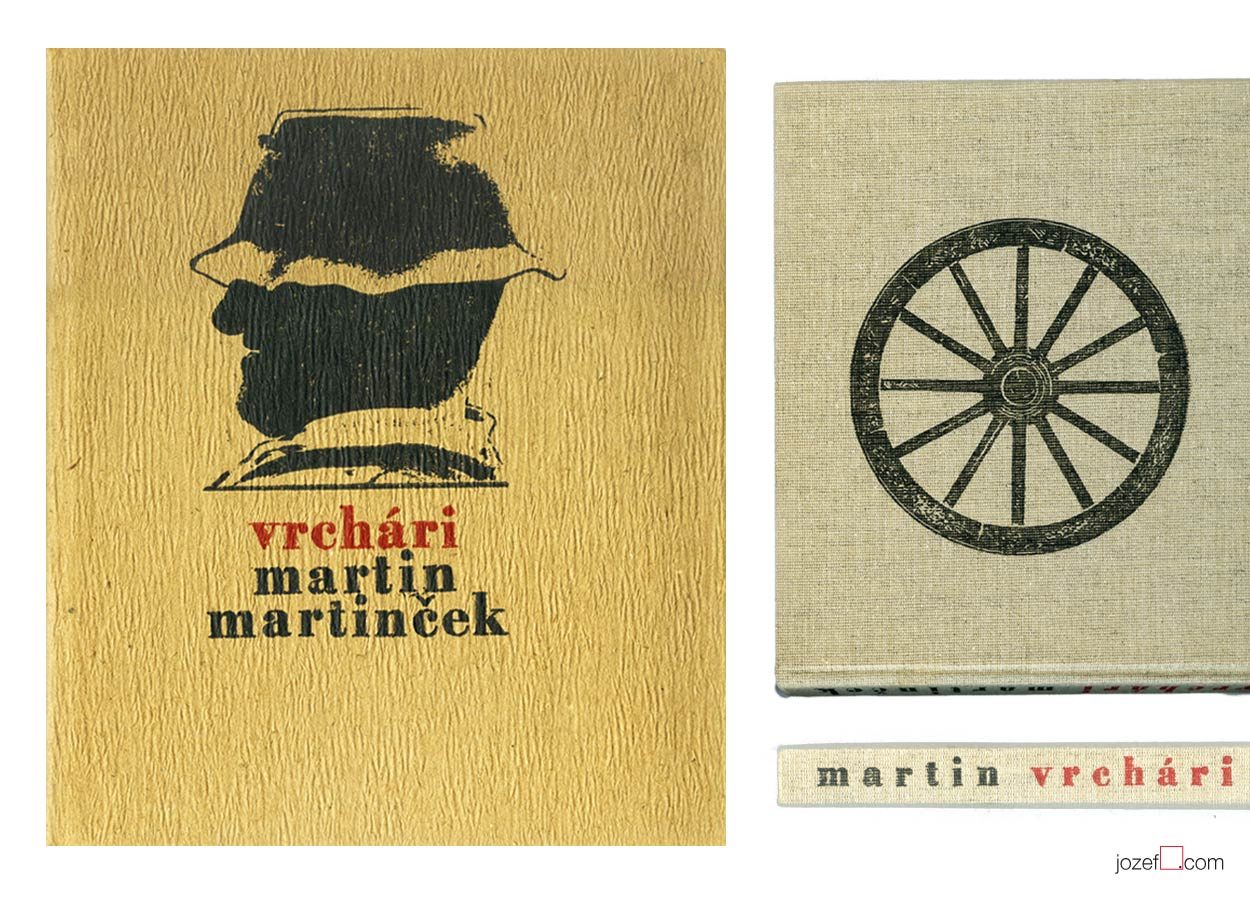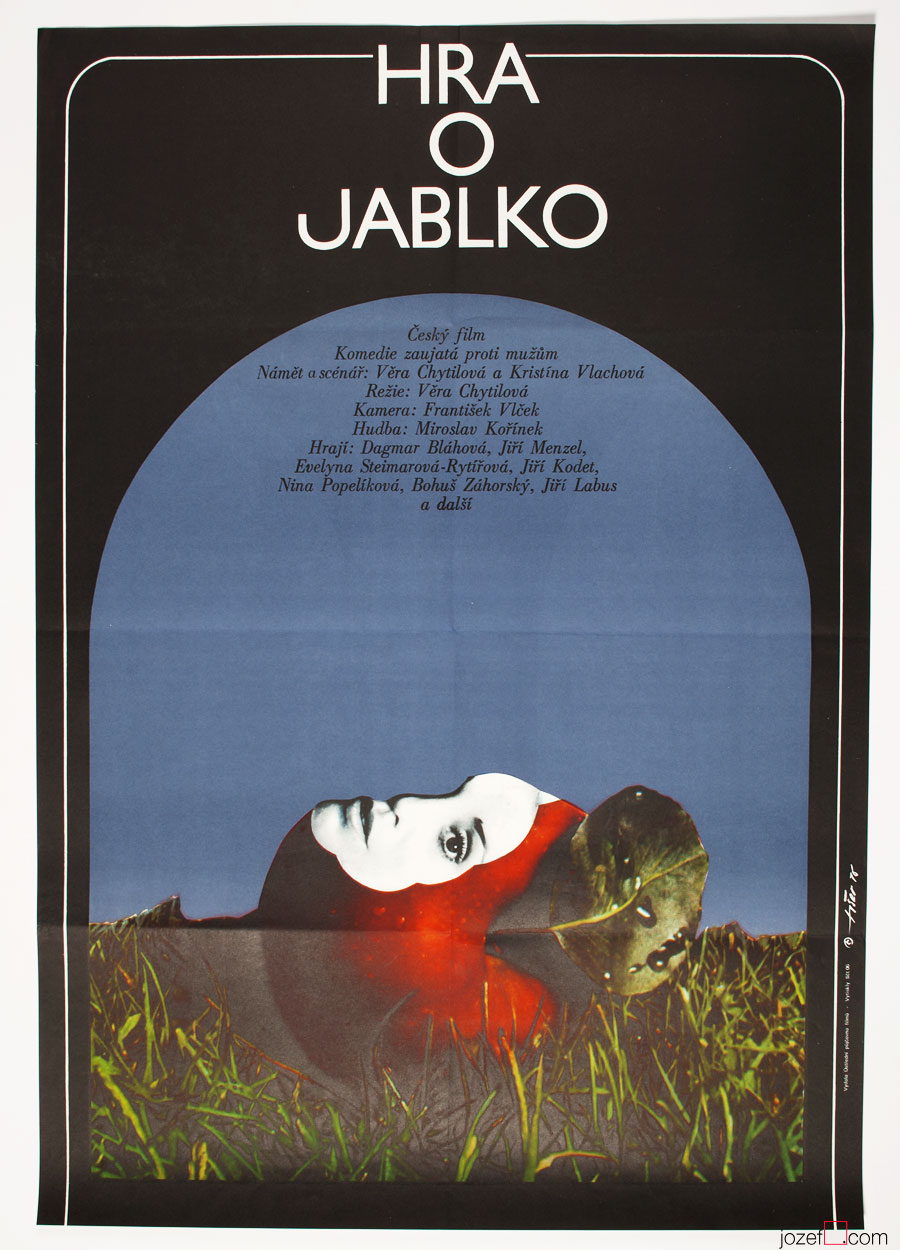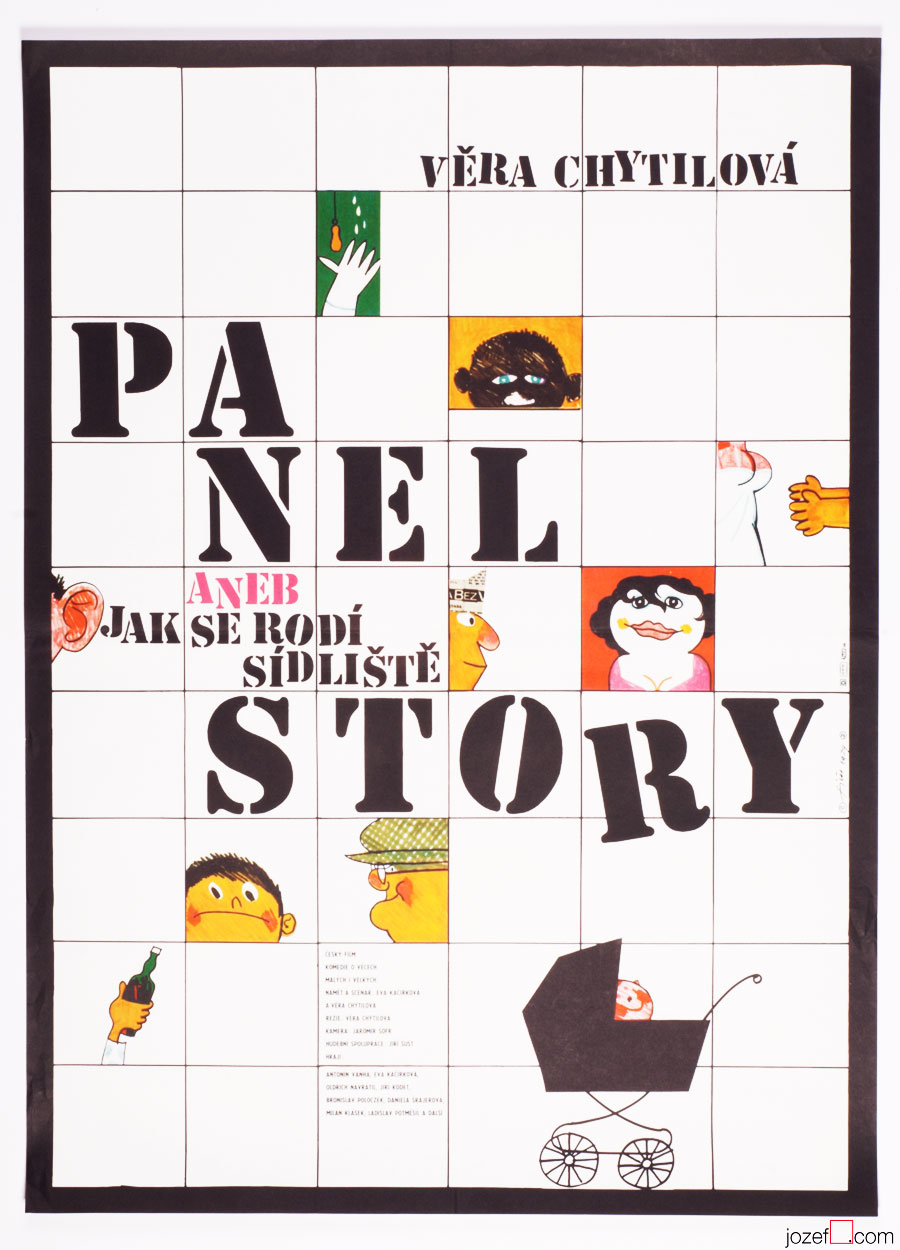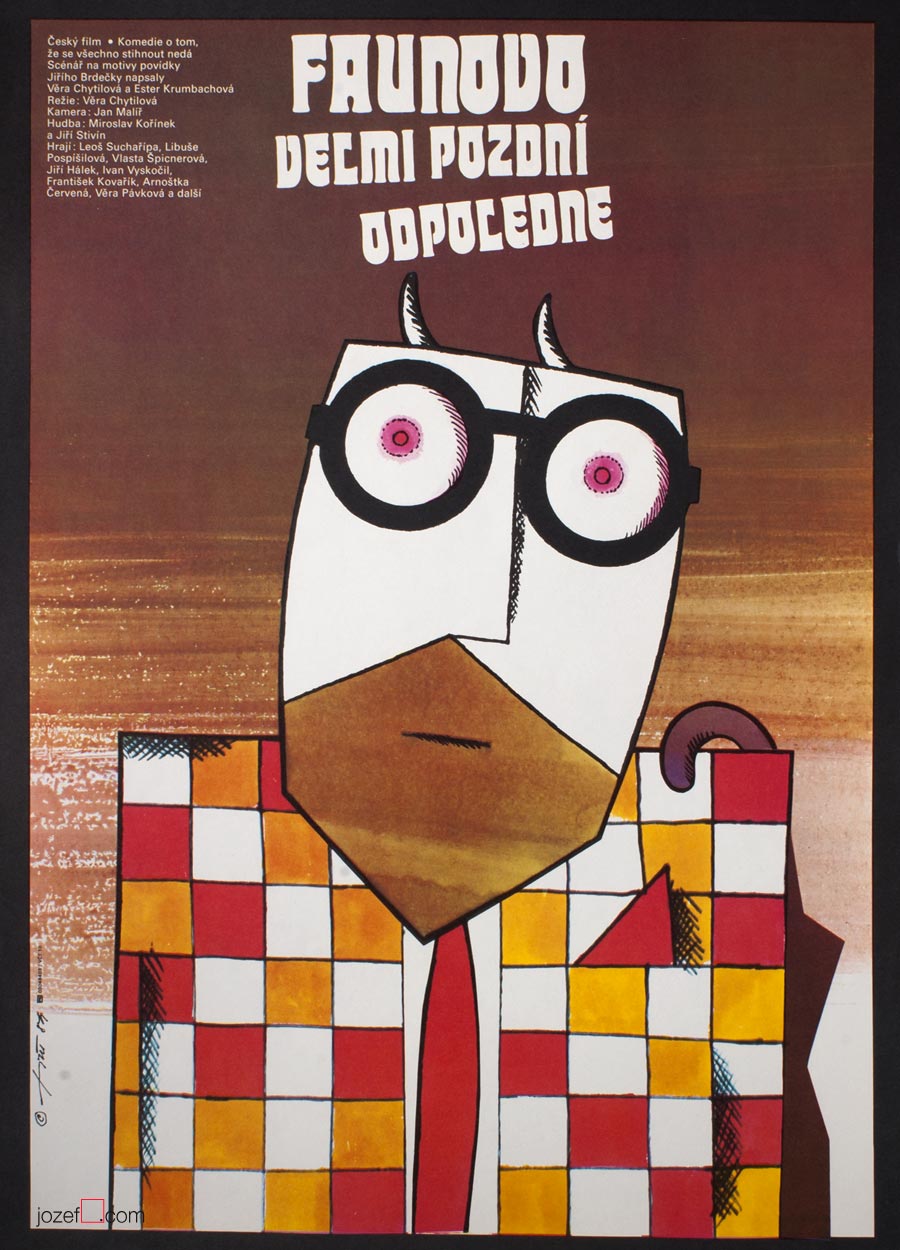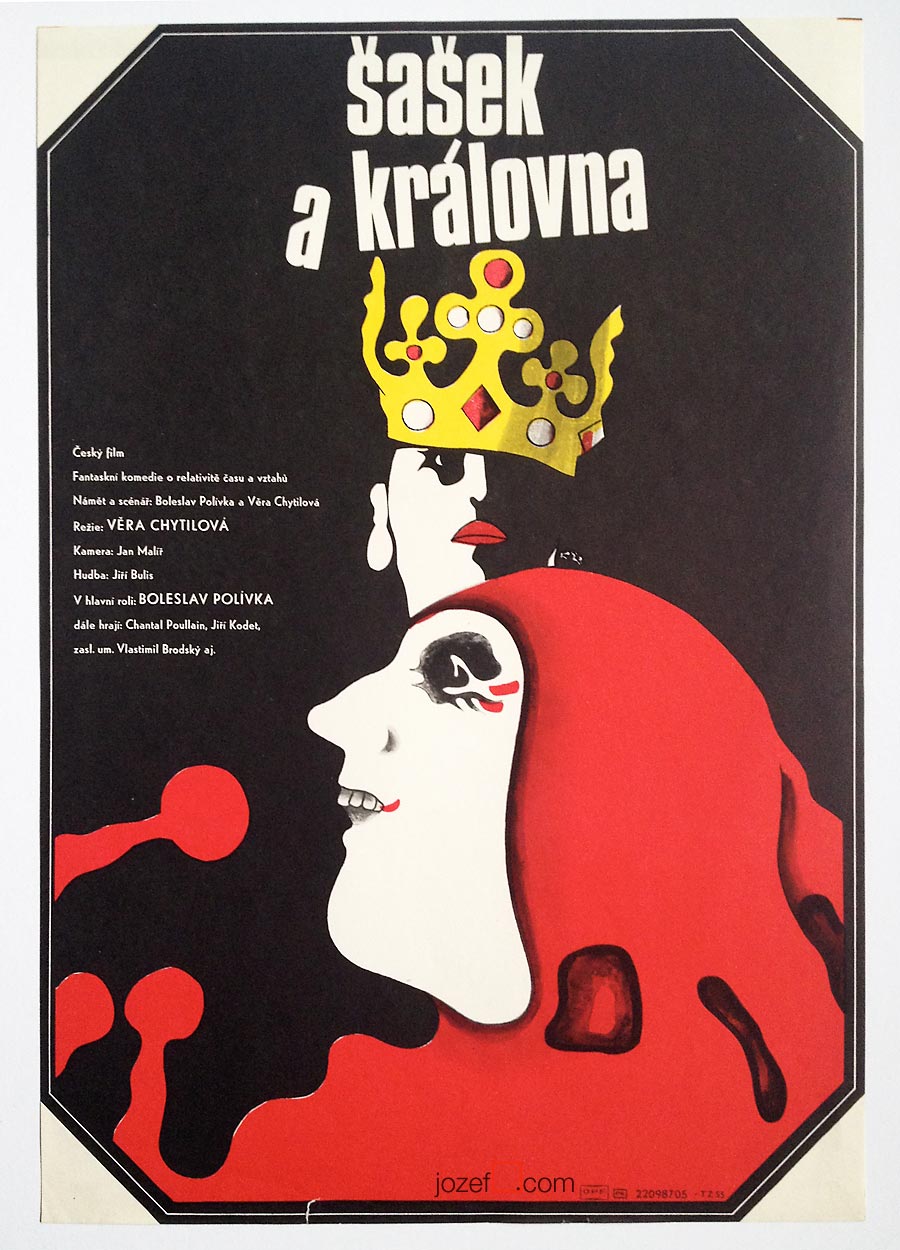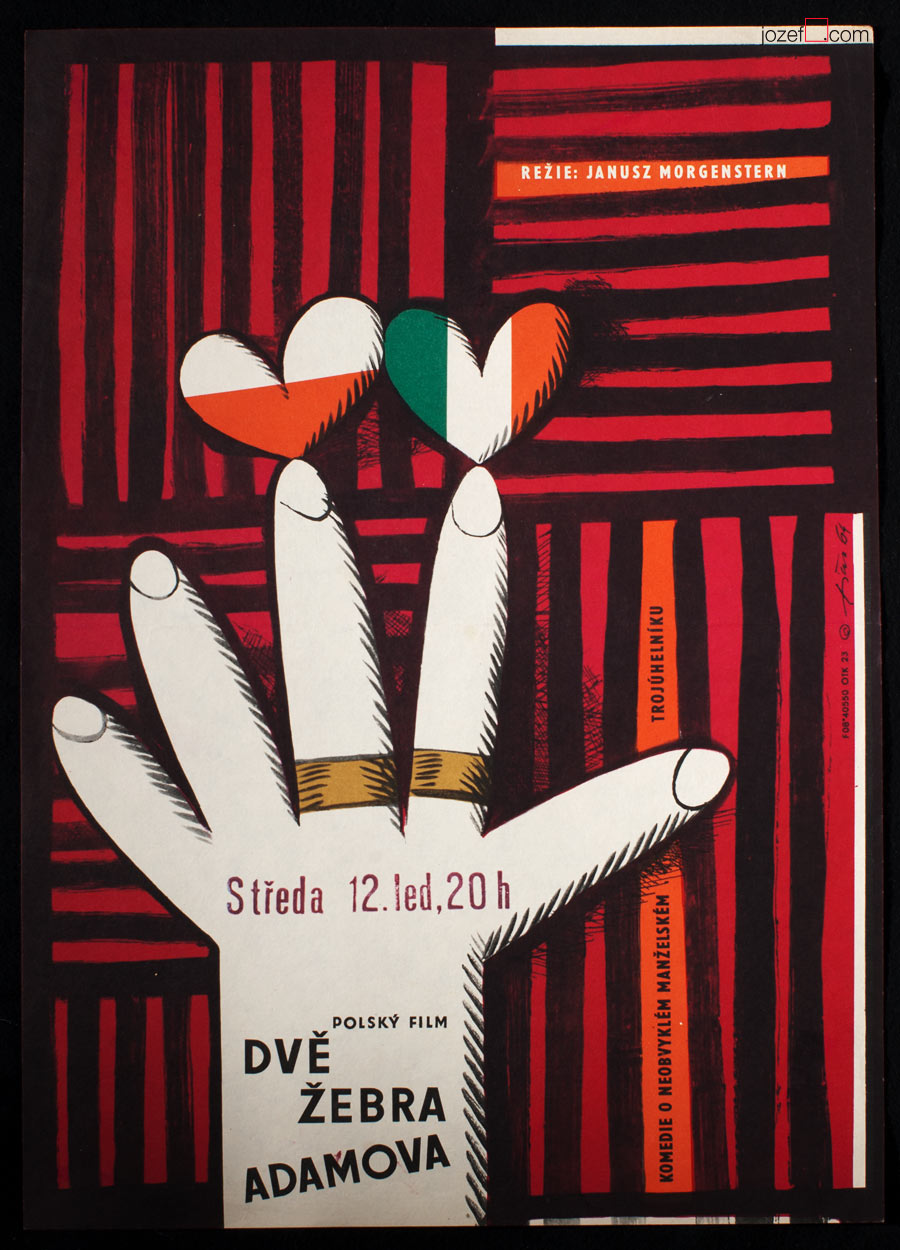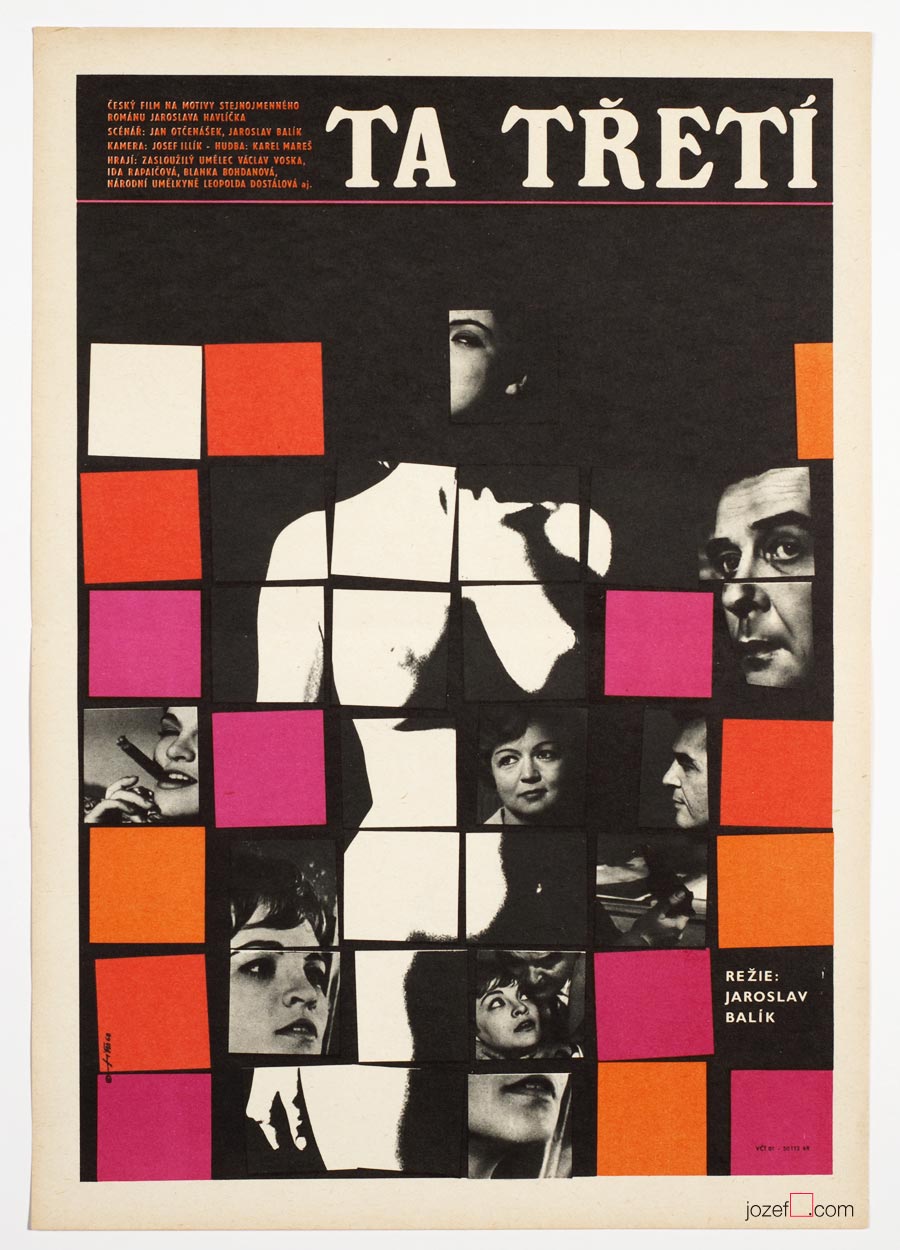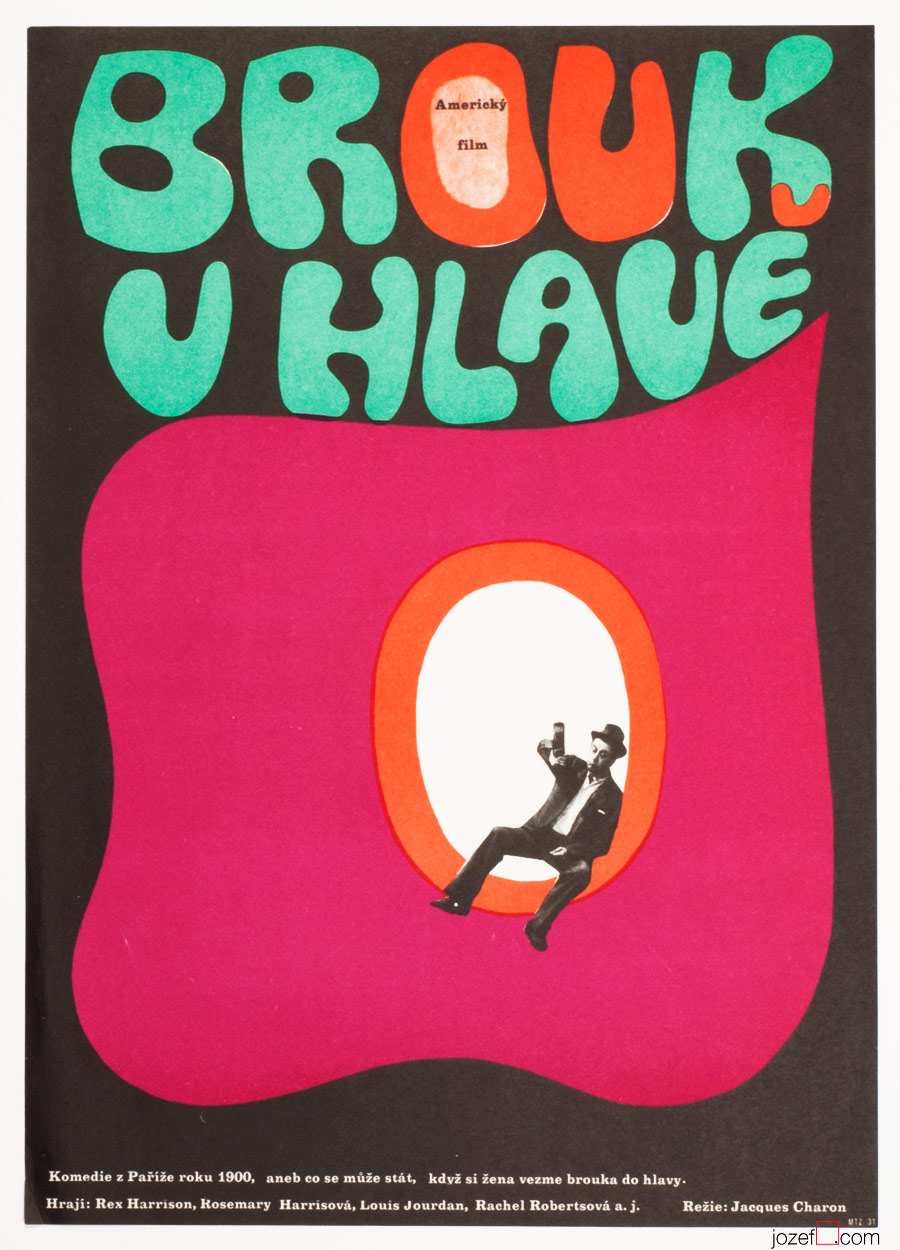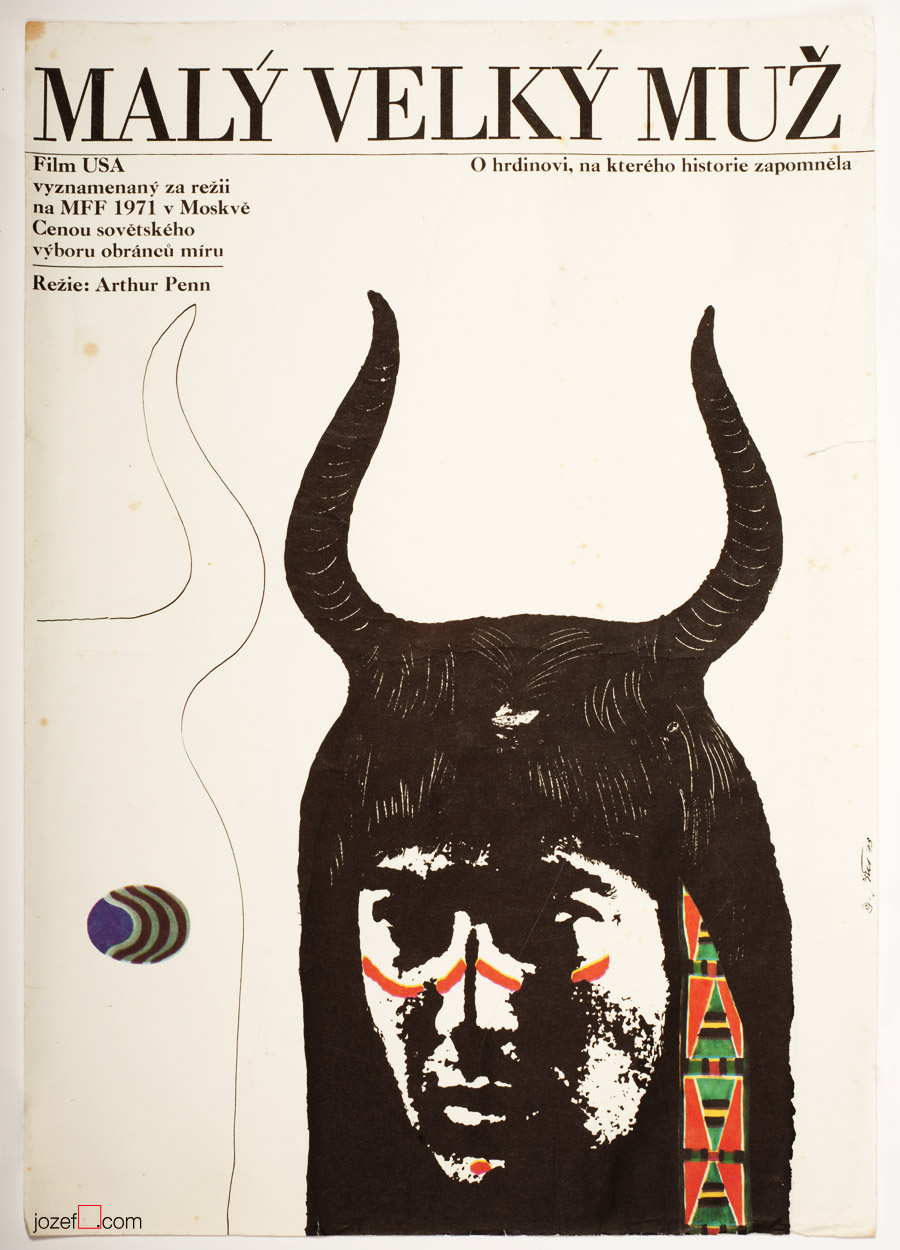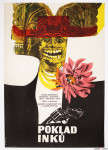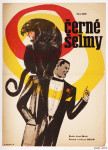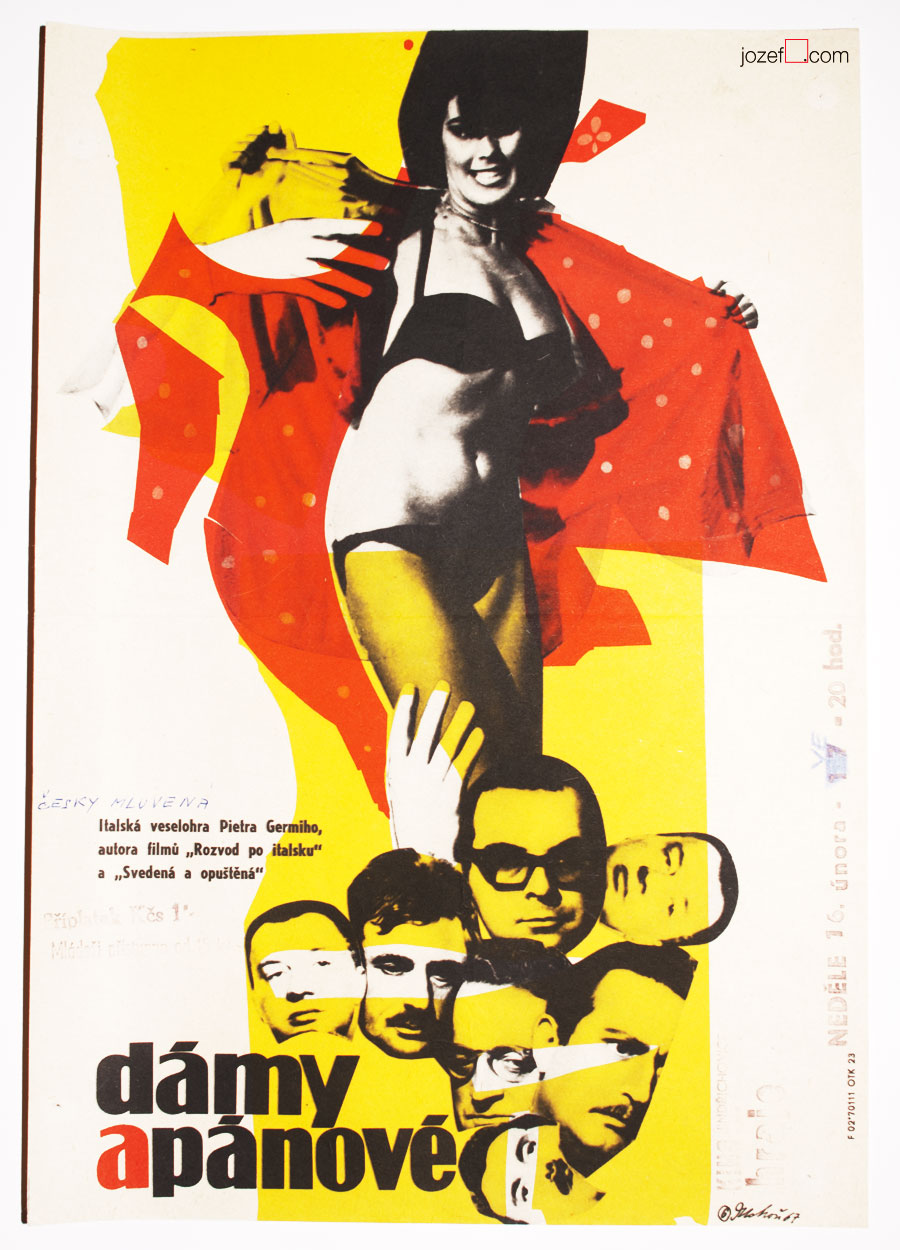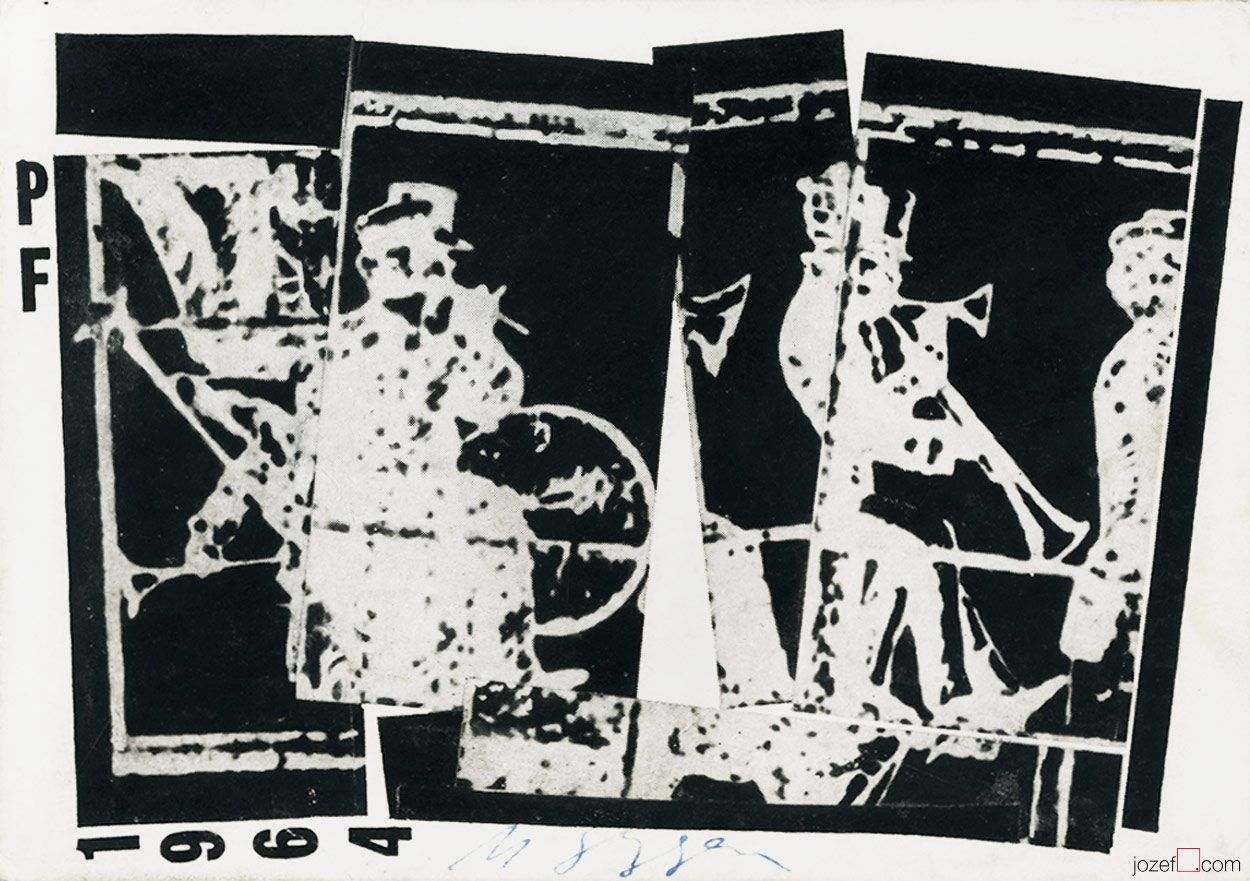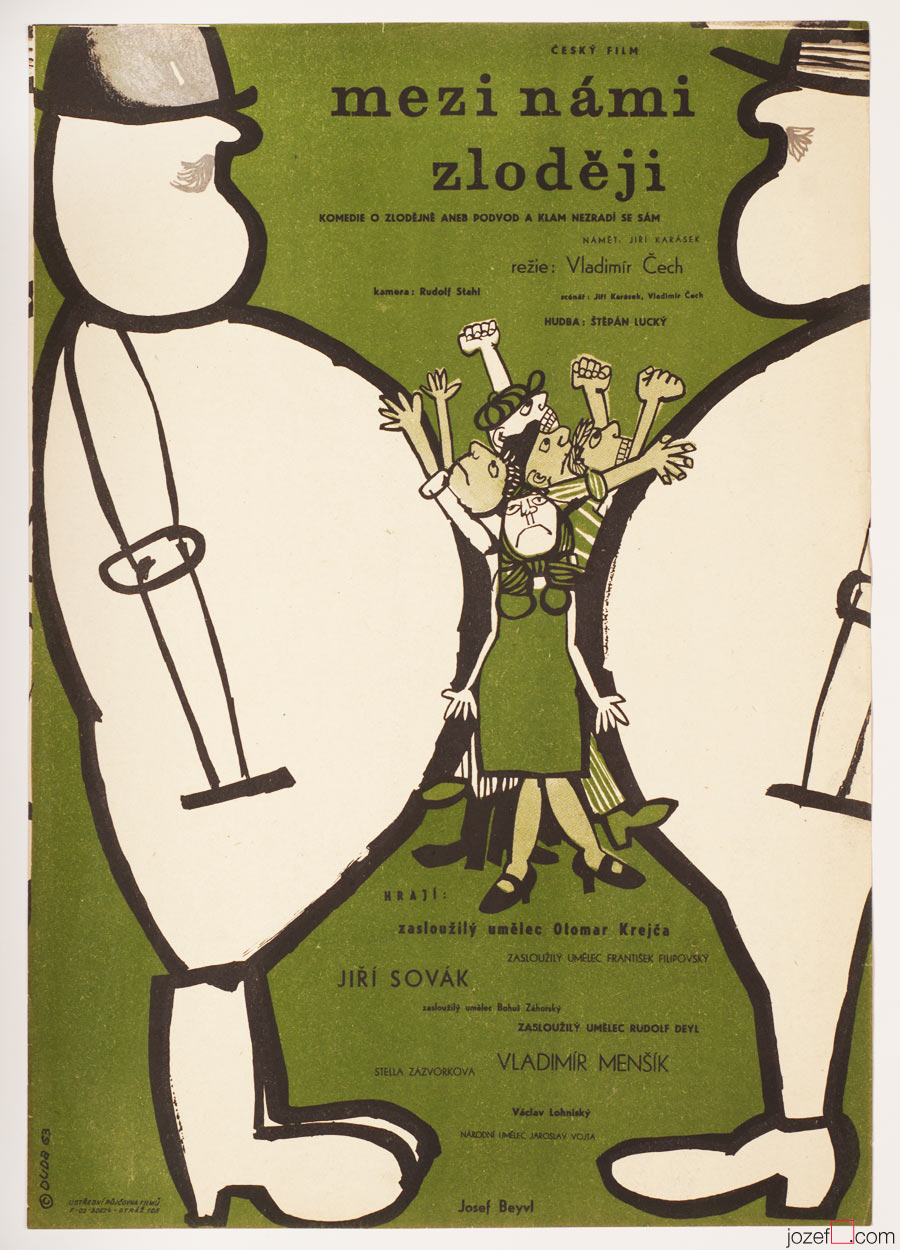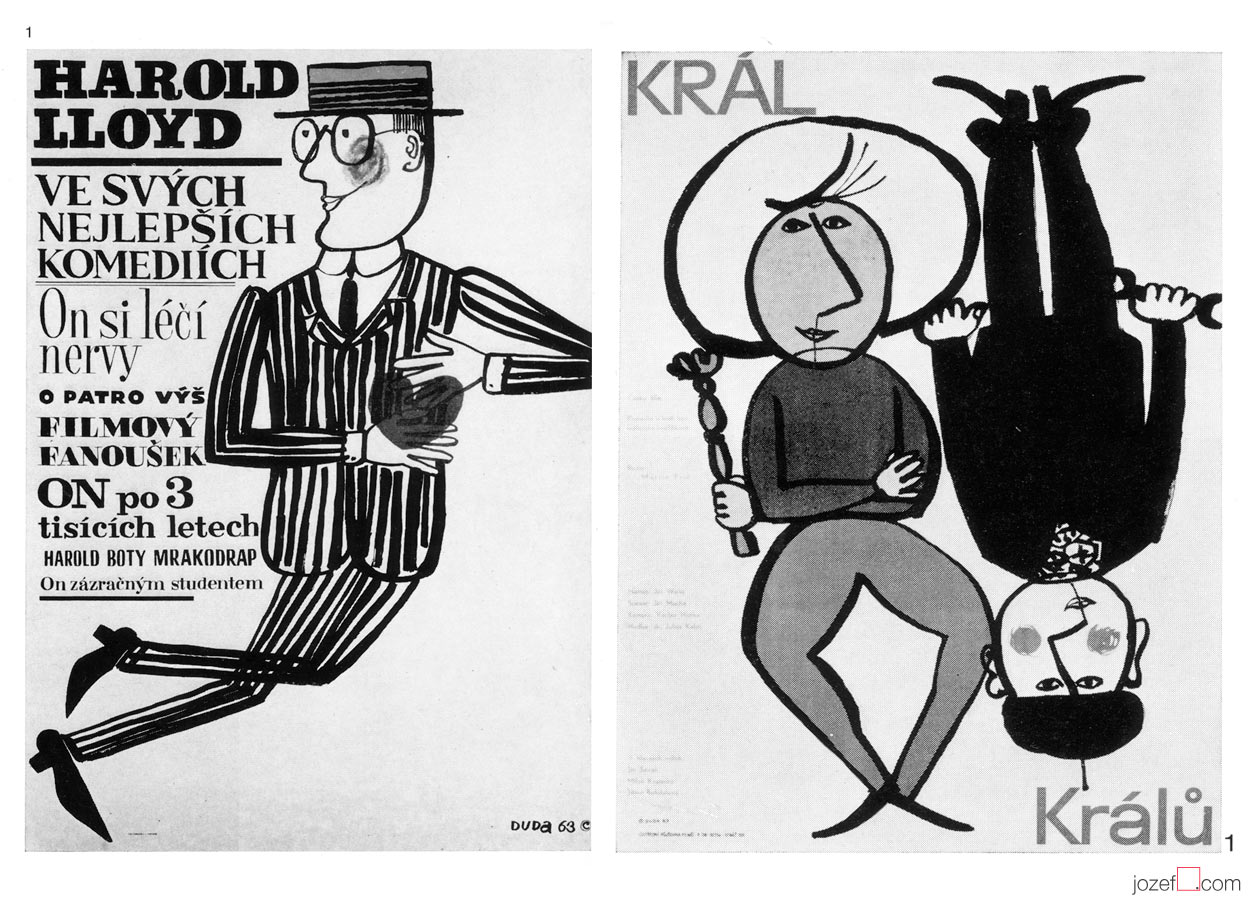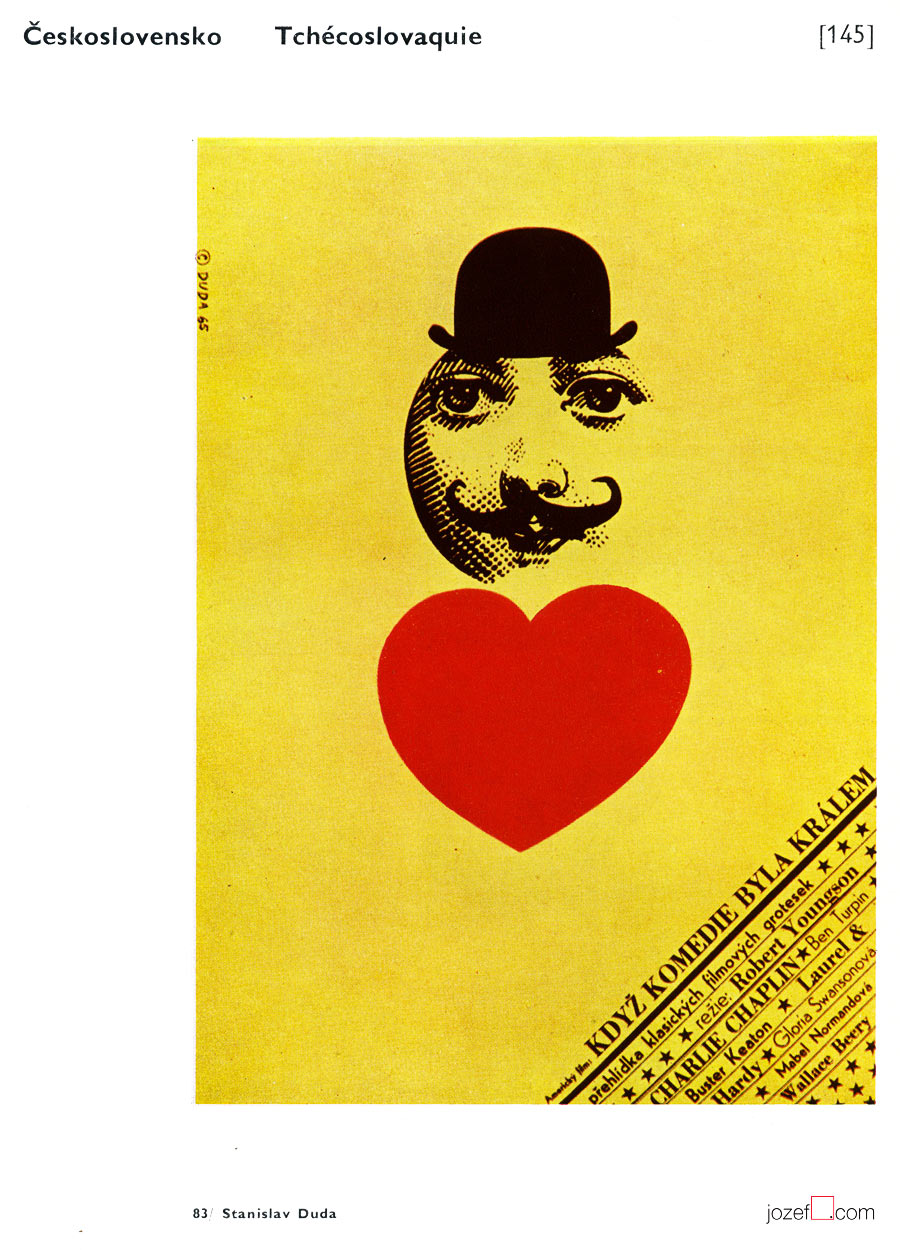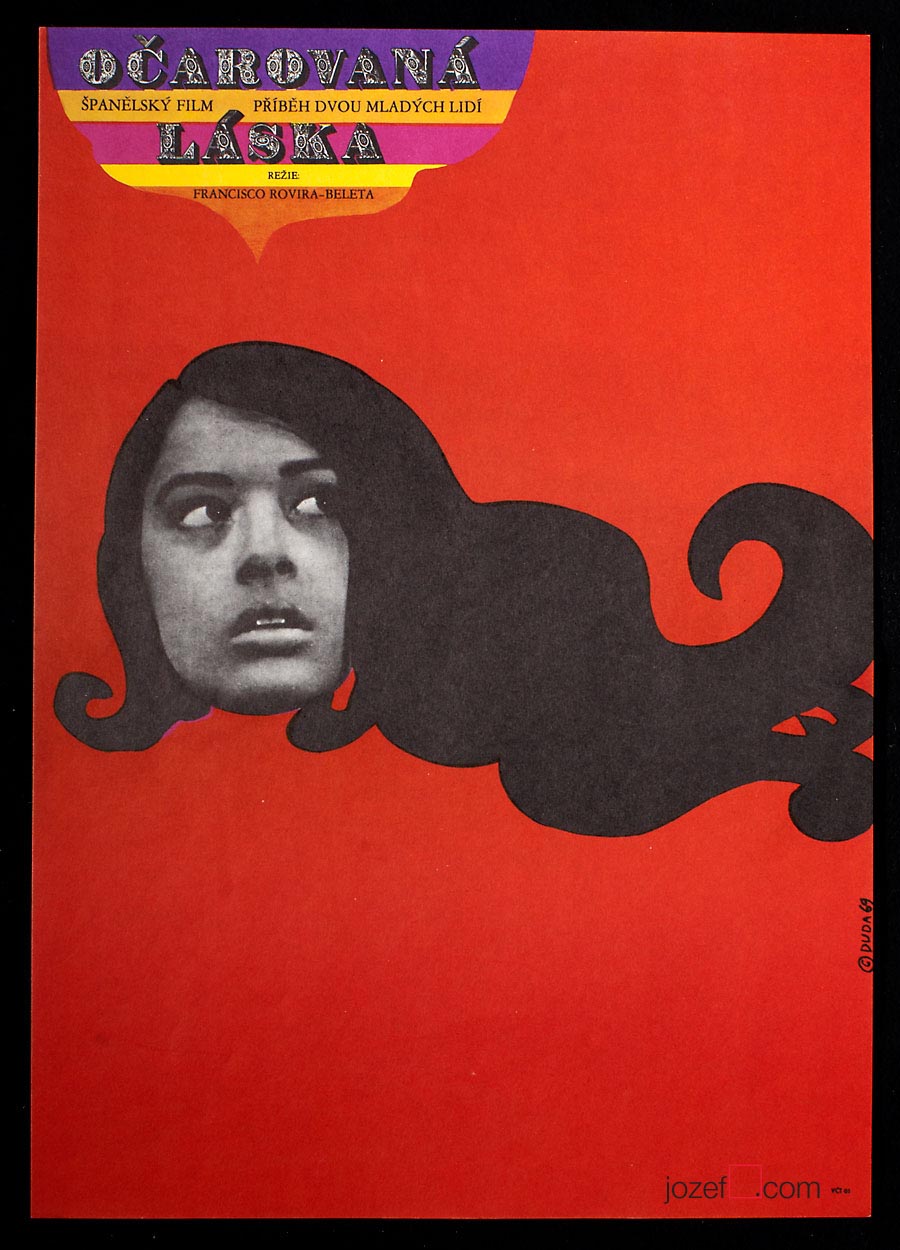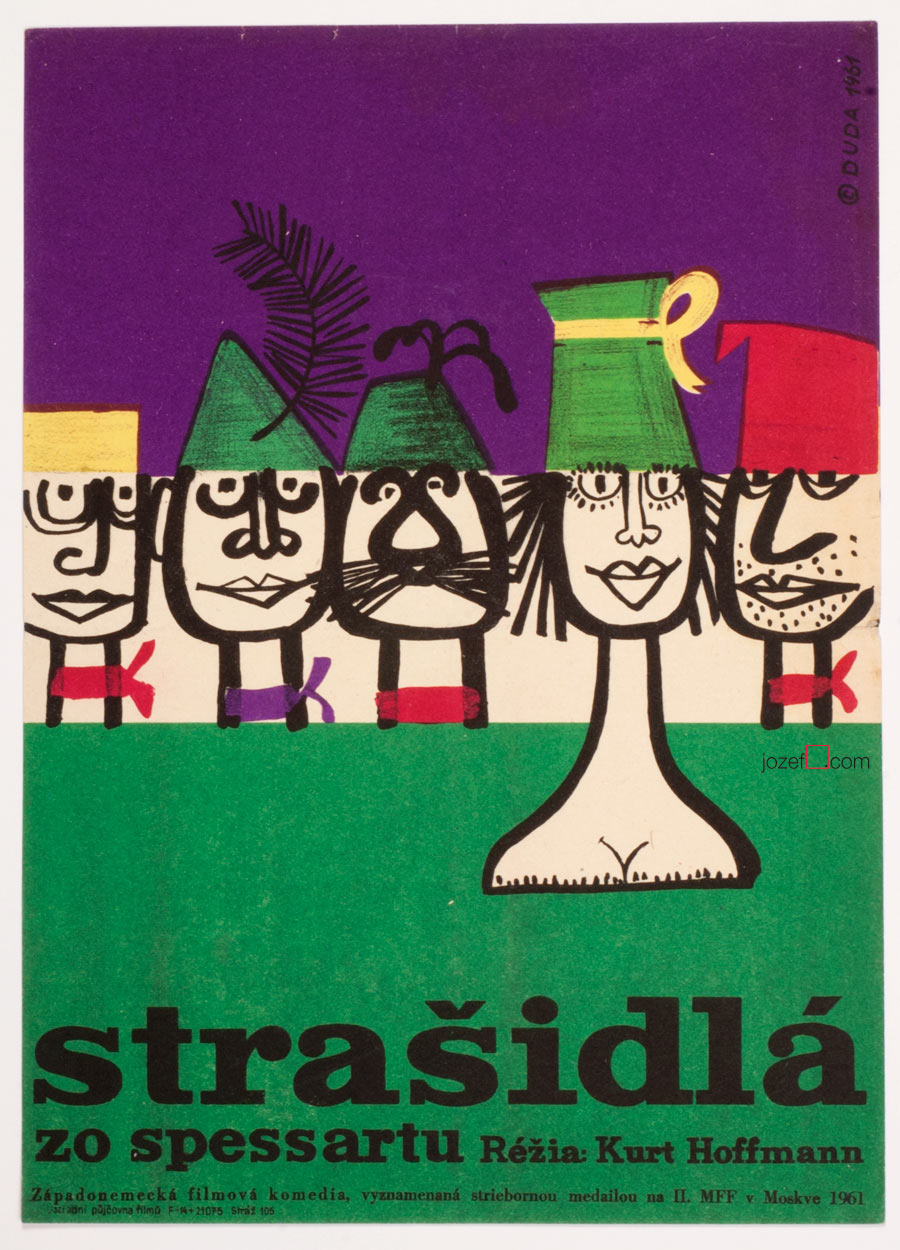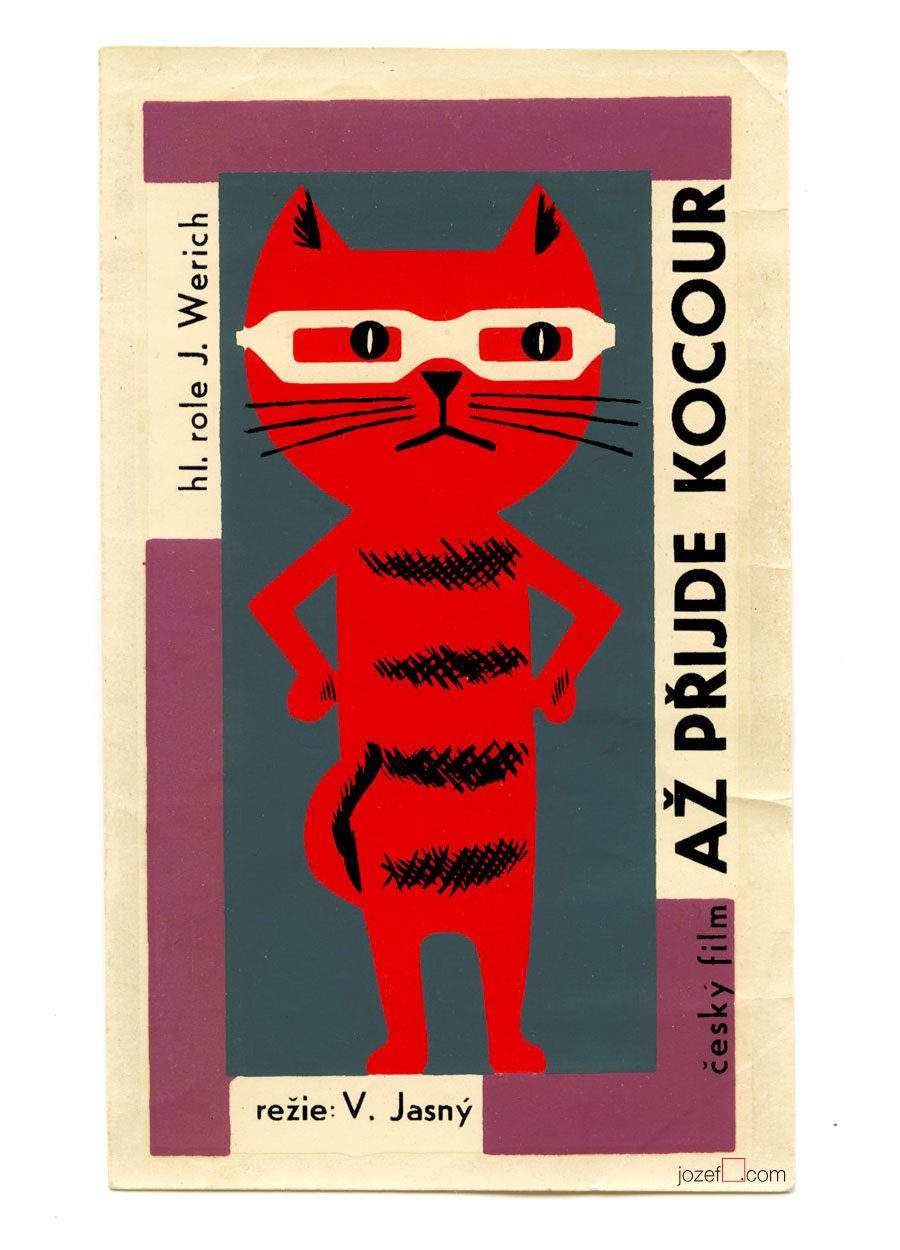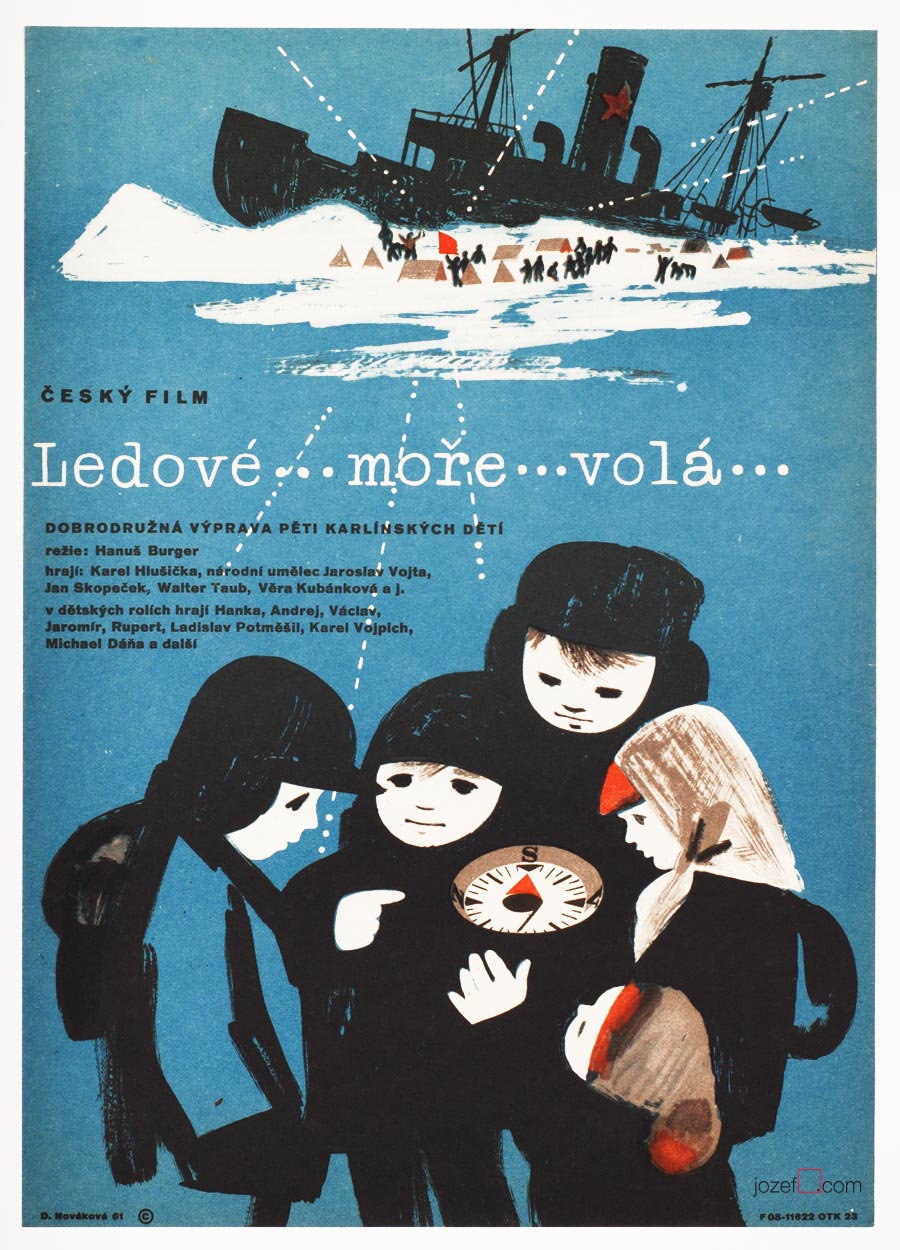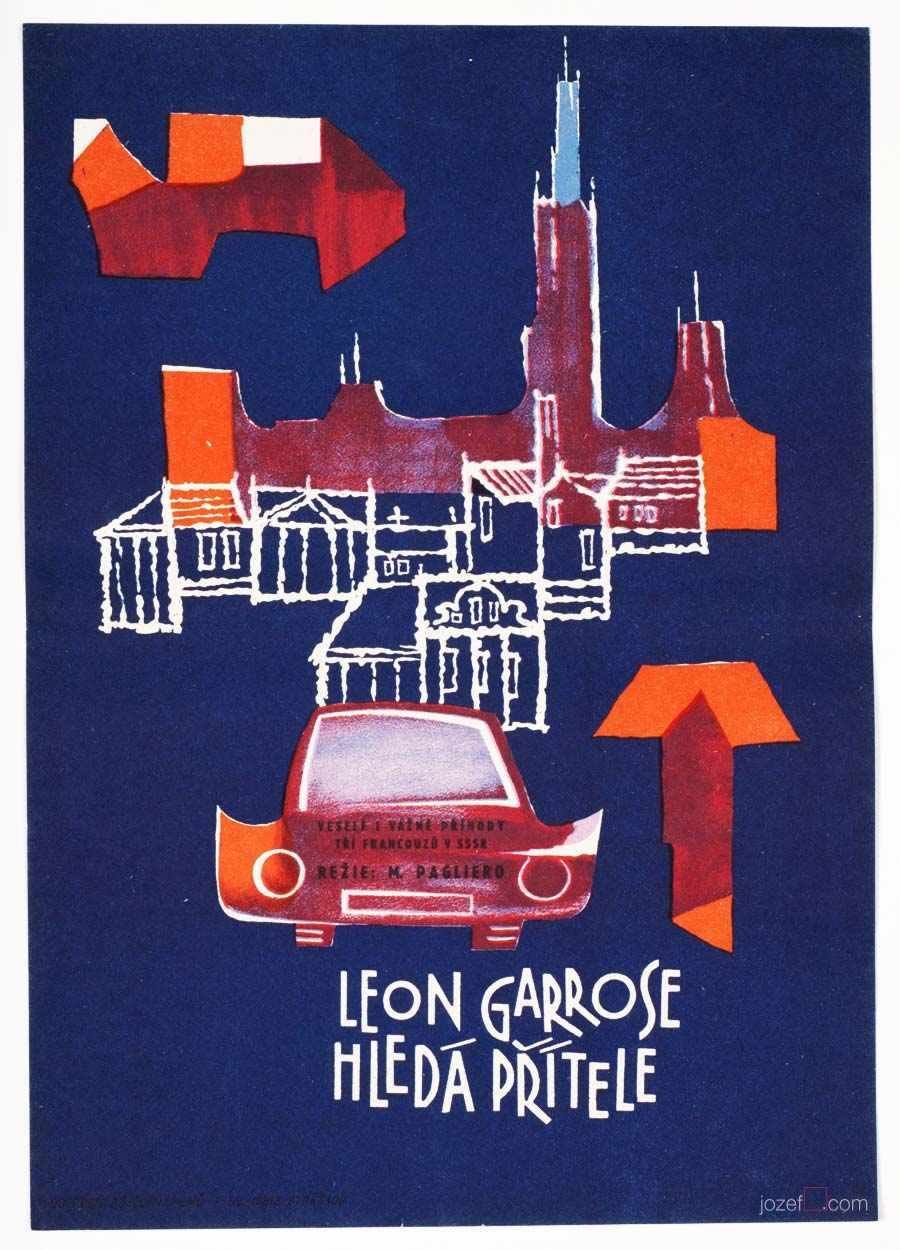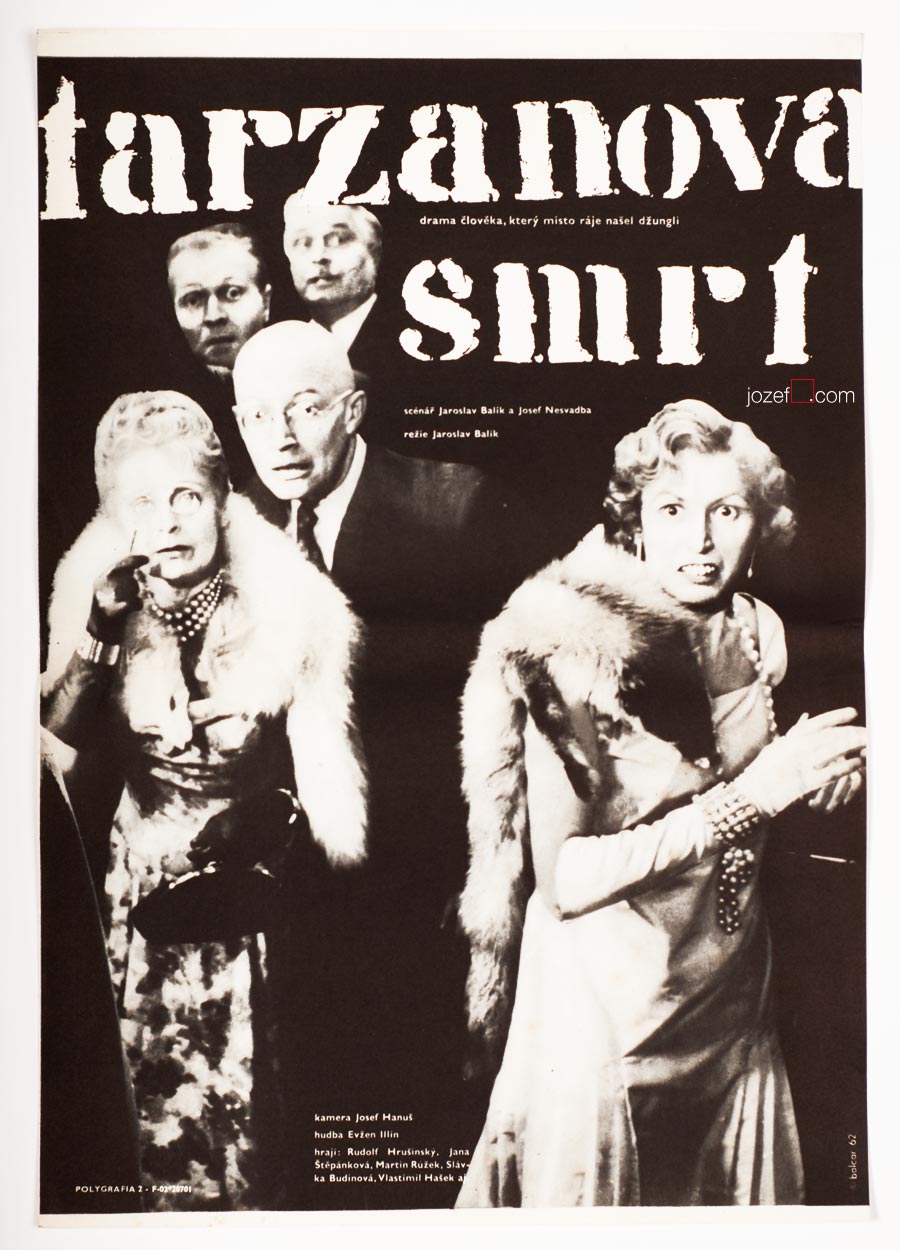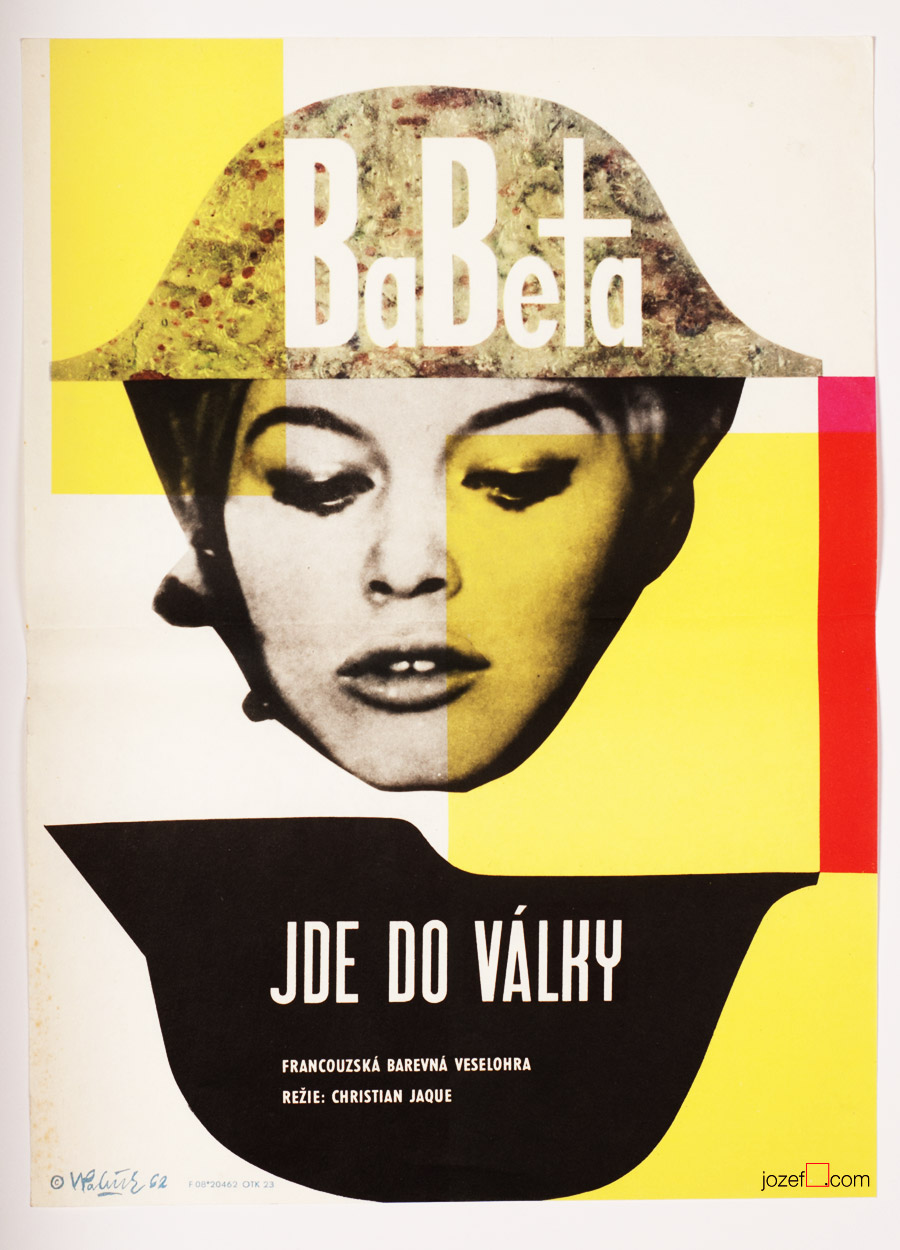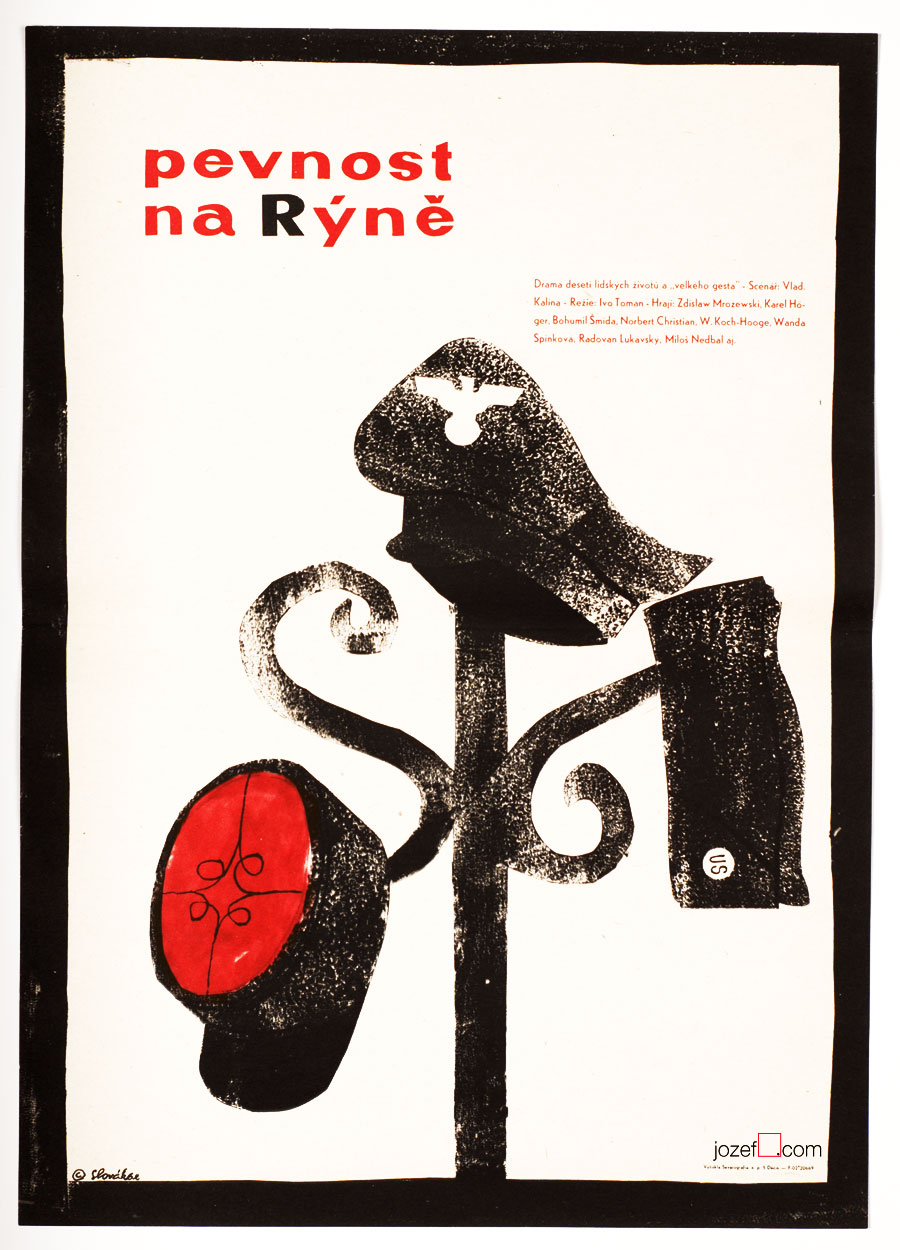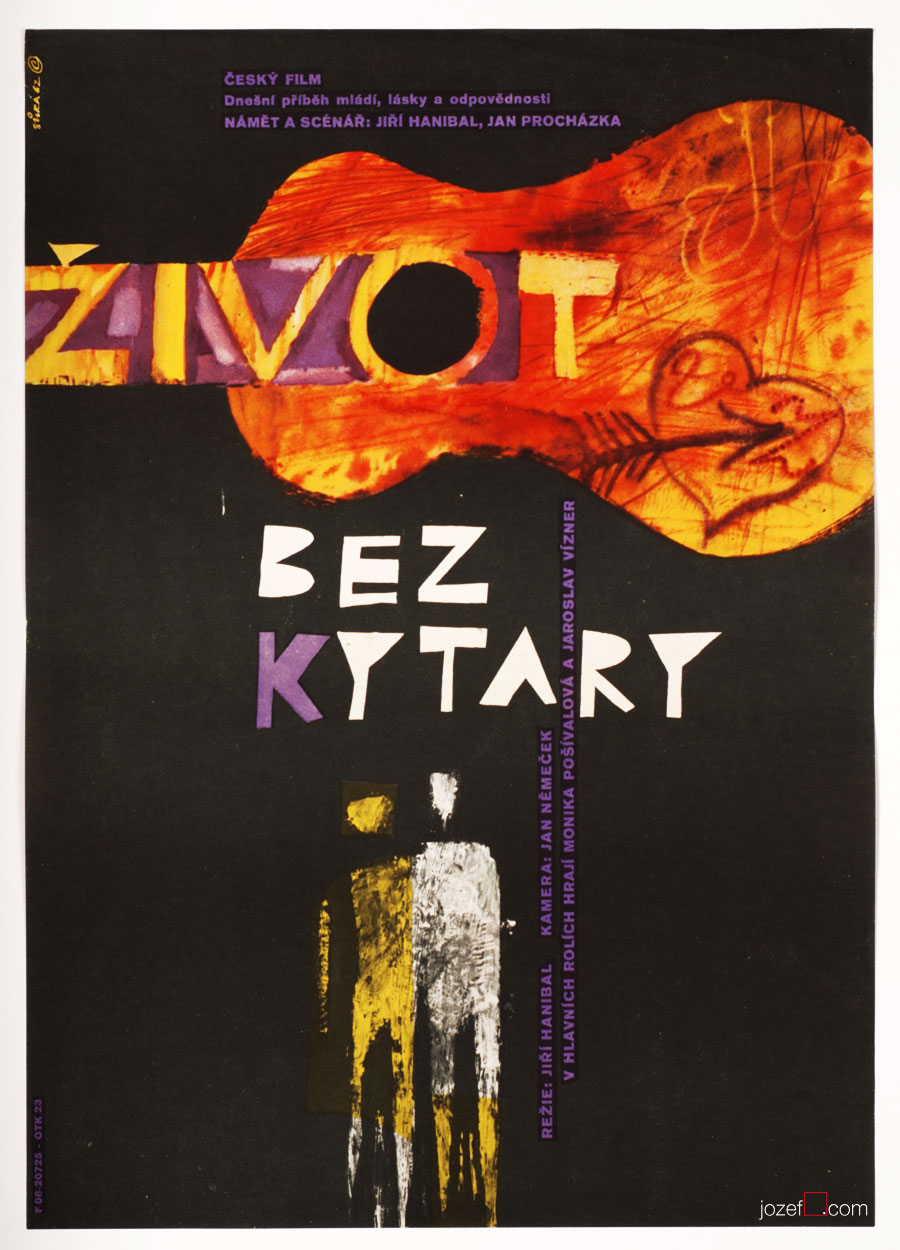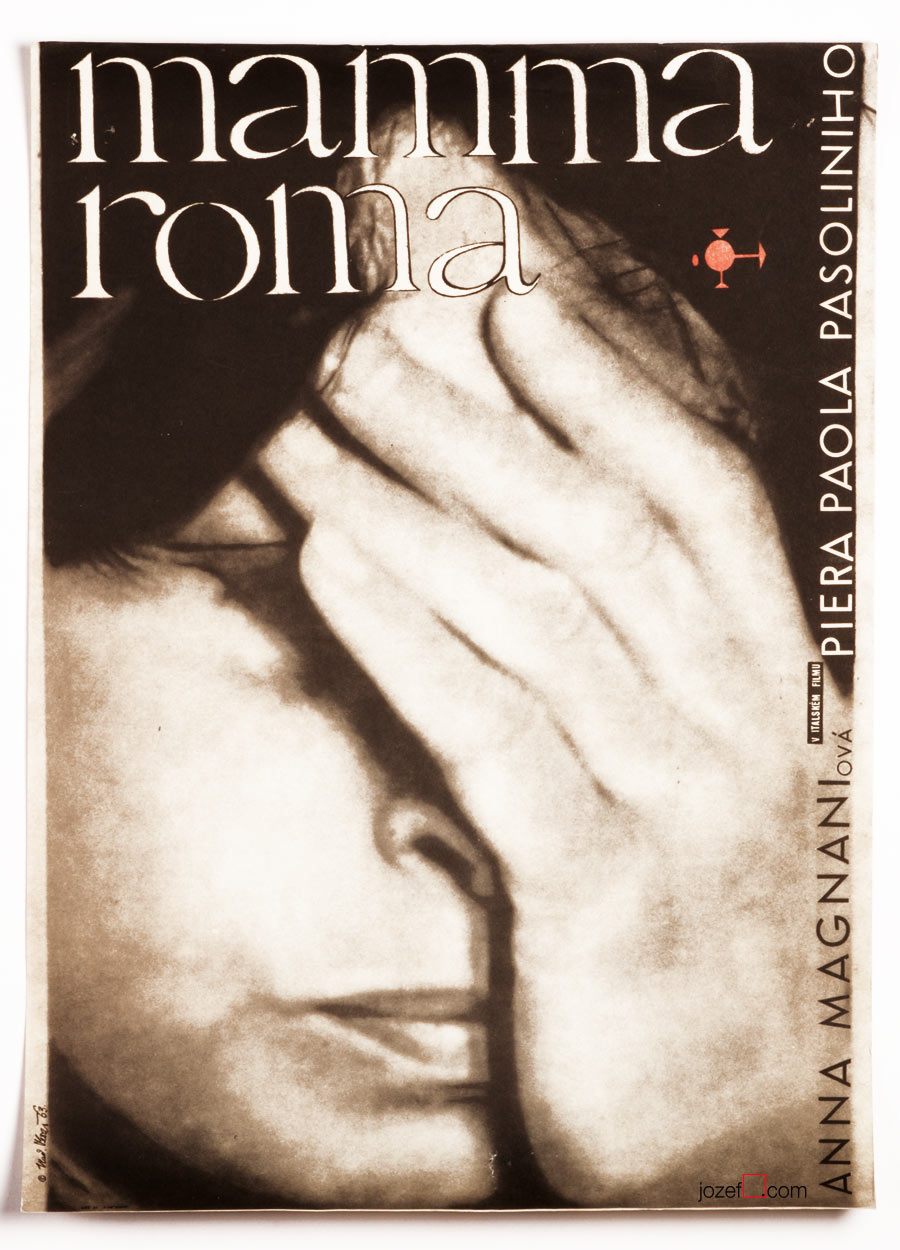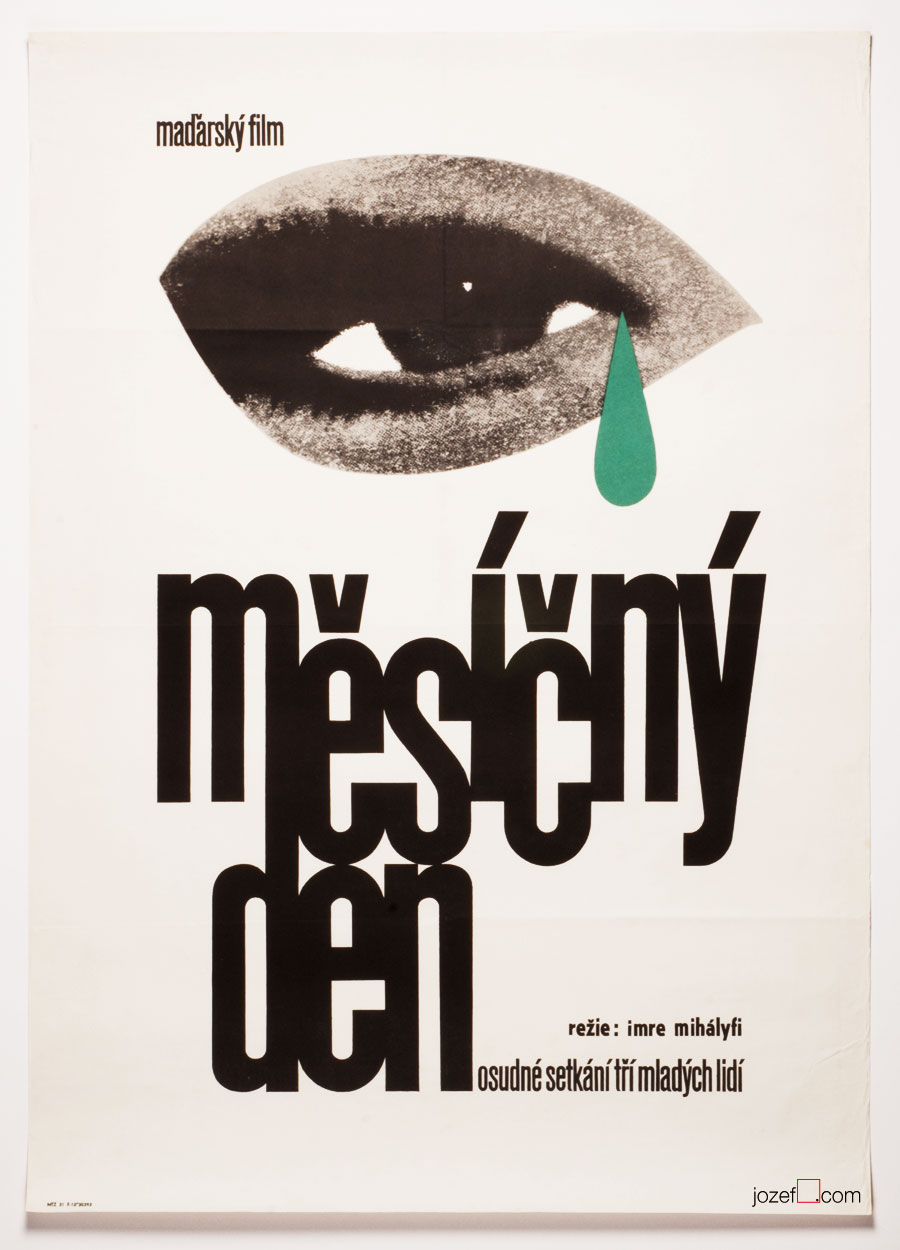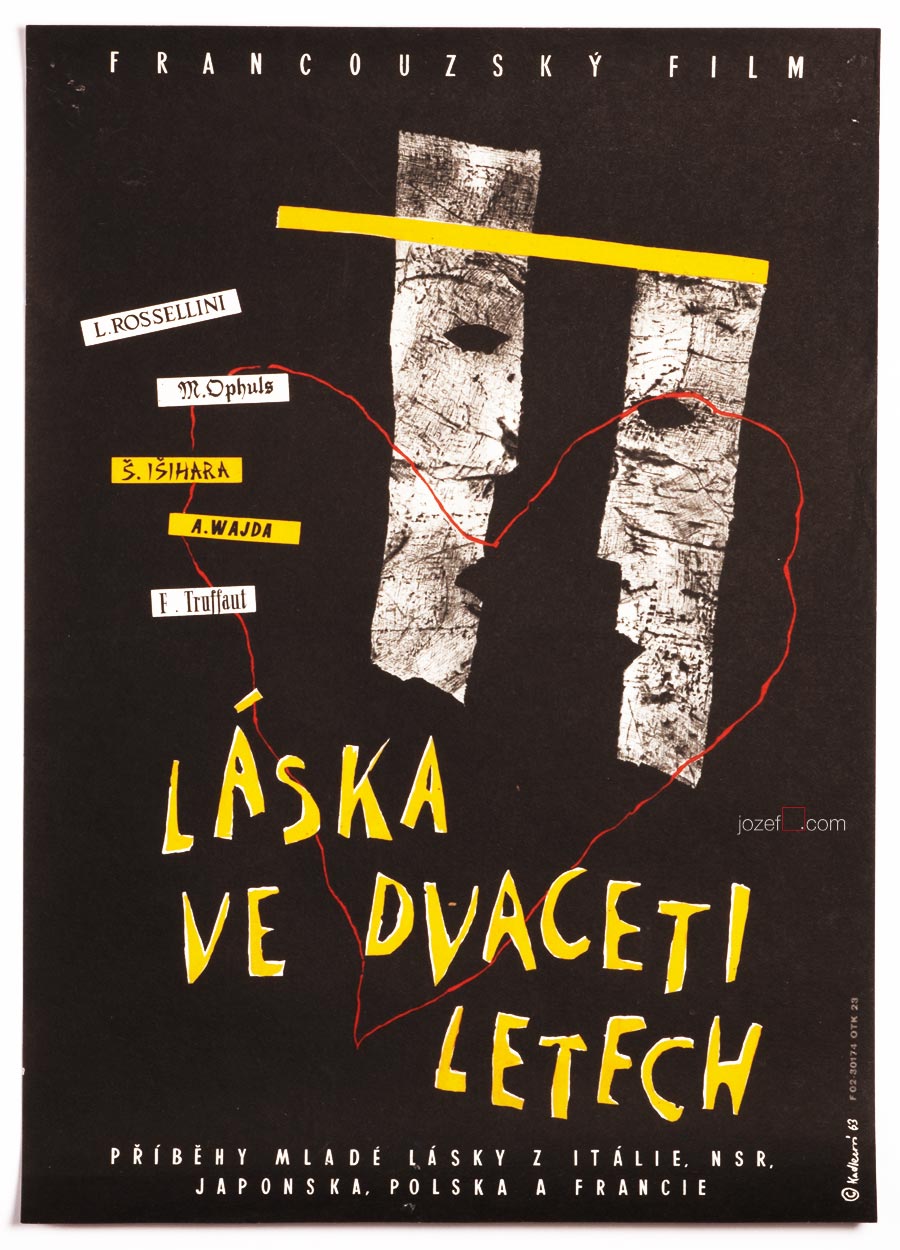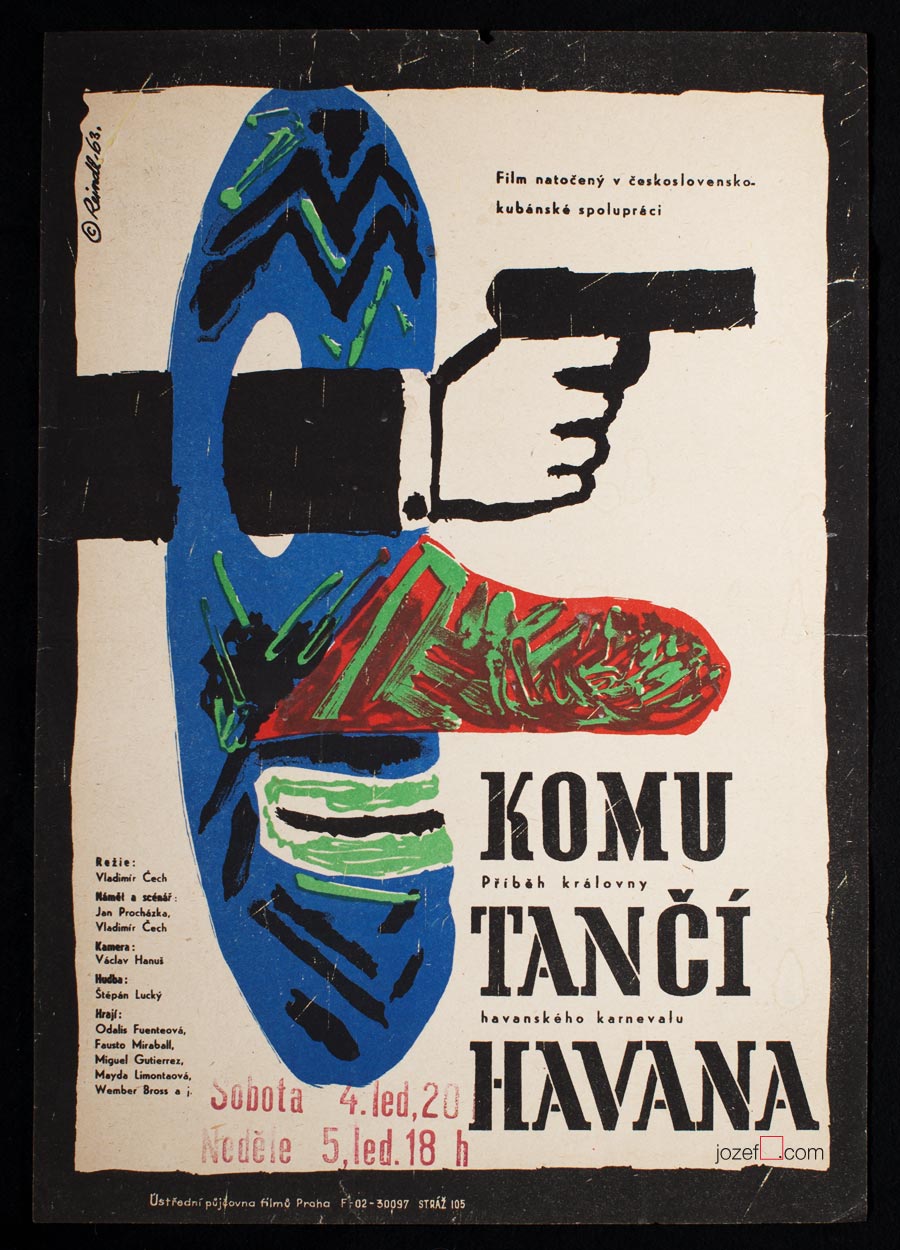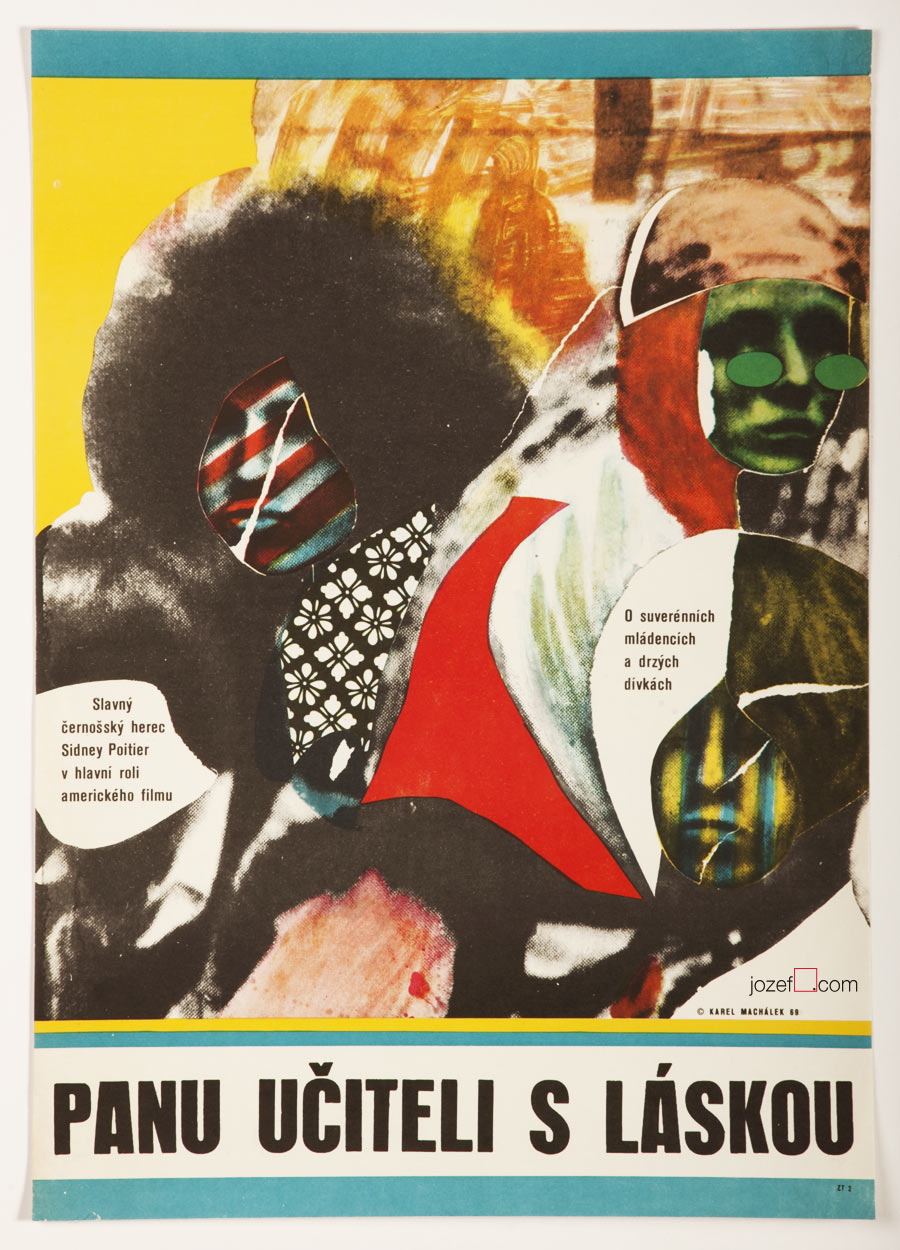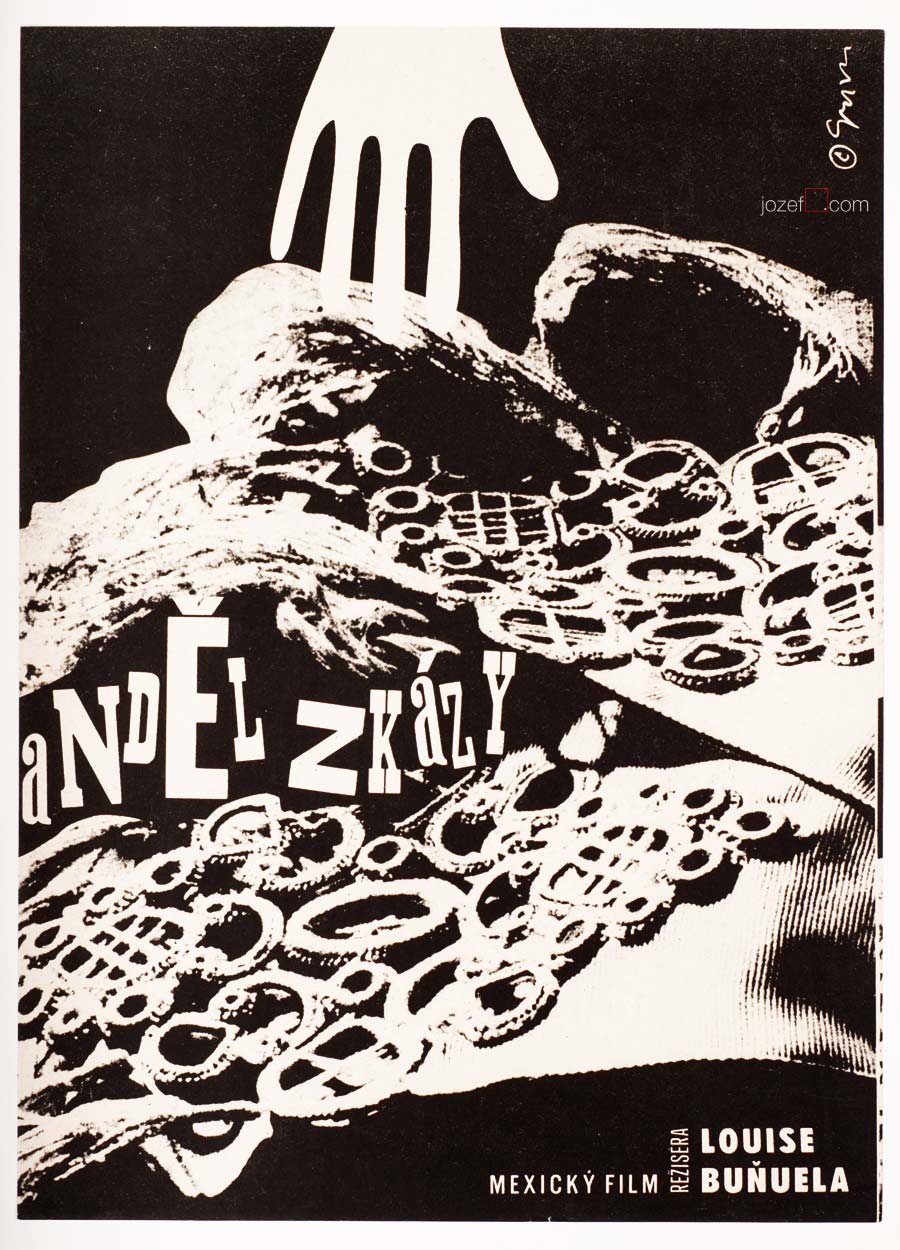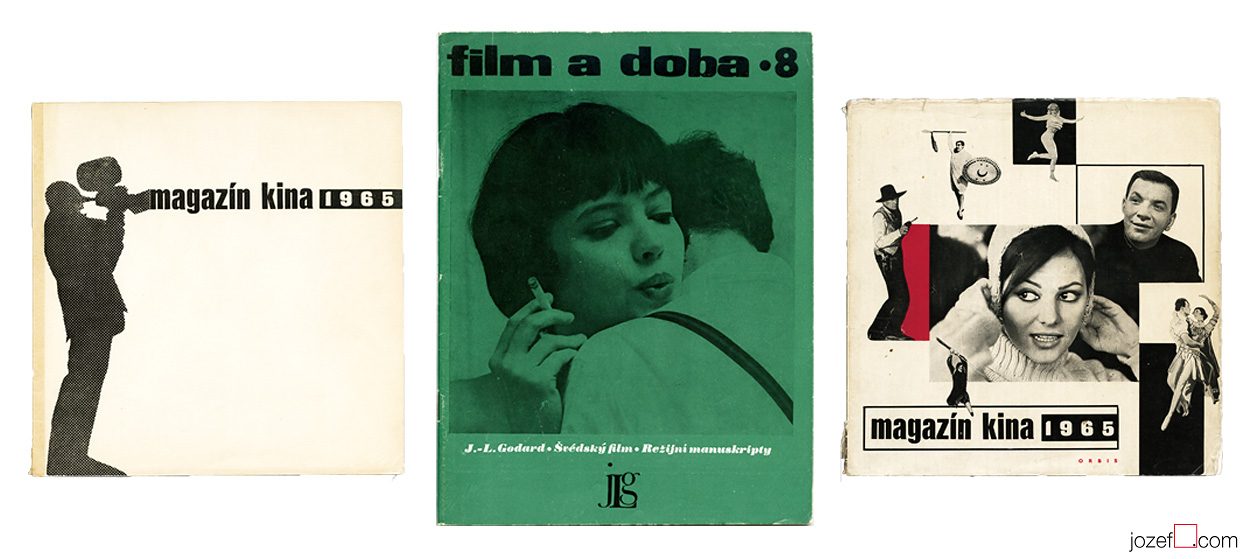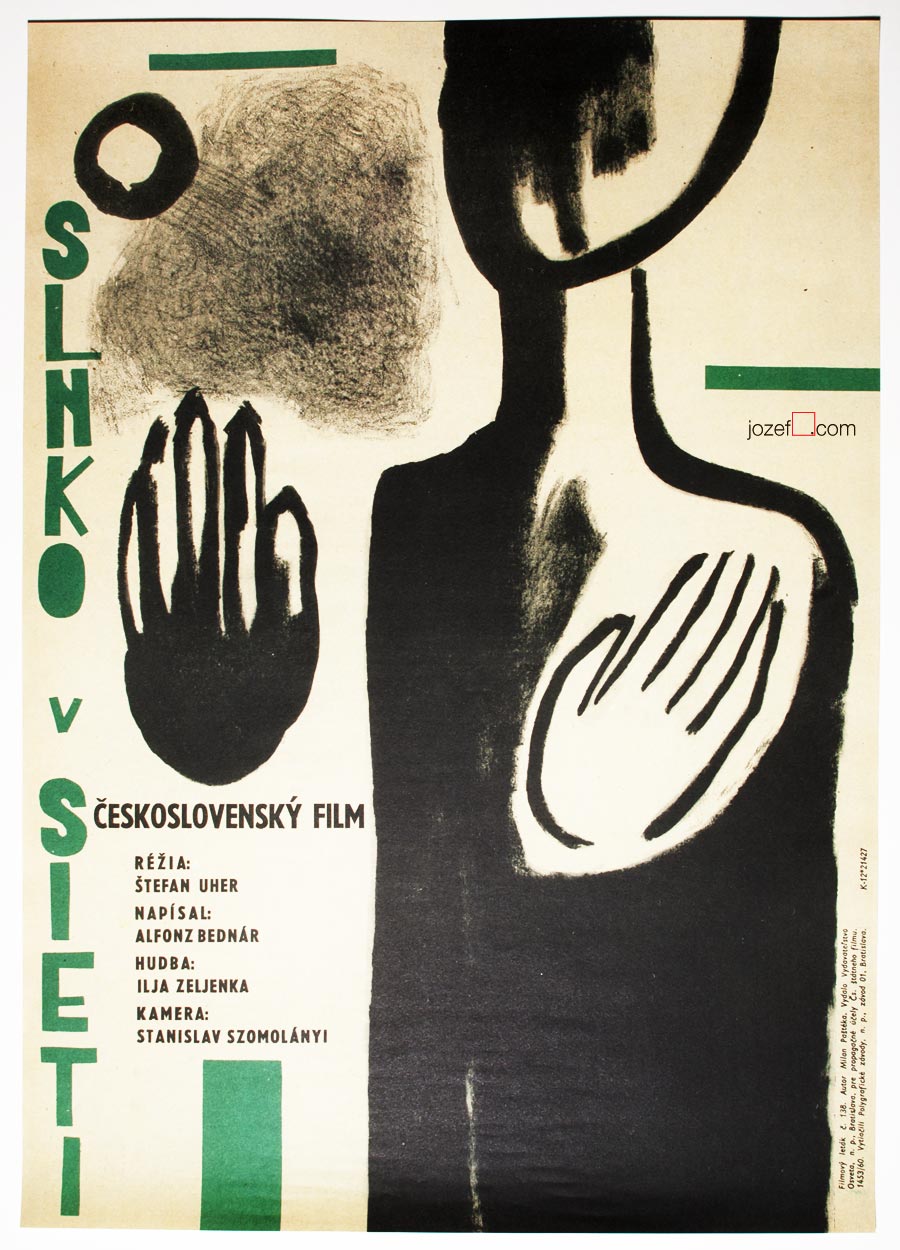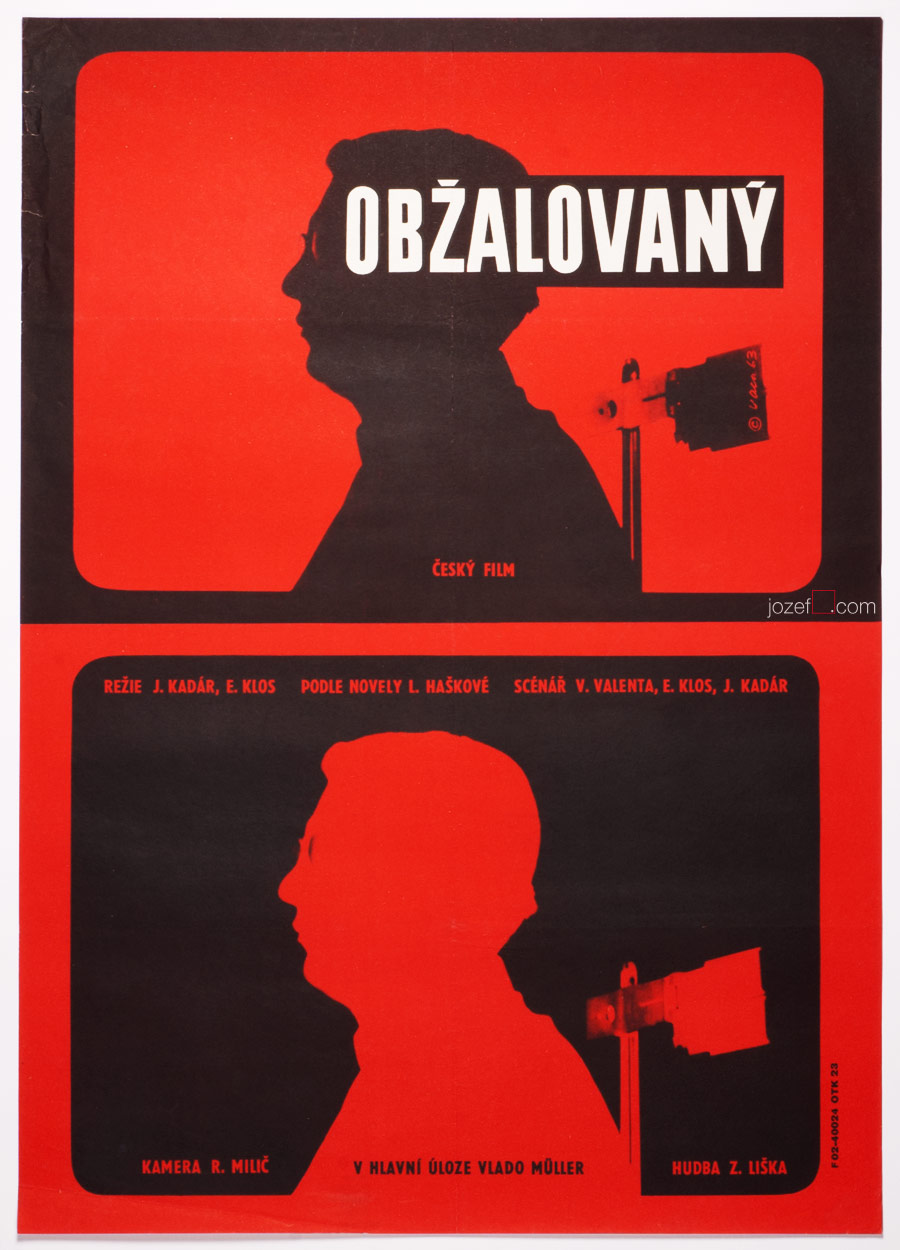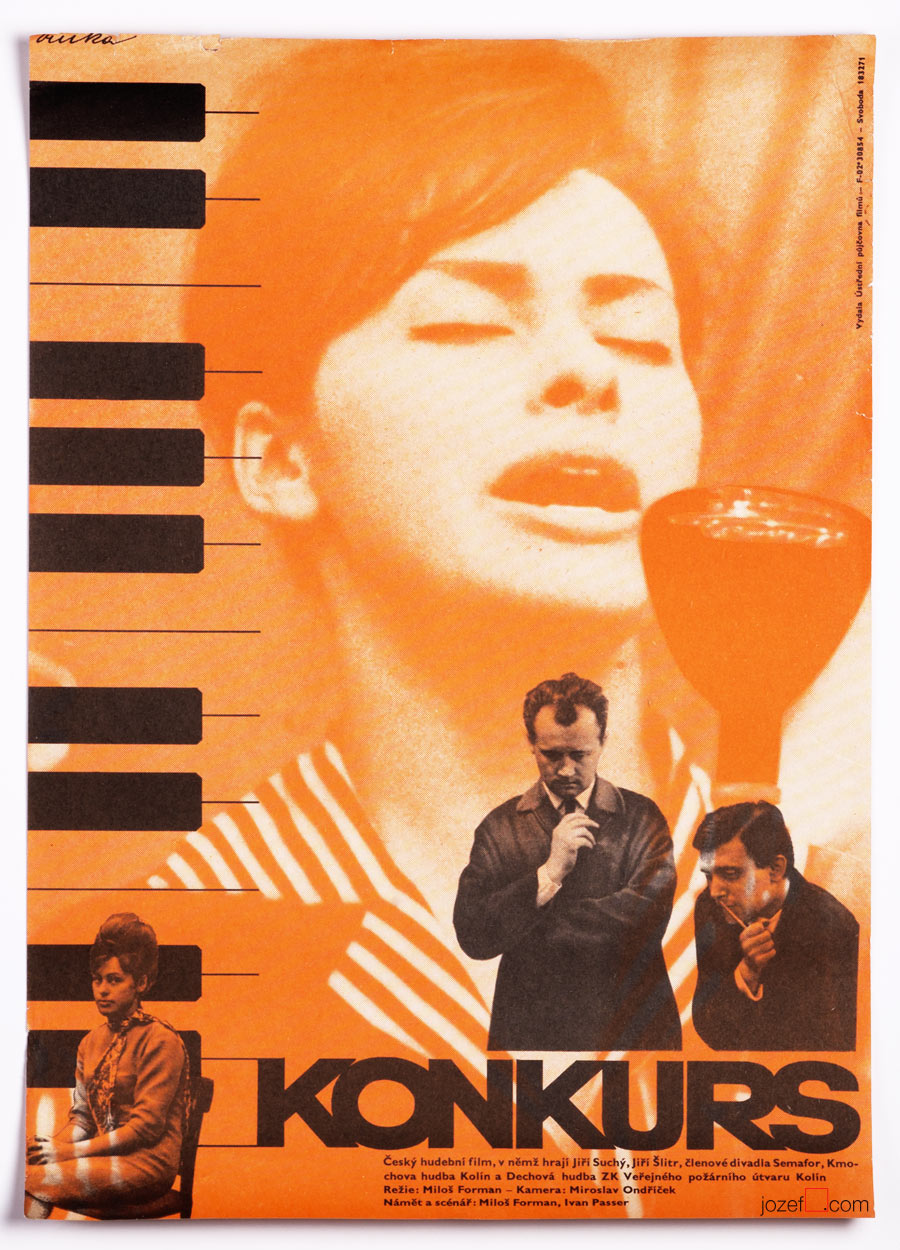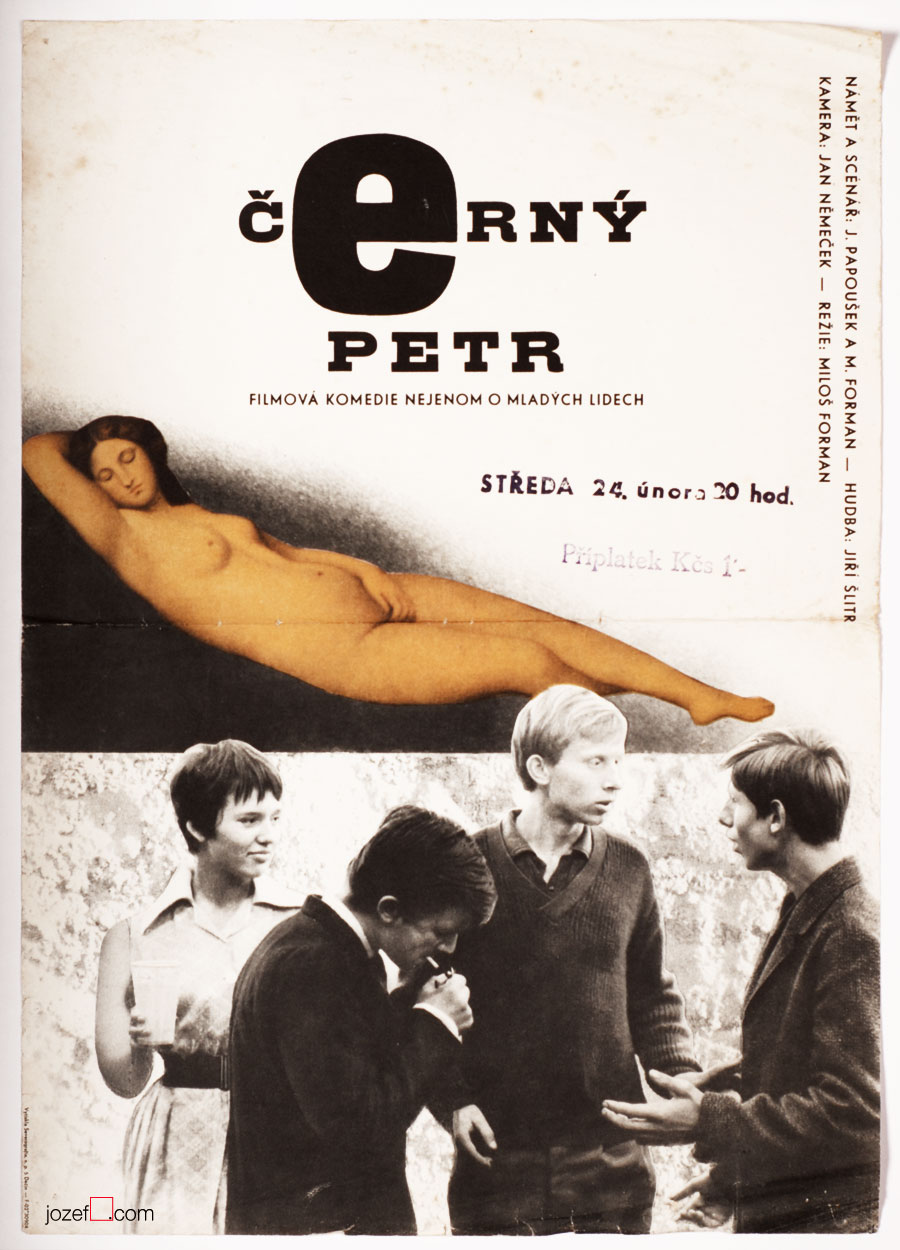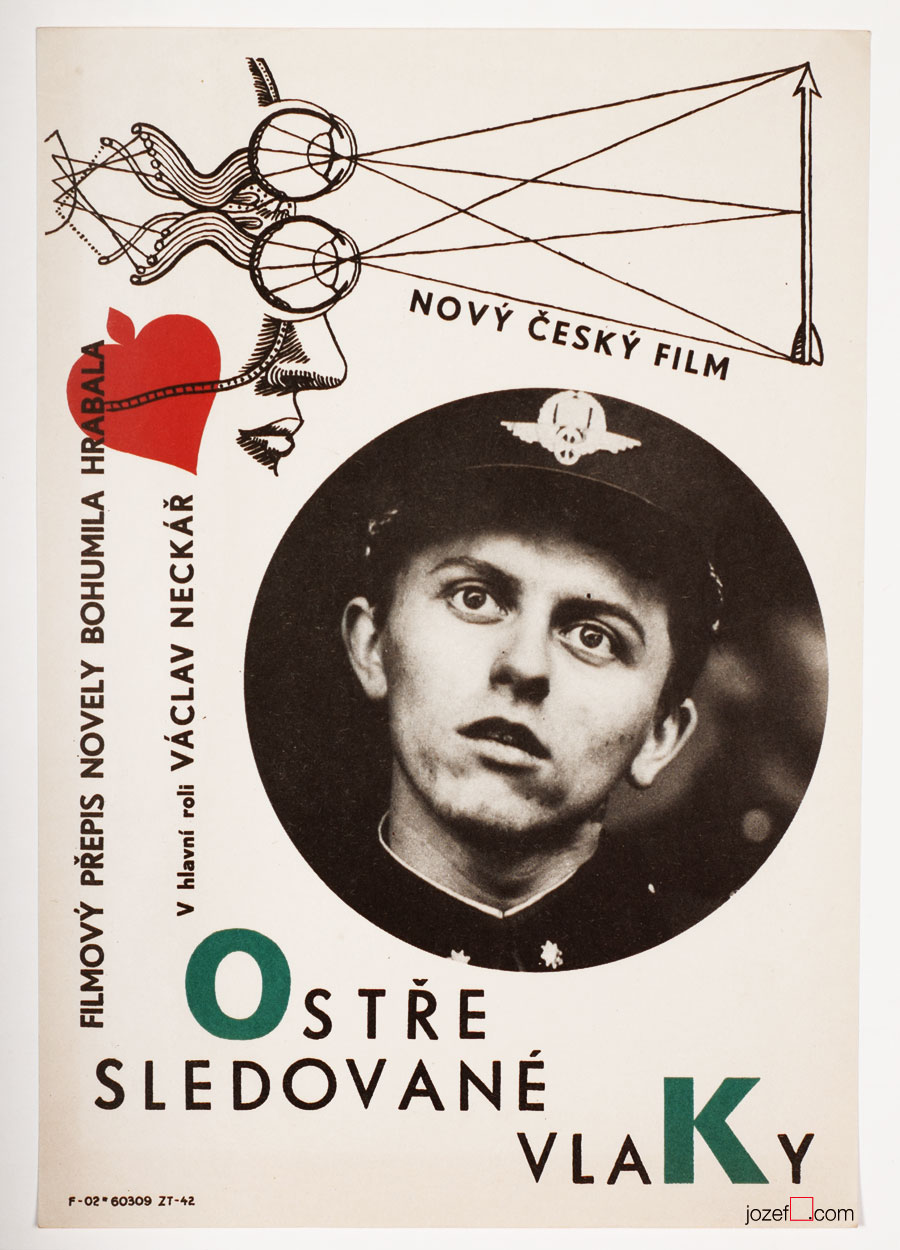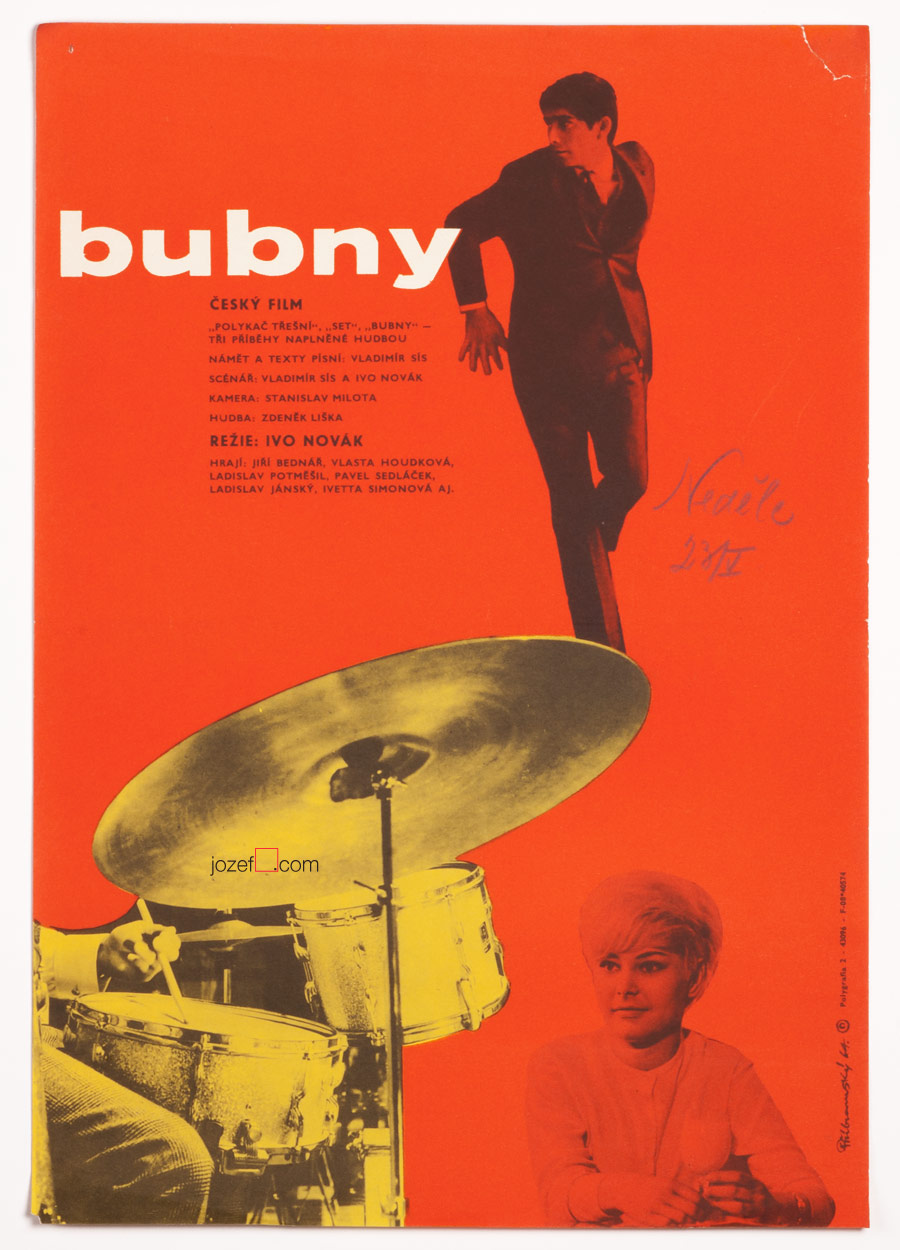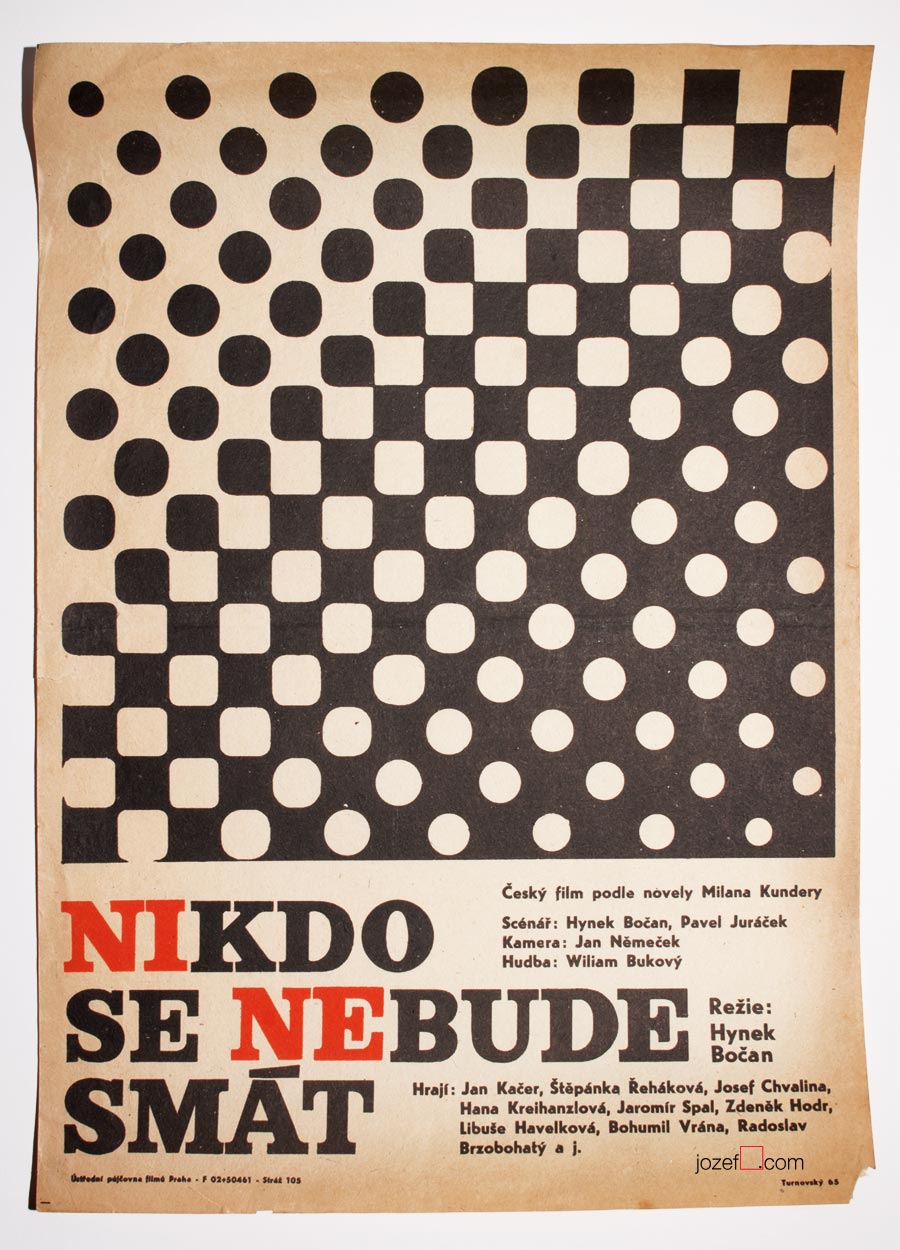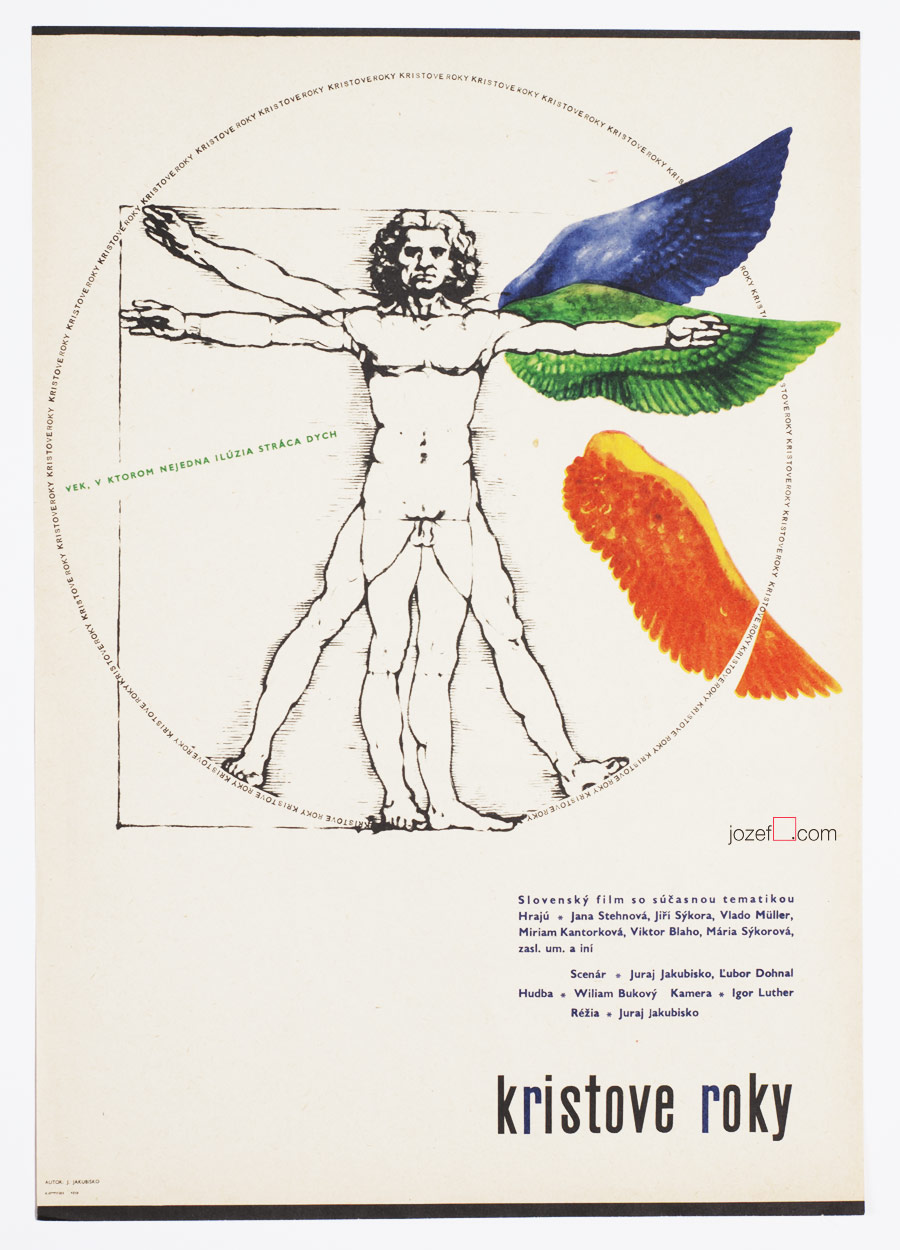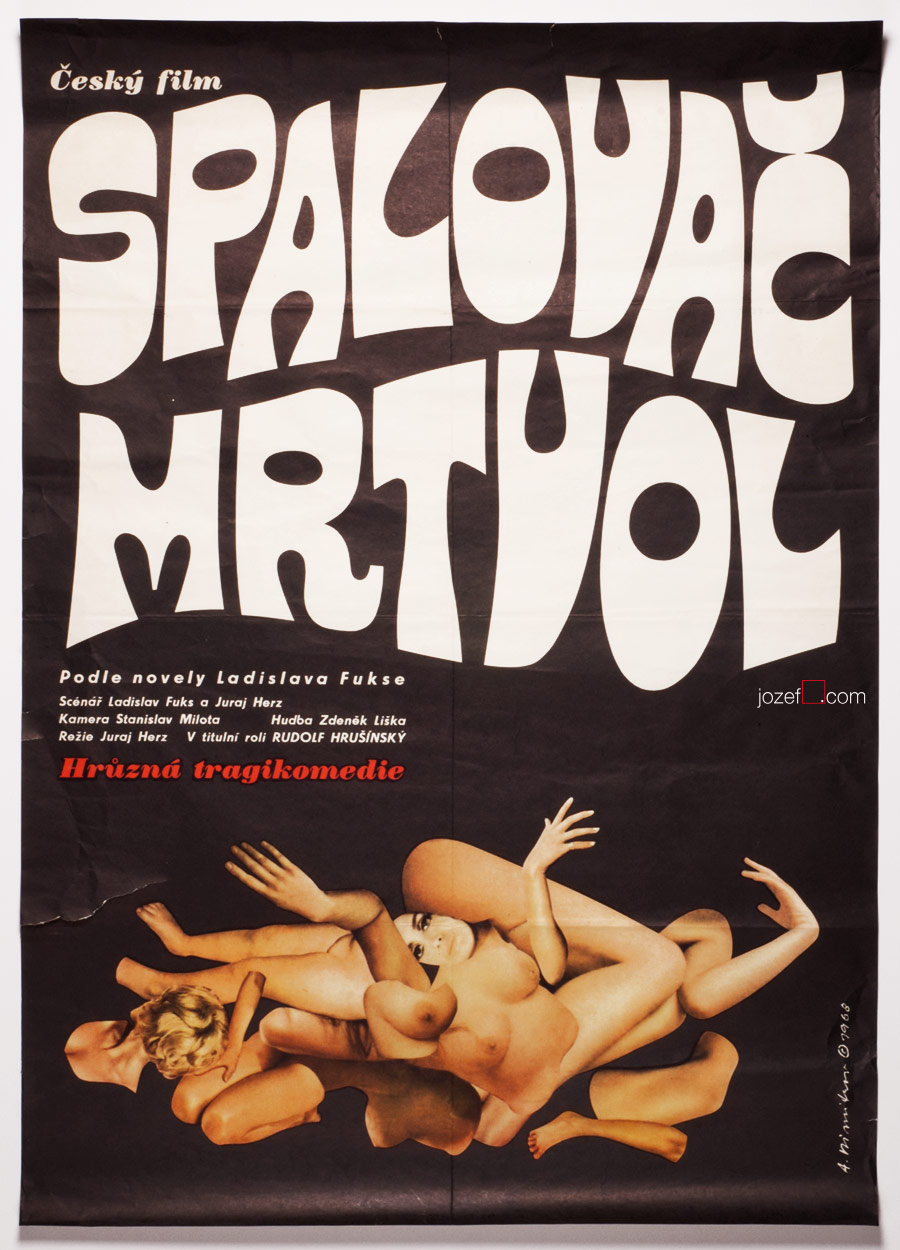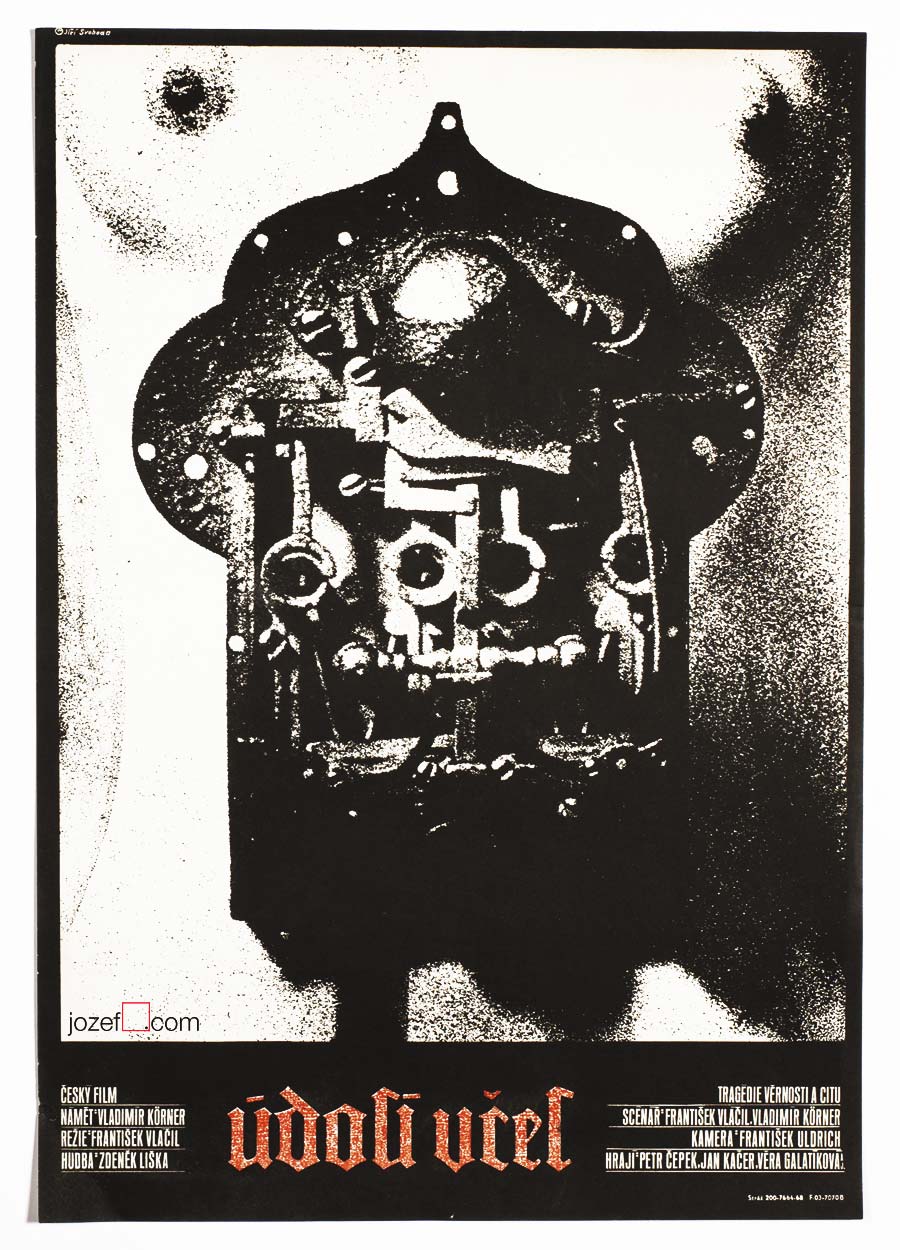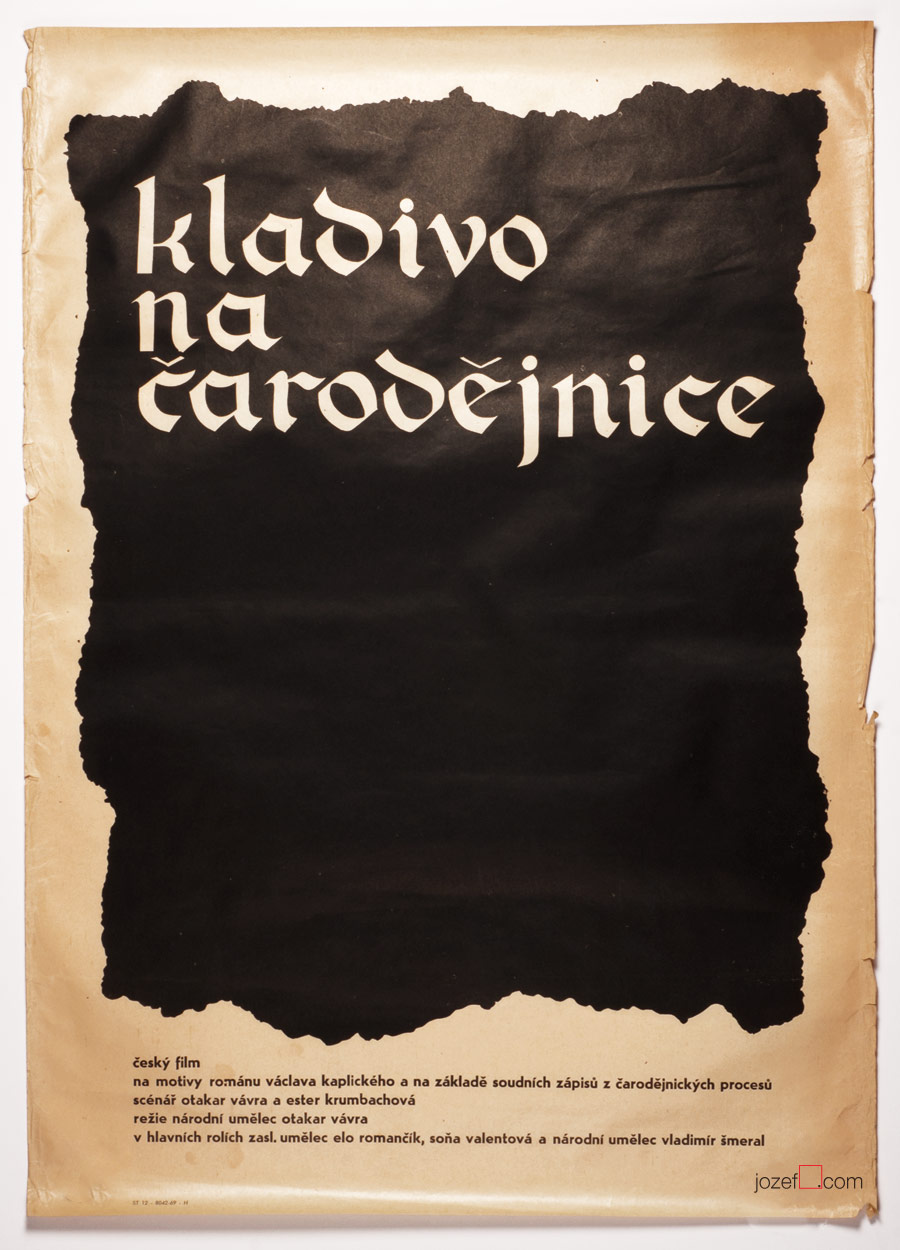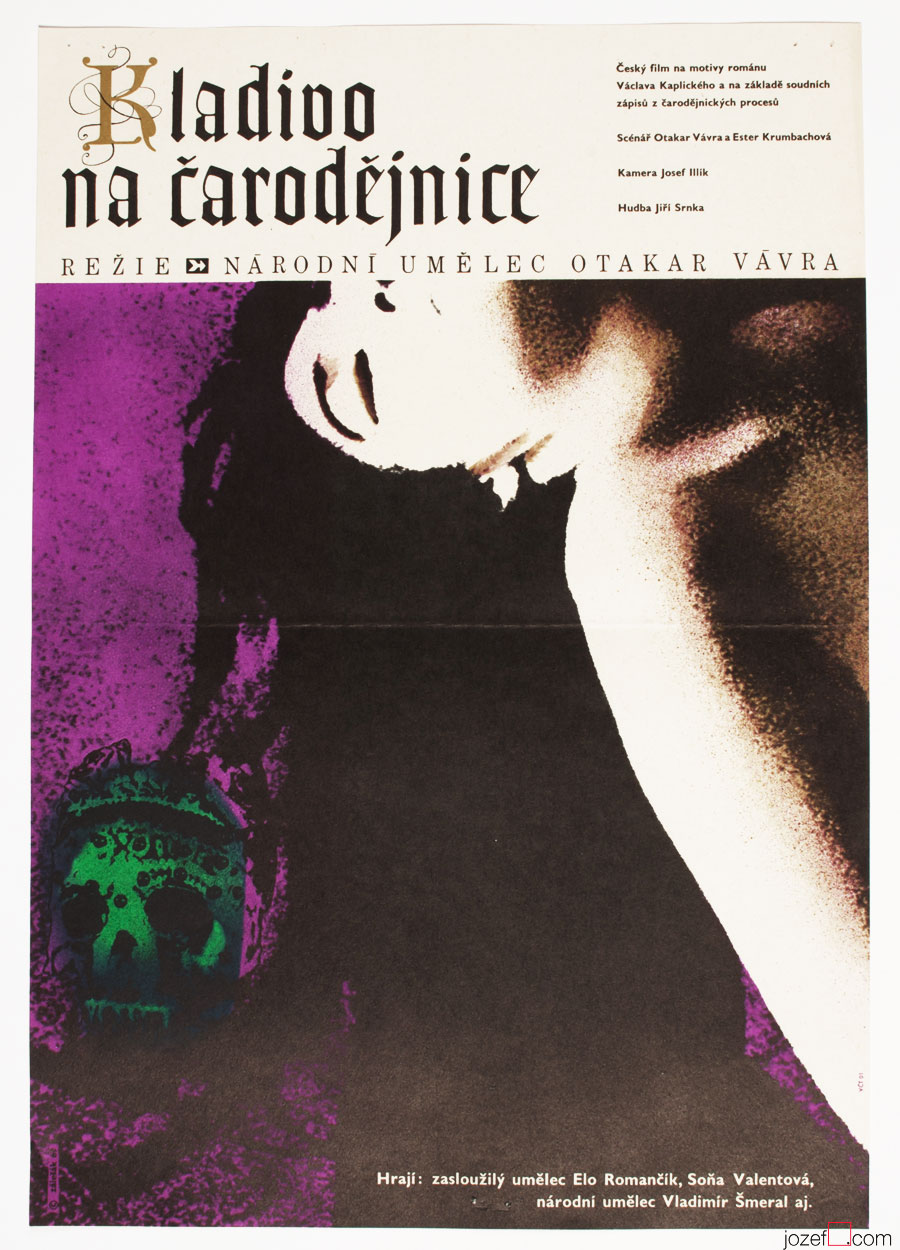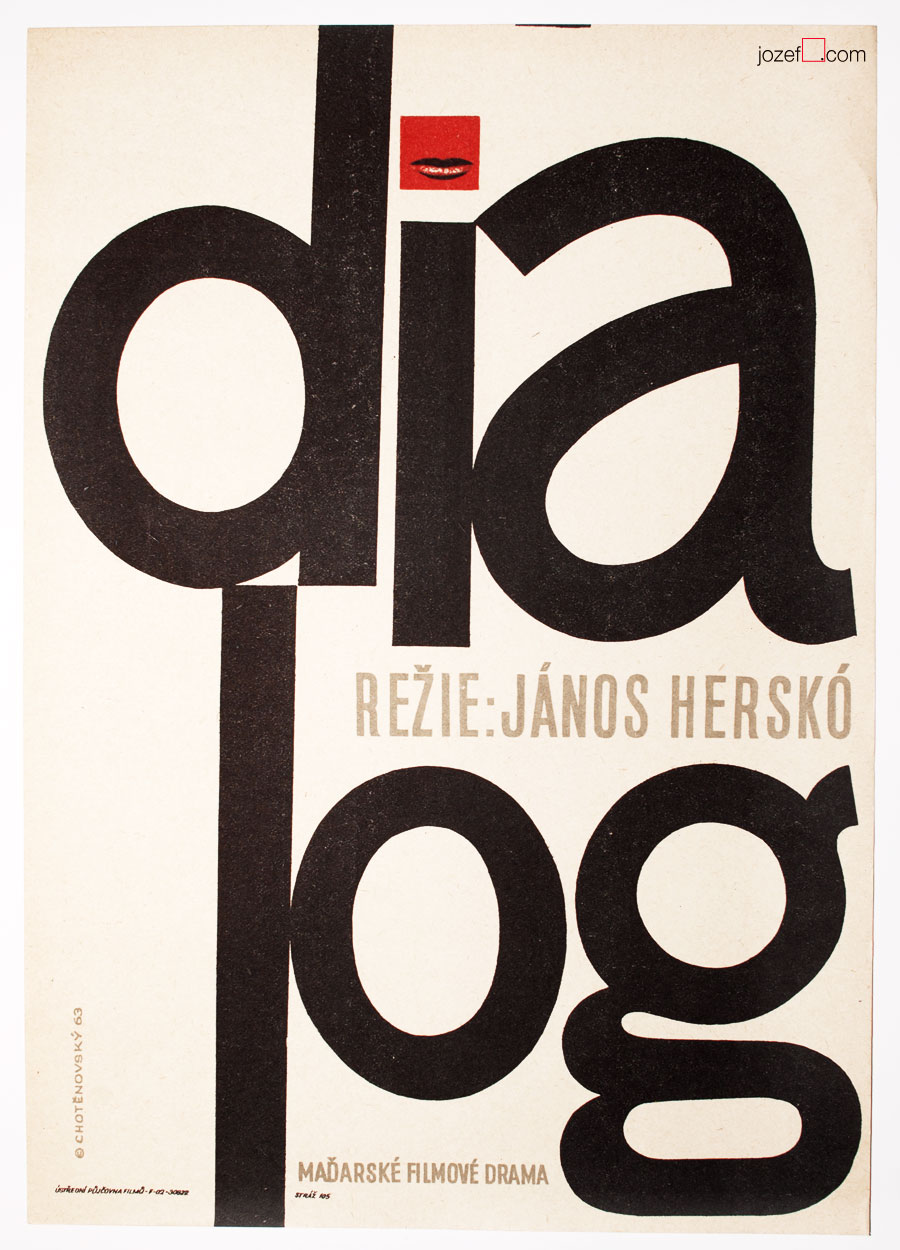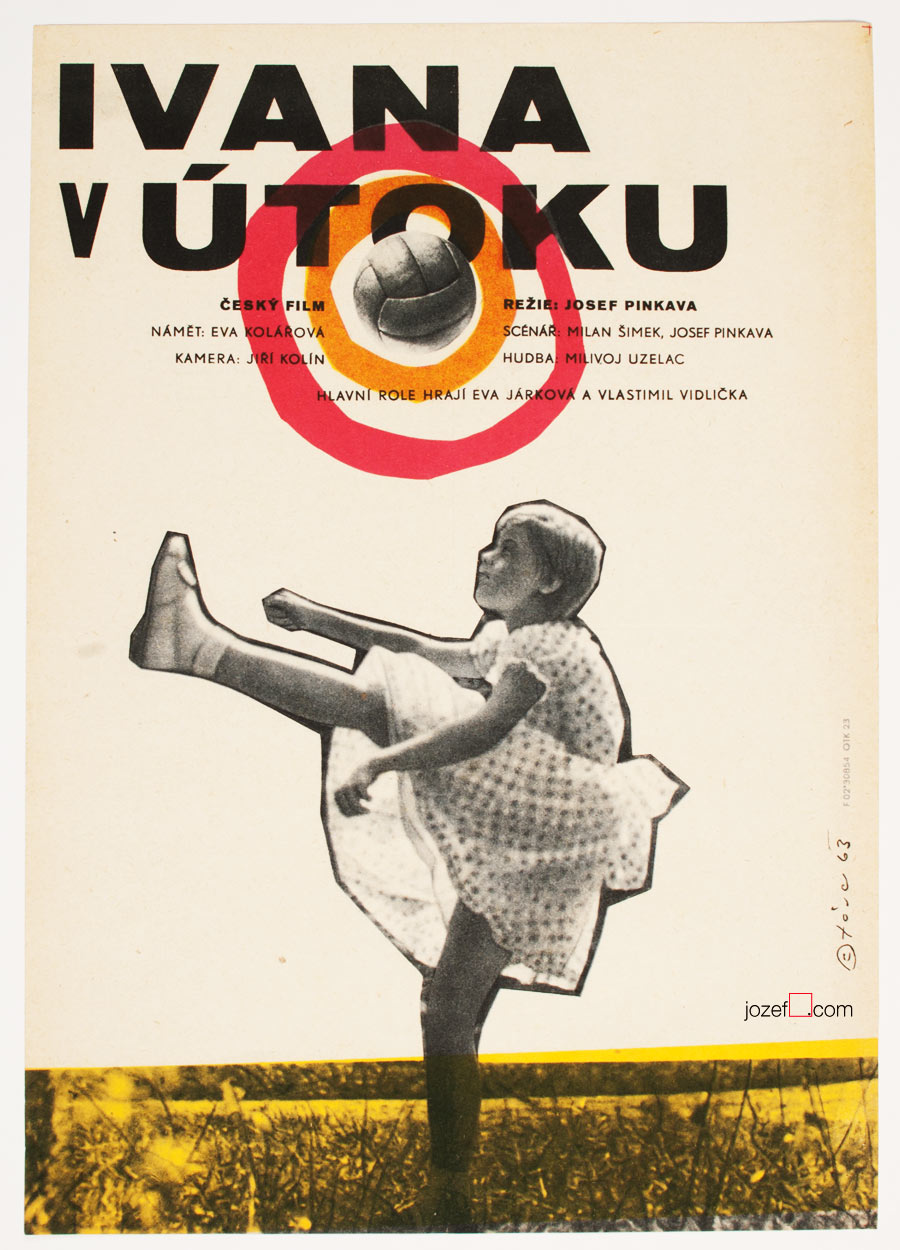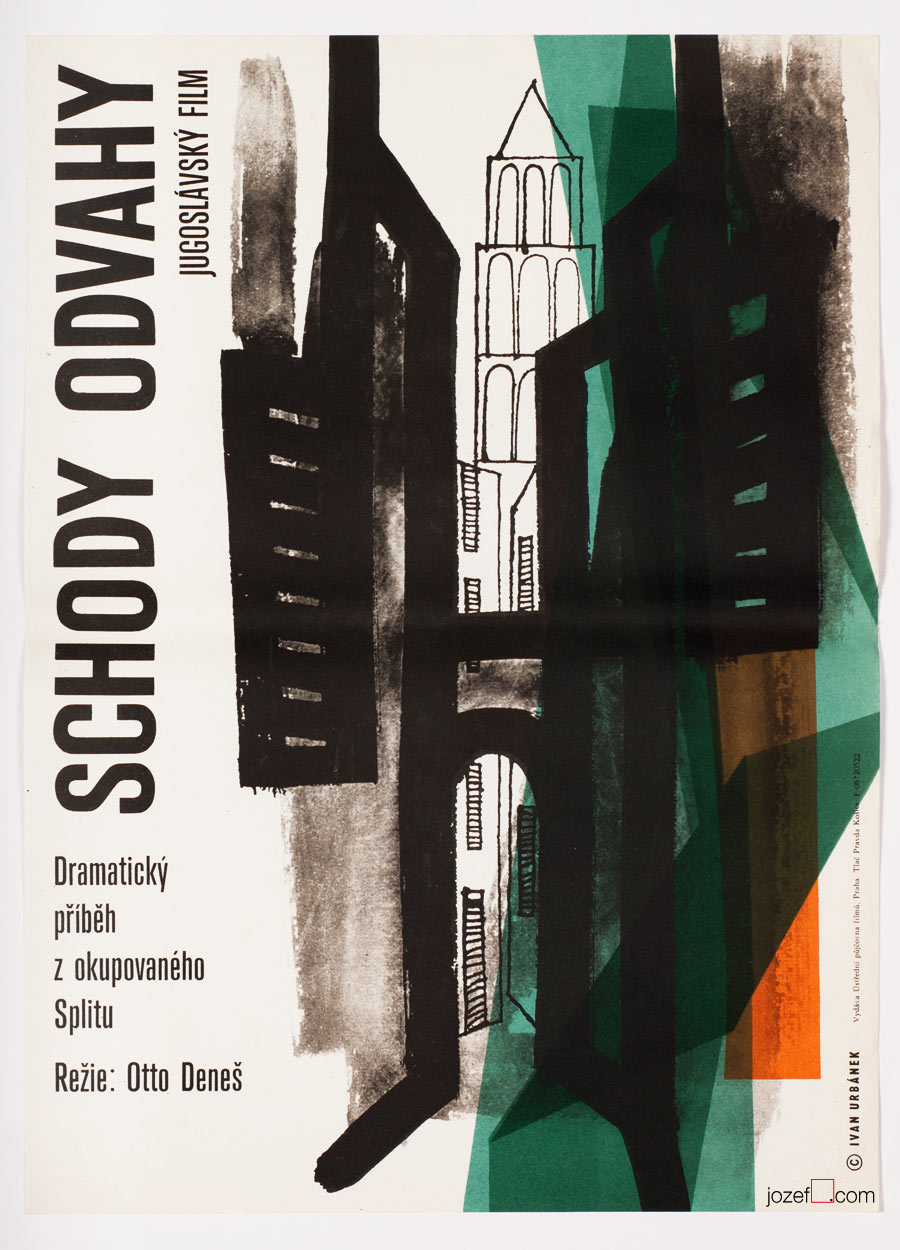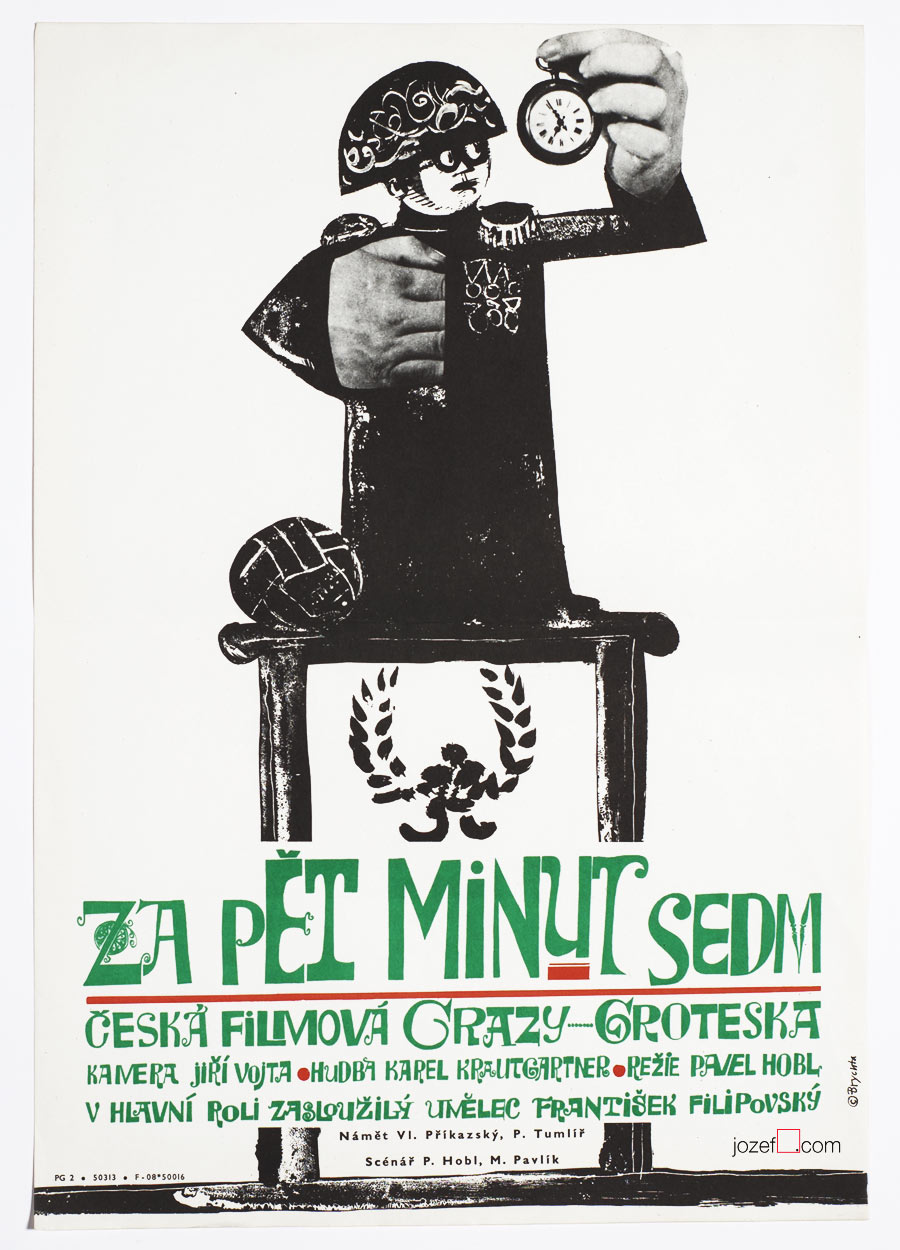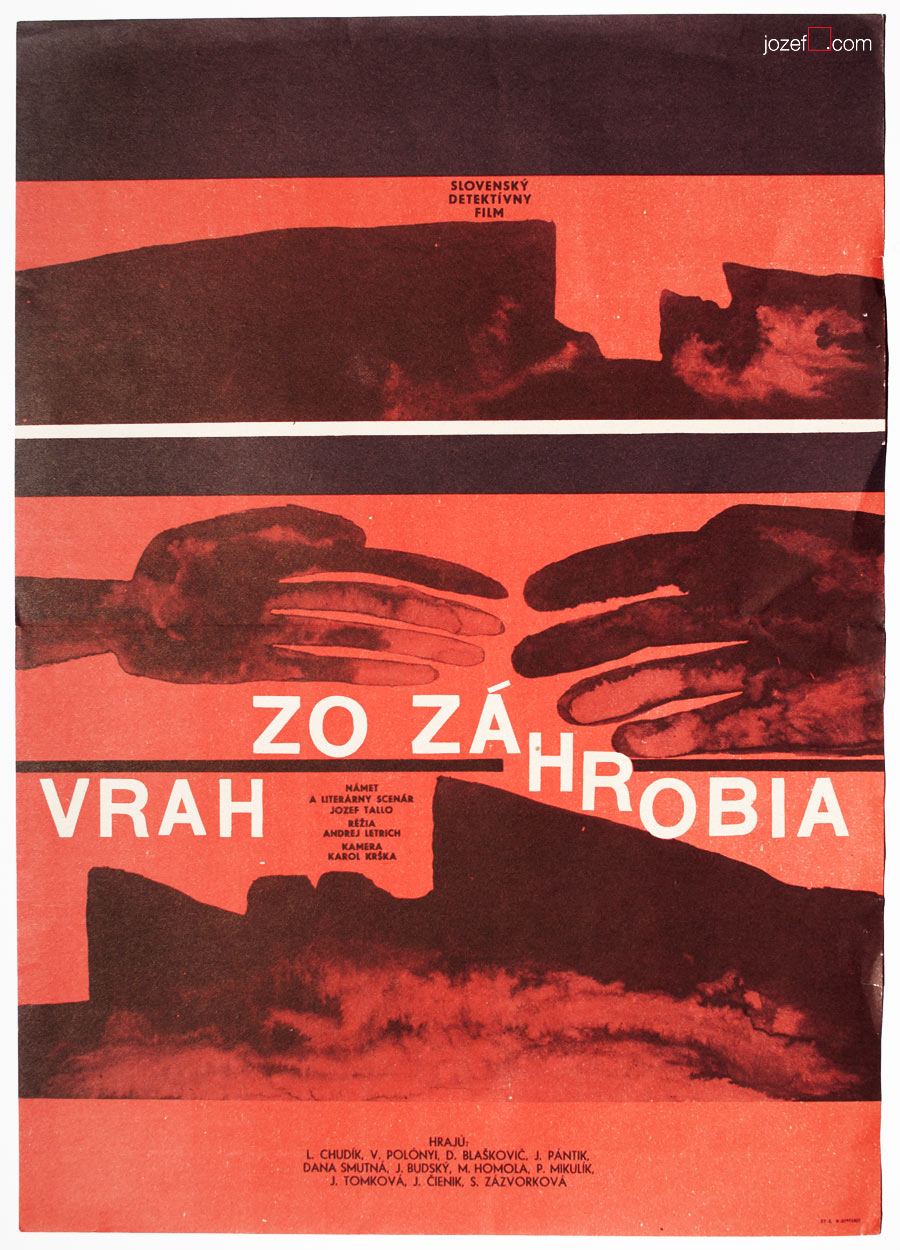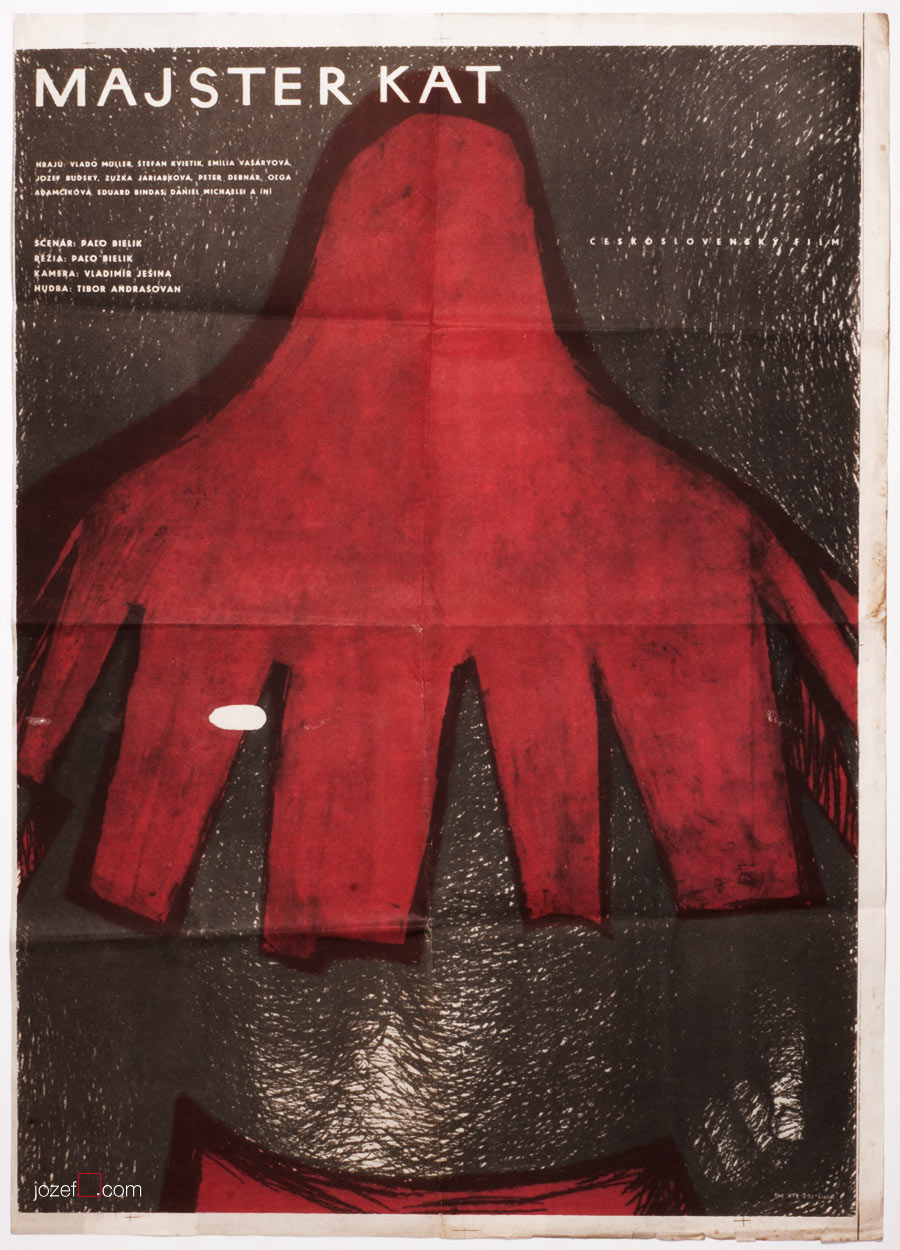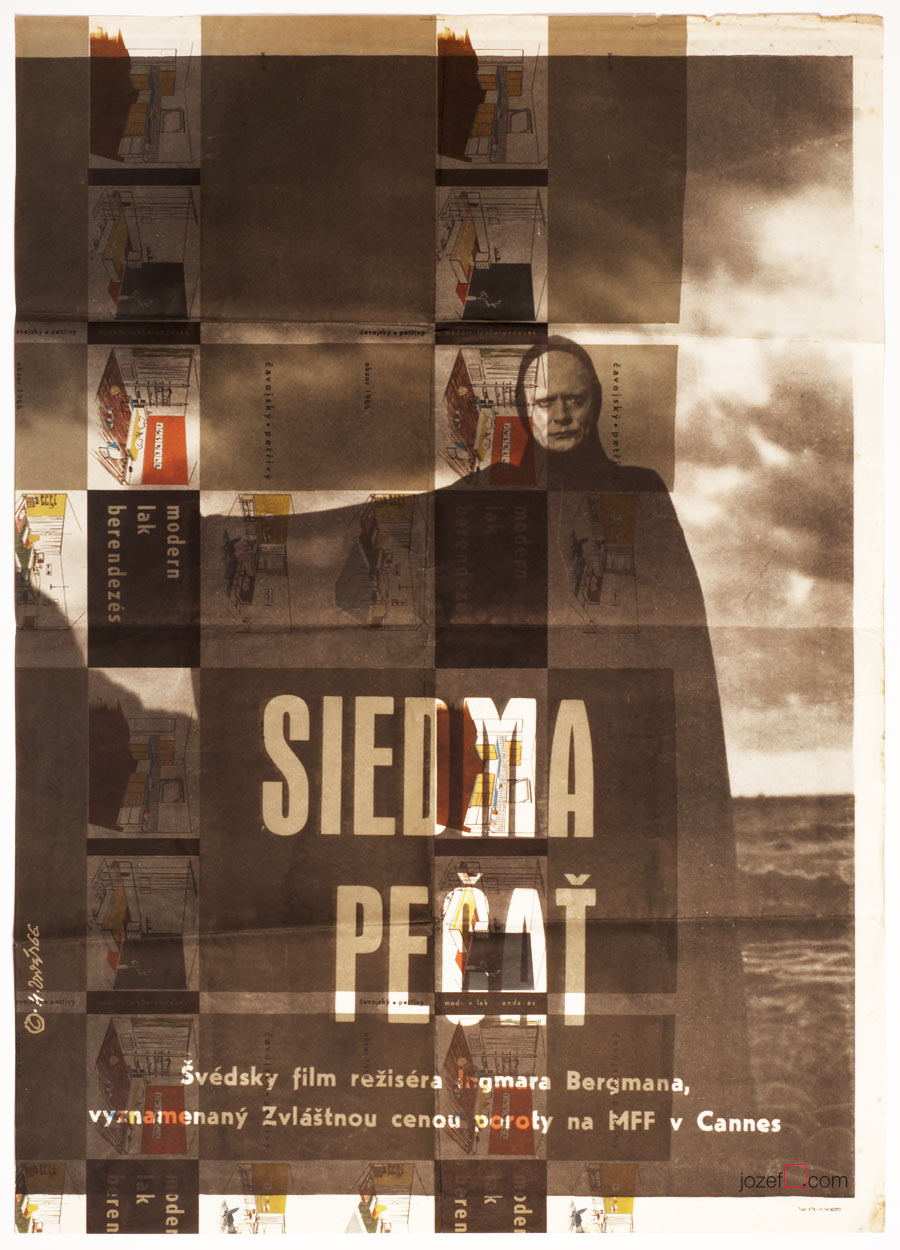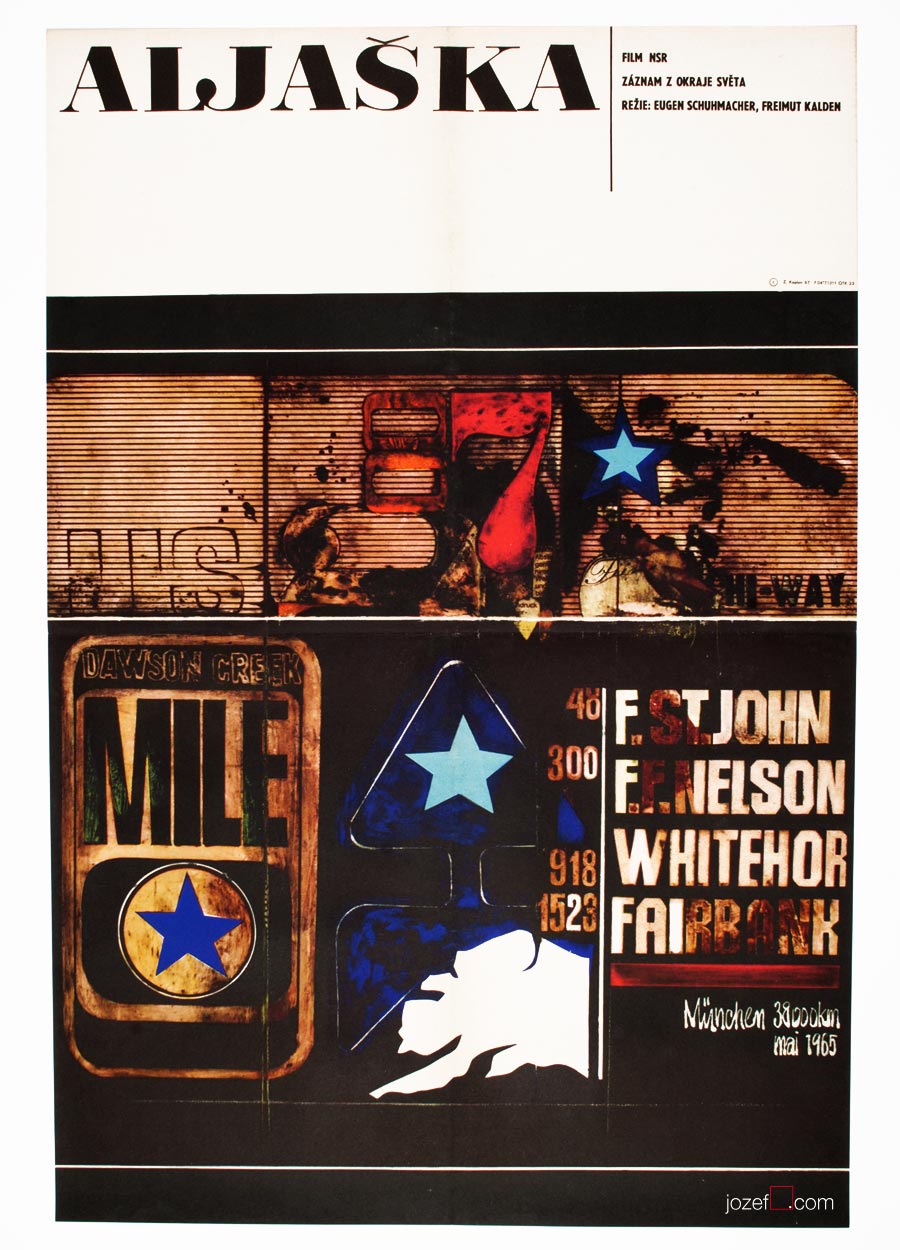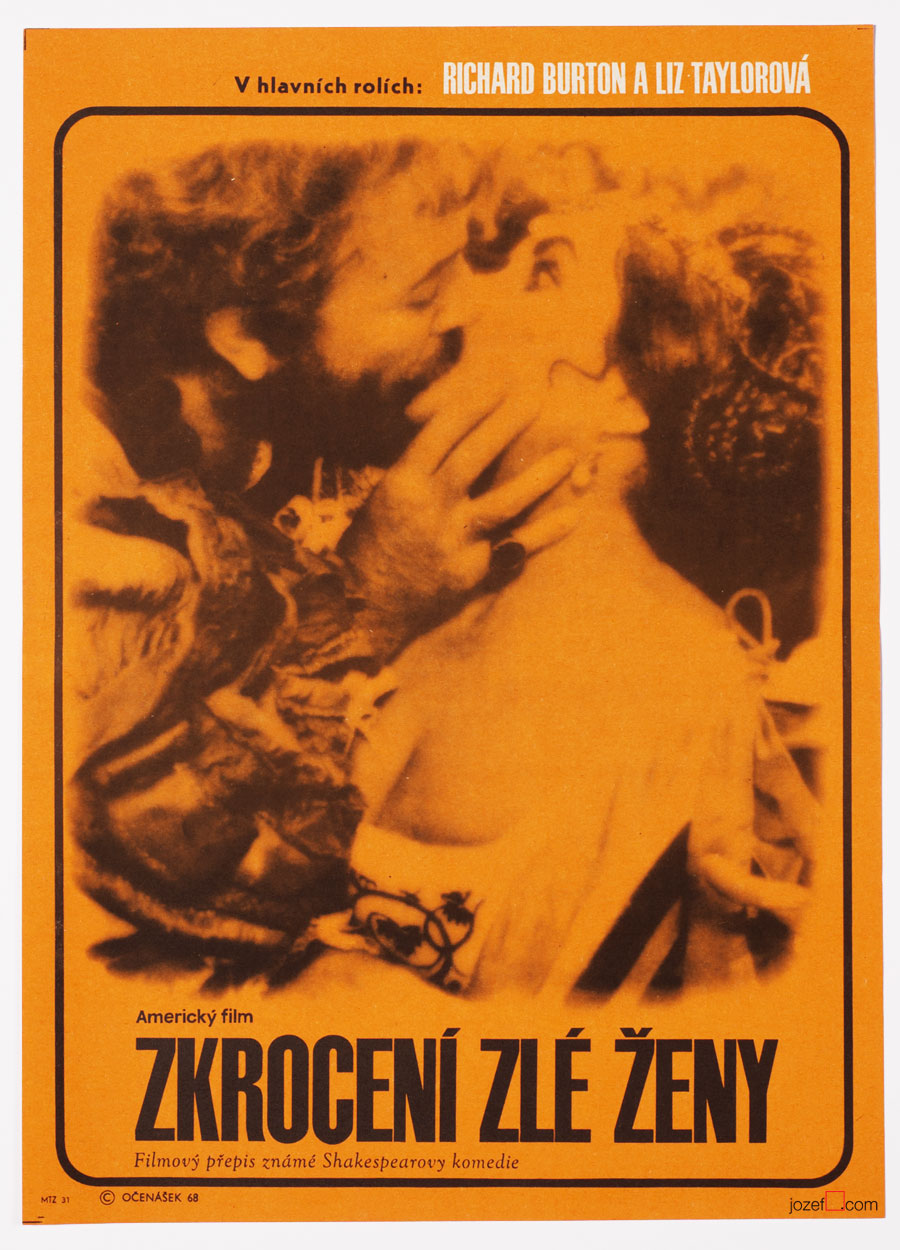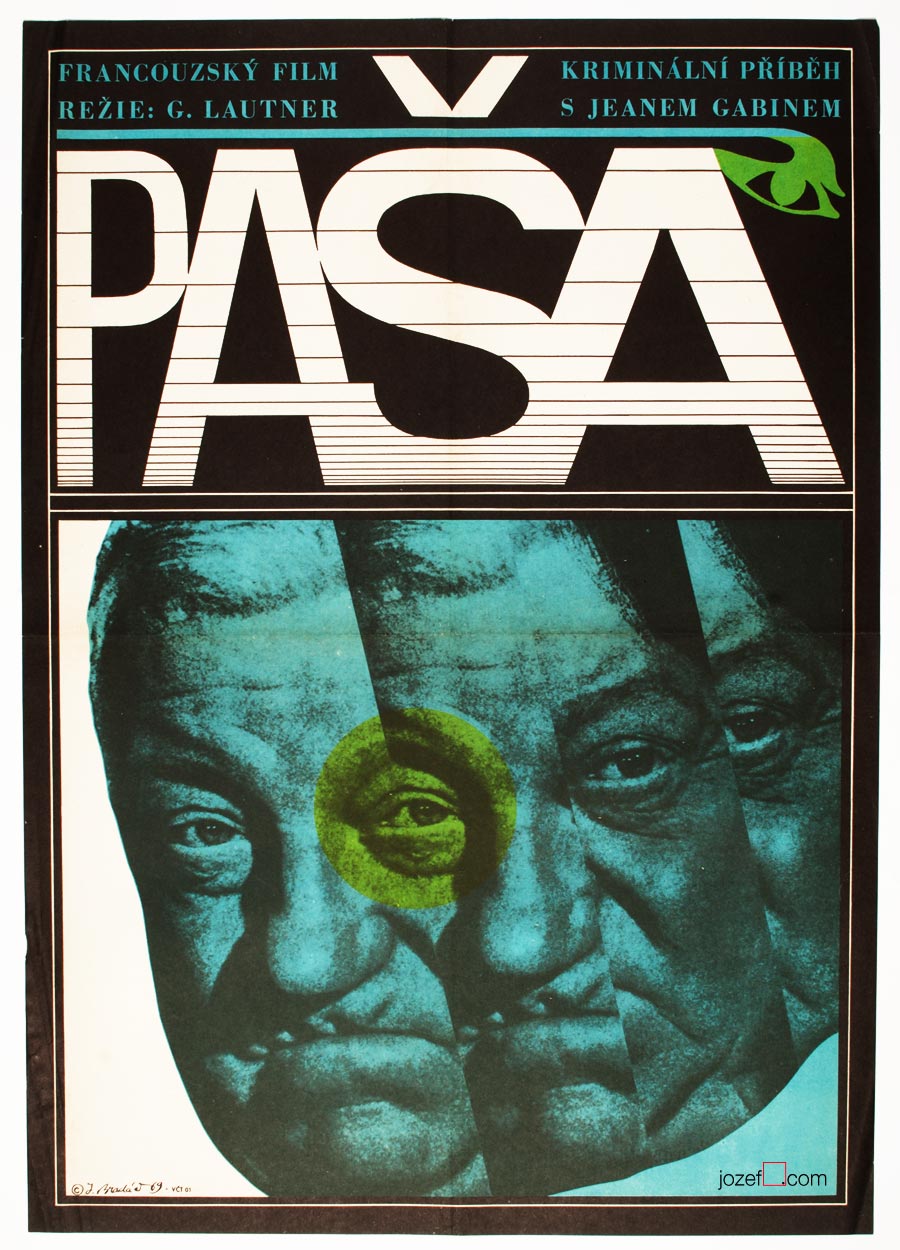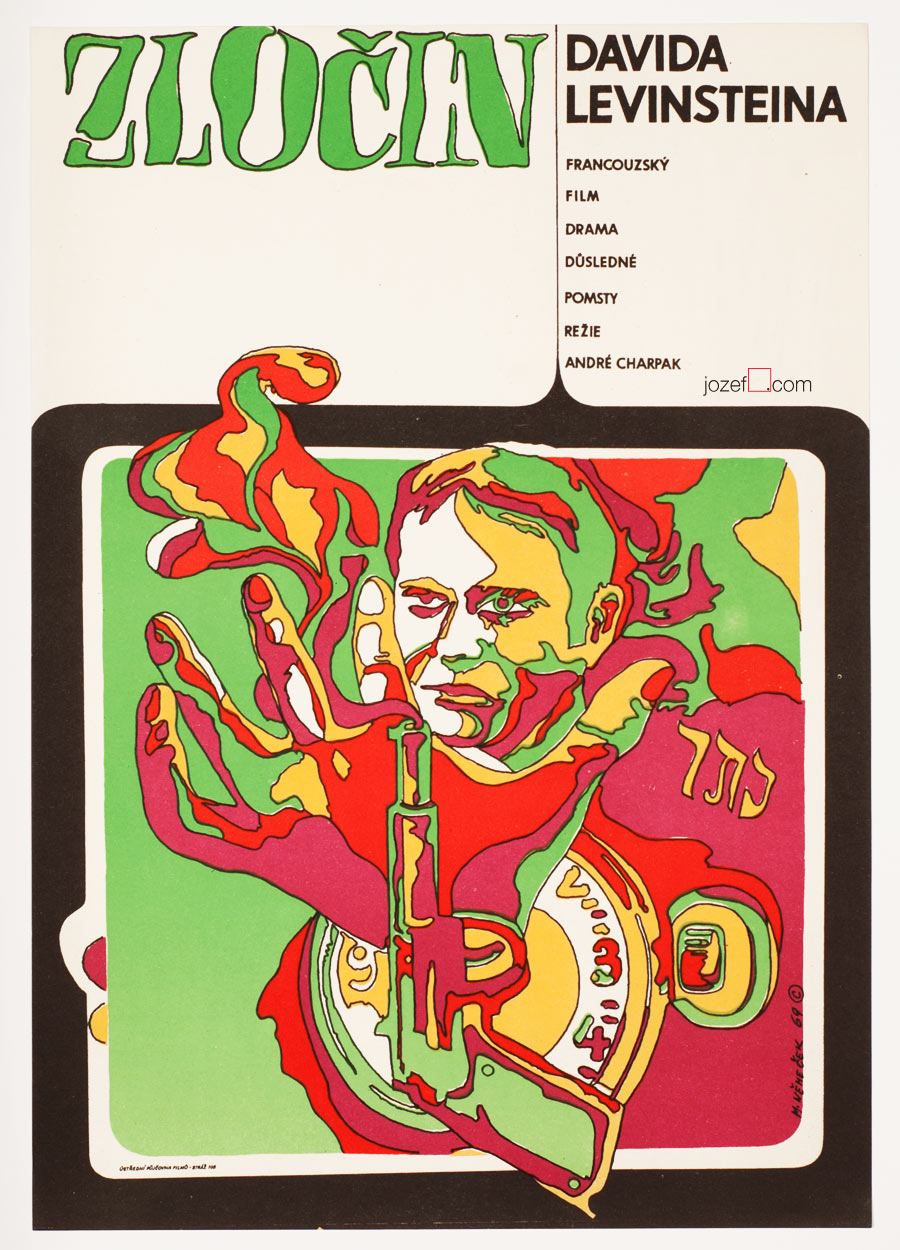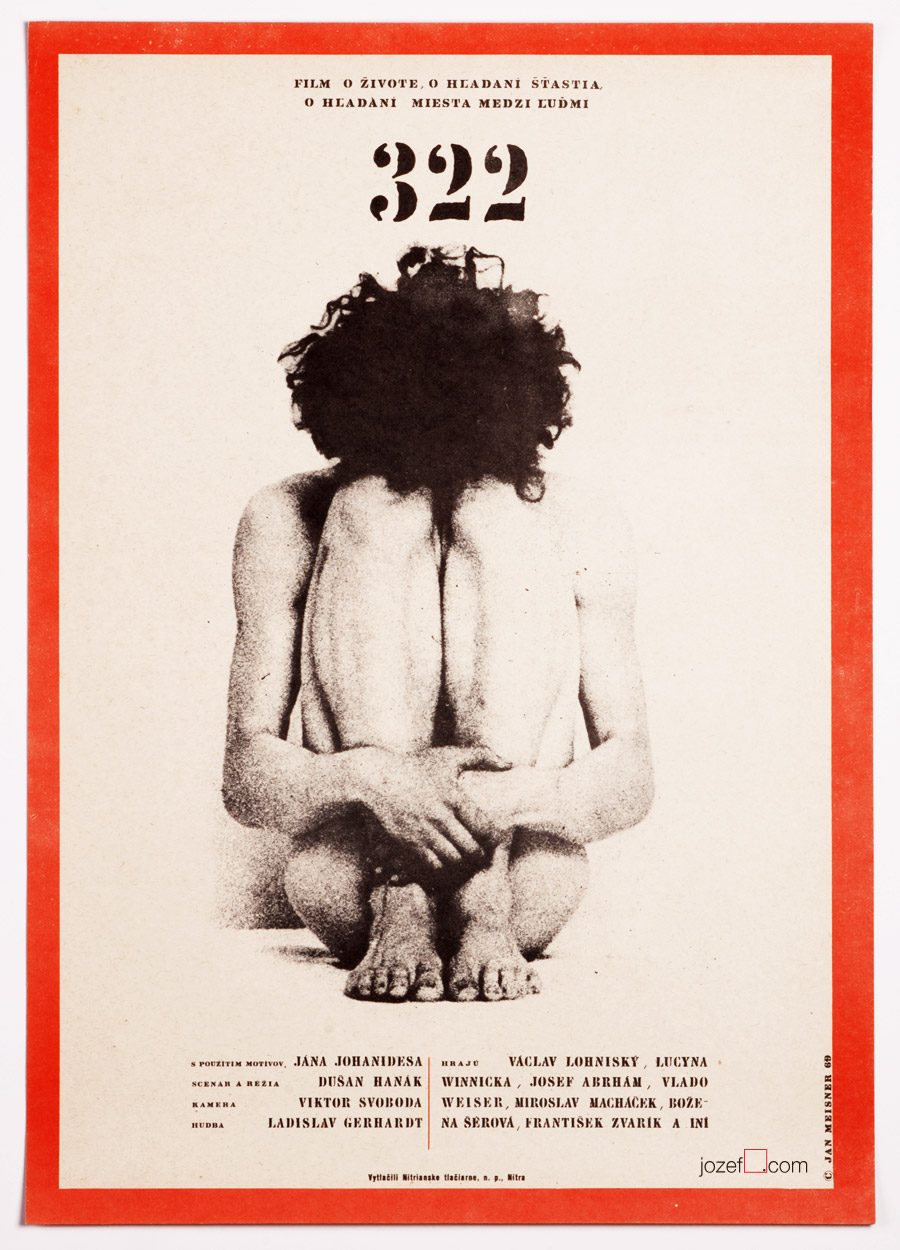Poster Designs / Sixties – Stanislav Vajce. The Story of Film Posters.
Film posters in history. Sixties poster designs.
Poster Designer / Stanislav Vajce
Applied Arts / Graphic Art / Fine Art / Sculpture
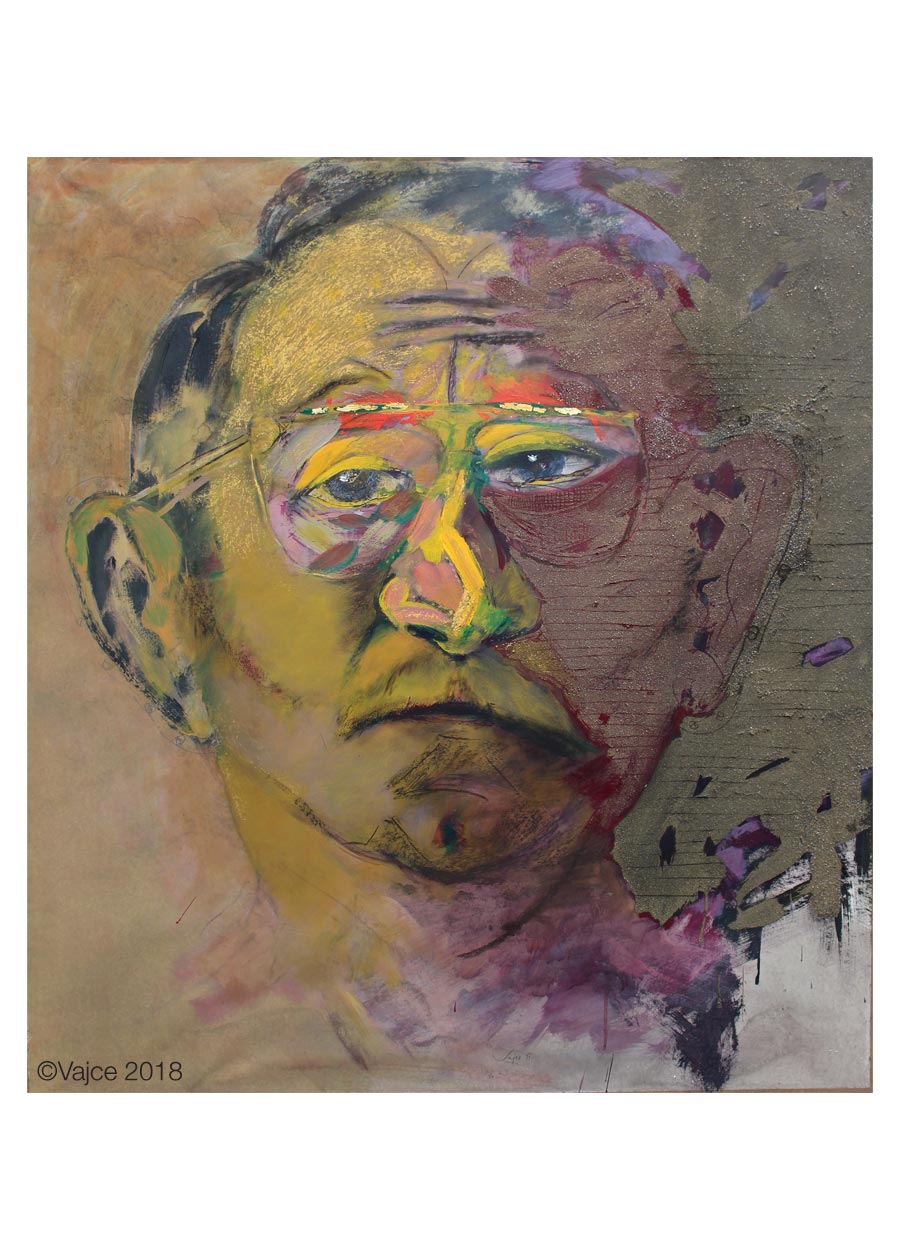
- b. 26th April 1935, Klatovy, Czech Republic
Education:
- 1954 – 1958, Secondary School of Applied Arts, Uherské Hradiště (Hroch Vladimír)1
- 1958 – 1963, Academy of Arts, Architecture and Design in Prague (Alois Fišárek)
Exhibitions (selected):
- 1969 – Junge Künstler aus der ČSSR, Haus am Kleistpark, Berlin2
- 1969 – Tschechoslowakische Plakate, Kunstgewerbemuseum Zürich
- 1972 – Eva Vajceová, Stanislav Vajce, Galerie bratří Čapků, Prague
- 1983 – Tjekkisk Kunst i Danmark, Kobenhavn
Awards:3
- 1965 – Rodriguez Acosta Prize
- 1968 – 1st prize for relief/sculpture made for 50th Anniversary of Czechoslovakia
- 1968 – 1st & 3rd Prize, Poster Exhibition, Brno Biennials, Czech Republic
- 1982 – Grand Prix for portrait work, Tuzla, Bosnia and Herzegovina
- 1984 – Prize of the Ministry of Culture of Bosnia and Herzegovina for portrait work at International Biennial of Portrait, Tuzla
•••
•••
[quote]“Stanislav Vajce’s art of painting – if by this we mean the art of masterfully guiding the brush – resolutely rejects the academic approach to painting and replaces it with a sensitive and sweeping painting style.”4 [/quote]
It’s almost tradition that many Czechoslovak poster designers were involved in painting or had some sort of fine art study background. 1950s were accumulating incredible potential and vitality among artists, but political climate of totalitarianism was breeding machine-like art and did not allow any personal burst out.5 In mid 50s Stalinist era was slowly ceasing to extinction and for the following decade Czechoslovakia was witnessing quite surprising changes. Many artists were meeting up in newly created art groups or were allowed solo exhibitions. However, political apparatus was still in charge as the movie poster commissioner had a good number of contemporary artists circulating on their list.
•••
•••
Pure fascination awaits for those who choose to observe movie posters of Stanislav Vajce closely. His inspiration seems endless and same goes to his ability to work with such an infinity. Stanislav Vajce’s devotion to art matter started fairly early in his age. As a 15 year old boy, he traveled daily to Klatovy in order to apprentice as a sign-painter and gilder.6 This affection remained with him ever since; in his future art, as well as he was frequently using gold and hand typing in his poster work.
•••
[quote]“Vajce is also in habit of listening to music while painting when he is alone in his studio. ”7 [/quote]
•••
Stanislav Vajce’s movie posters are real joy to look at, he blends many different techniques that are meeting in very amusing results. There is no limitation to his designing approach. He likes to play with the surface and texture, mixing montage, collage and obviously the brush stroke. The use of every day objects and body parts are repeatedly reoccurring. His use of eye cutouts is almost as striking as the famous scene’s from Luis Buñuel’s and Salvador Dalí’s Un Chien Andalou, eye element keeps returning in several of his posters. Stanislav Vajce’s poster designs are only a step away from his paintings, but unlike in his fascinating assemblages, he likes to employ that cinematic touch in his posters and that is the use of the photograph. Breaking boundaries (in design) seems the most natural to him. His movie posters are pure visual poetry with certain tenderness and delicacy.
•••
•••
Between 1964 − 1972 Stanislav Vajce designed 24 movie posters. He emigrated together with his family to West Germany in 1987 where they live ever since.
•••
Interview with Stanislav Vajce’s wife Eva:
We felt very privileged and lucky at the same time when we’ve heard from Stanislav Vajce’s daughter in law Kirsten. We are willing to make an interview with exile poster artist for so long and are constantly trying to find those “channels”, but we were never as close. It did not take long and we were granted with the reply from Stanislav’s wife Eva Vajce89 . We were very happy to find out that she would try to answer some of our questions. Unfortunately Stanislav Vajce’s health does not allow him to participate in this interview. Several questions regarding actual poster designing processes had to be deleted, but we believe Mrs. Eva’s fascinating replies are telling more than we could ever ask for.
[quote]“At the beginning I have to let you know that my husband is seriously ill and unfortunately he will not be able to give answers to your questions. In regards to your effort in trying to approach Stanislav, I would love to try to answer some of them, at least briefly, according to my knowledge.”[/quote]
We’ve learned that after your studies at Secondary School of Applied Arts in Uherské Hradiště (1954 – 58) you graduated from Academy of Arts, Architecture and Design in Prague (1959 – 63). What were the possibilities for a young graduate of the art school in the mid 1960s in the totalitarian state, in embrace of Communist propaganda and social realism?
[quote]“My husband studied at the Academy of Arts, Architecture and Design in Prague a monumental painting under the supervision of professor Fišárek. Since he was not in the Communist Party, he did not expect to be able to live of painting, or to get any sort of architectural commissions and began to devote himself to book graphics. He discovered the art of gramophone record covers was not efficient enough. Record company Artia10 had business success around the world with top-class recordings of classical music, but had sales difficulties due to the appearance of the product. Records with his packaging were the attraction for foreign buyers. Along with that, he started to design posters, illustrations, etc.”[/quote]
Between 1964 – 1972 you’ve been working on movie posters, similarly as many other contemporary artists. Why was the poster making so popular among artists and what brought you to designing?
[quote]“Poster designs were relatively well paid at that time, thus quite a fight/competition among the graphic artists, it was simply a question of existence. Otherwise, my husband did not belong to these typical “graphic artists”, which is why, as I suppose, he was not represented on poster exhibitions, even though the quality of his work deserved it. On the contrary he did not care about the appreciation, it was indifferent and unfamiliar to him. The commissions for the posters were coming from Mrs. XX, I do not remember her name anymore, because Stanislav was sympathetic and did not ask for any. There was the so-called art committee made out of artists such as Vaca, etc., similarly as with all art commissions. The members of such a committee were nominated by the Union of Fine Artists and they were politically engaged to the party, in many times it did not matter how good their art was. The most of the contracts were distributed among themselves. If Stanislav occasionally passed, it was always because of the high quality of his artwork, he was always aside of art groups or unions. Graphic artists were holding together quite strongly. Perhaps, in my opinion, they had complex from “painters”.[/quote]
1960s have brought considerable liberalisation to countries such as Czechoslovakia. Changes have been evident in literature, film and art as such. State borders ceased to be as much guarded and few artists at that time managed to present their work also abroad. The films of the Czechoslovak New Wave won several awards at major film festivals and Czechoslovakia reappeared on the map of the world. Film posters took place in international competitions and many artists have been featured in such prestigious magazines as Graphis or Gebrauchsgrafik. However occupation of Czechoslovakia by the associated states of the Warsaw Pact at the end of August 1968 made early end to all of this. Normalisation has prevented many artists from continuing to work, some have been forced to emigrate, and many names have disappeared from poster scene. How did the situation after August 68 reflected on your work?
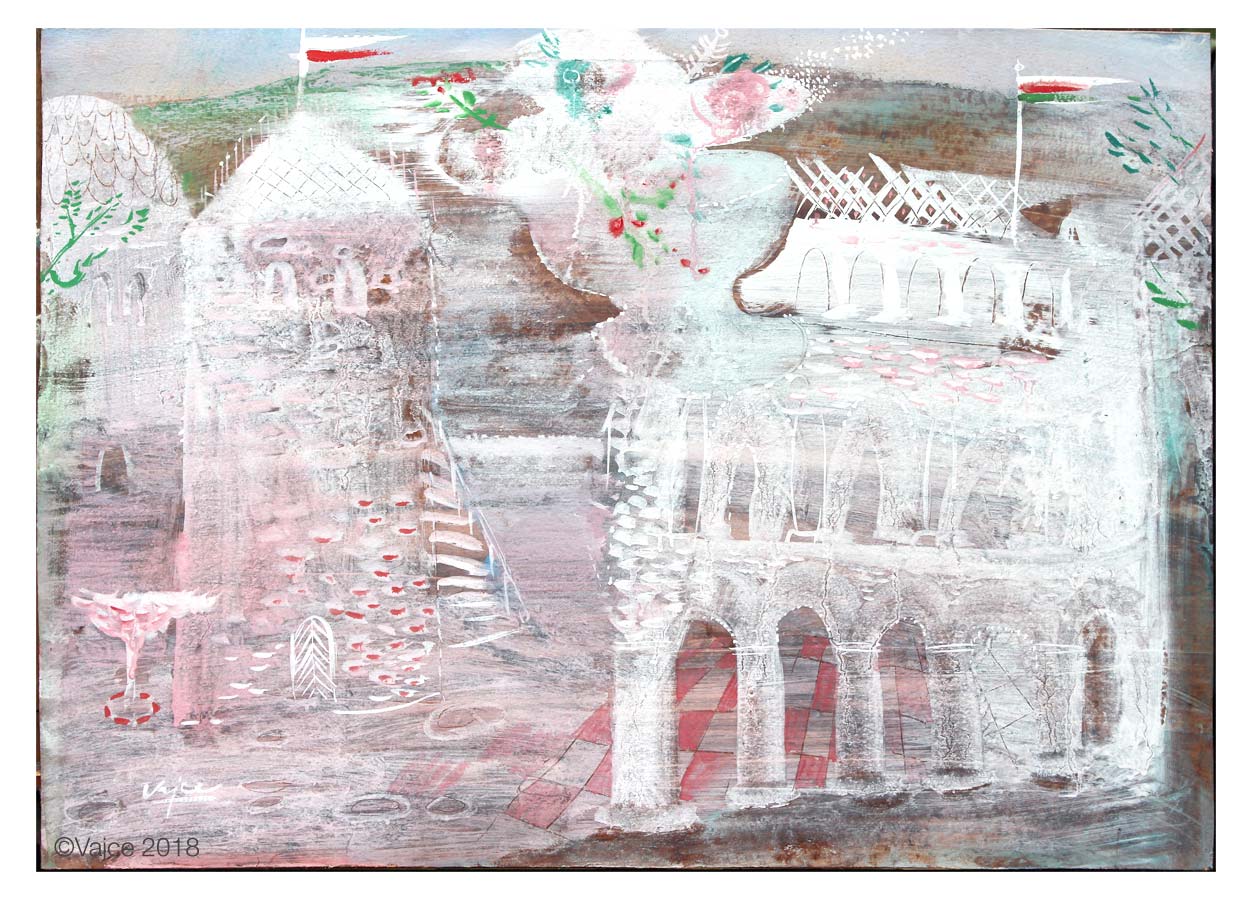
[quote]“In 1966, we managed to travel to Italy and my husband fell in love with Italian countryside. After our return, he began to paint pictures inspired by this journey and by chance, the head of one of Dílo’s galleries (“Artwork” Gallery – which was the sales section of the Union of Fine Artists) who saw them in the studio persuaded my husband to put them on sale. Since all the works of art had to go through the committees consisting of artists with party and political commitment and approval, the matter was rather disgusting. Still, here and then they had been forced to approve some of his work, so he devoted himself much more to painting.”[/quote]
[quote]“The most important for Stanislav was that his paintings had a great response and many were sold. Directors of Dílo Galleries had to show revenue, so they were trying to commission husband’s paintings by personal agreement with agents, etc. The secretary of the Union of Fine Artists Dr. Lhota was also admirer of husband’s work and if there was any show cancellation and exhibition gallery became vacant, he literally sneaked my husband in within very short notice.”[/quote]
[quote]“Another one of his admirer was the poet Karel Sýs, a convinced communist, to whom my husband illustrated poems. Karel Sýs had a great literary interest in husband’s art and because he was the editor of Rudé Právo11, he enforced publishing. On one hand, we were spied on, because of our religious foreign ecumenical engagement and political dubiousness, on the other hand my husband had influential advocates who tried to make his work available to the public. It was all due to the fact that his paintings were irresistible for the large audience, art collectors and exhibitors had great success with them.”[/quote]
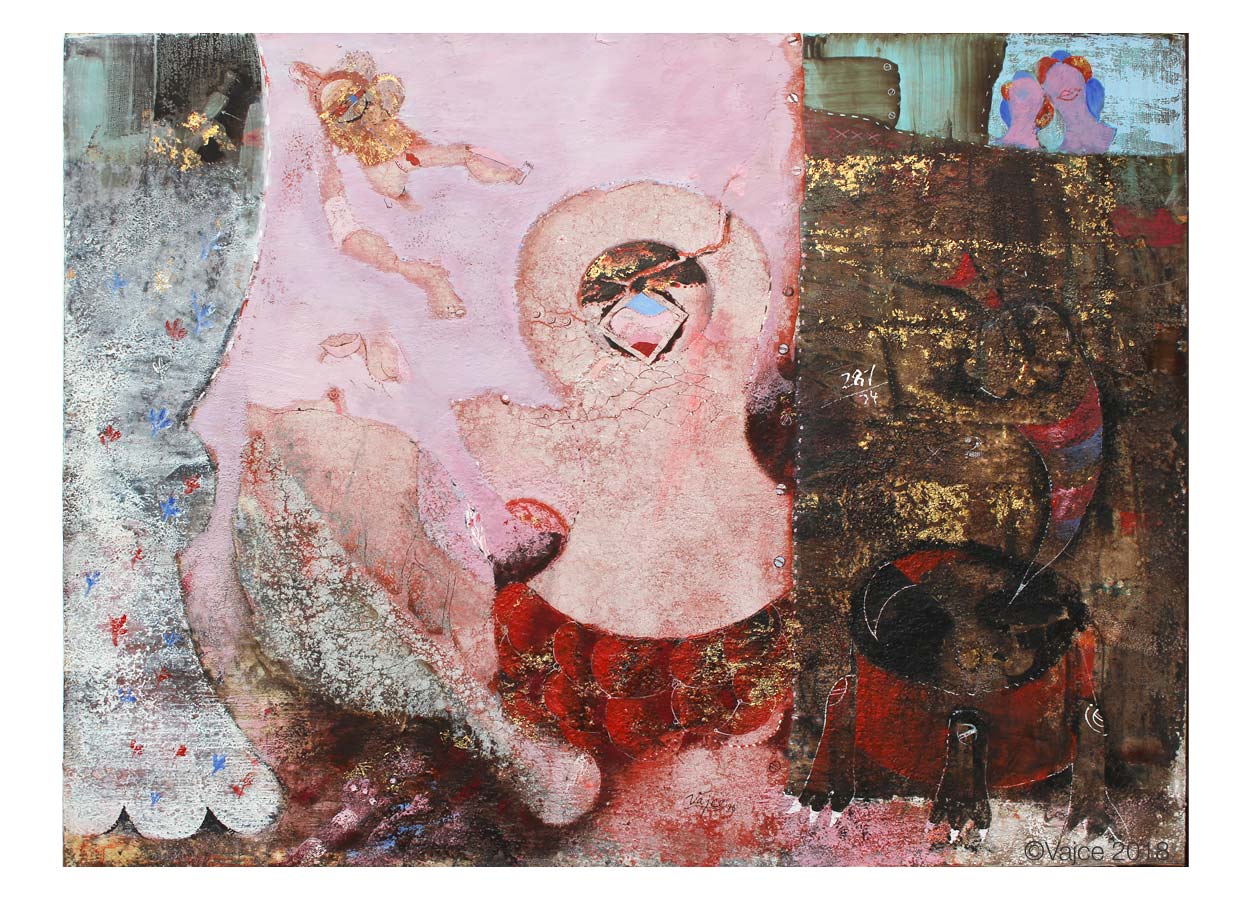
[quote]“Such a system was censoring all of the artistic activities, not only for graphic art and that was the biggest dirt (not to be called otherwise). The system allowed to distribute contracts among artists not by the quality of their work, but because of the political engagement. Simply said.”[/quote]
[quote]“From my own experience in 1986, when committee openly said to the architect and investor: Vajce does not get an approval stamp on her proposal, she had guzzled enough already, she will never get a bite again, literally in exactly same words. (I previously won an anonymous competition where members of the government committee and architects mistakenly assumed I was in the party, and because they liked my proposal the most, they overpowered the Union of Fine Artists (fiasco). This is just to illustrate the situation, I’m writing to you openly, as it was.”[/quote]
It is clear that the main poster commissioner was ÚPF (Ústřední Půjčovna Filmů / Formal state distribution 1957-1991) with its own censoring committee that was deciding which posters could go into distribution. In article with Zdeněk Ziegler we read that some of the poster designers as Karel Vaca, or Dobroslav Foll were also part of such a committee.12 Could you describe a little how was approval process working and what were the selection criteria? Or were there any taboos that were not permitted to be shown?
[quote]“As I see it, the main criteria was money distribution.”[/quote]
It’s almost half of the century that you have not been designing film posters, nevertheless they still look very modern and impressive. How do you personally perceive them after such a long distance of time?
[quote]“In my opinion, they appear in such a way, because graphic art was always taking part in Stanislav’s versatile art besides of illustration, landscape painting, portrait, drawing, monumental painting, sculpture.”[/quote]
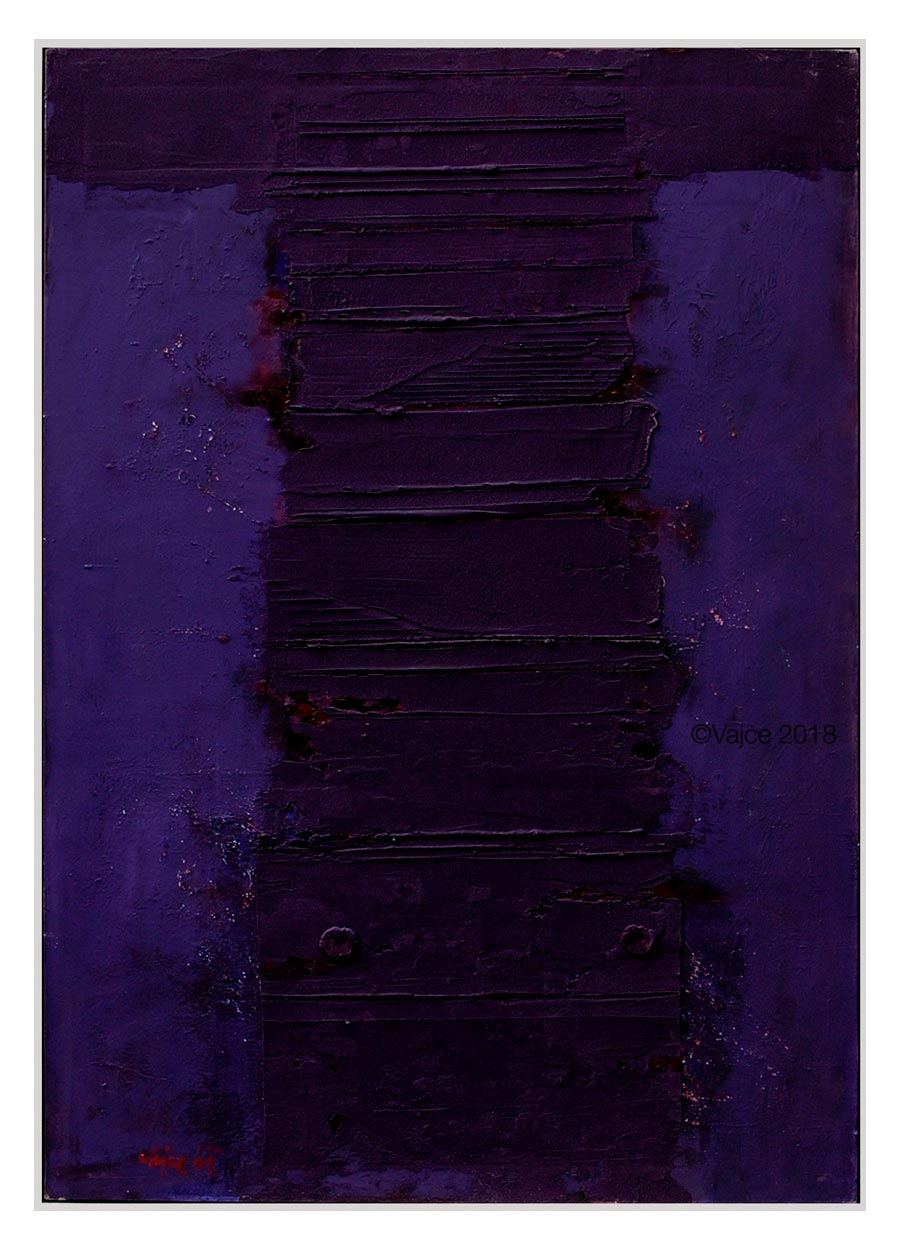
Many thanks to Eva & Stanislav Vajce for sharing their precious time and knowledge with us.
•••
Examples of record sleeves designed by Stanislav Vajce:
•••
Please see other fascinating posters designed by Stanislav Vajce.
•••
Resources:
Literature:
- 3. Milena Klasová: Stanislav Vajce / Galerie Klatovy, 2015 / published for Stanislav Vajce’s retrospective, also printed debut about artist
- 4.6.7. Milena Klasová: Stanislav Vajce / Galerie Klatovy, 2015, p.119, p.26, p.133,
- Collective authors: Czech film posters of 20th century / The Moravian Gallery in Brno, Exlibris Prague, 2004.
- 12. Flashback / Czech and Slovak Film Posters 1959-1989, ed. Libor Gronský, Marek Perůtka, Michal Soukup, Olomouc Museum of Art, 2004, p.34 (Welcome to hard times… by Zdeněk Ziegler)
Online:
- 8.9. abART / Eva Vajce + Eva Vajce’s artwork showcase
- 1.2. abART / Stanislav Vajce
- 5. more about the situation in art schools in the article about Bedřich Dlouhý, see NEGLECTING THE ART
Additional online research:
- 80th birthday anniversary exhibition of Stanislav Vajce in Galerie Klatovy, Czech Rebublic, 1. 2. – 6. 4. 2015
- 10. Artia Record Company
- 11. Red Justice / The Red Truth – official newspaper of Communist Party of Czechoslovakia
Images used:
- Stanislav Vajce’s record covers: discogs.com
- Images of Stanislav Vajce’s artwork are property of the artist and are all copyrighted.
•••
Note: this showcase is part of our ongoing article Film posters / Made in Czechoslovakia. The story of film posters, please read Take 1 / Take 2, or see artist’s INDEX for more blog posts.
•••
For shop and blog highlights, please SUBSCRIBE to our weekly newsletter.

